Some of the most beautiful work of this craftsman, and many others, are in this book “Liège Gunmakers through their Work. 1800 - 1950”.
For more detail see: LIEGE GUNMAKERS
PIRLOT Frères
I've been submitted for "expertise" a
Chamelot-Delvigne-Schmidt revolver (clearly marked CDS) manufactured by Pirlot
Frères. It bears the hallmarks of the Liège BE.
It is clearly the Swiss model 1872 modified in 78 for
centerfire (originally CDS and manufactured for Switzerland by P.F.), but:
- for Switzerland, it should be in 10.4 caliber, but it
is in 450 caliber
- the 1878 modification reveals notches around the
cylinder rim, into which the foot of the loading gate is positioned (same as the
Fagnus)
So, given these differences, is it possible that there
were "private" Pirlot Frères productions for the Belgian market?
Gilles
It's difficult to confirm this, but everyone knows that
Belgian manufacturers offered their successful models for sale "customized" (an
anachronistic term) according to the wishes of (wealthy) buyers: finish, grips,
barrel length, and caliber.
So it's not surprising to find military weapons adapted
to a caliber other than the original.
Phil HPH.
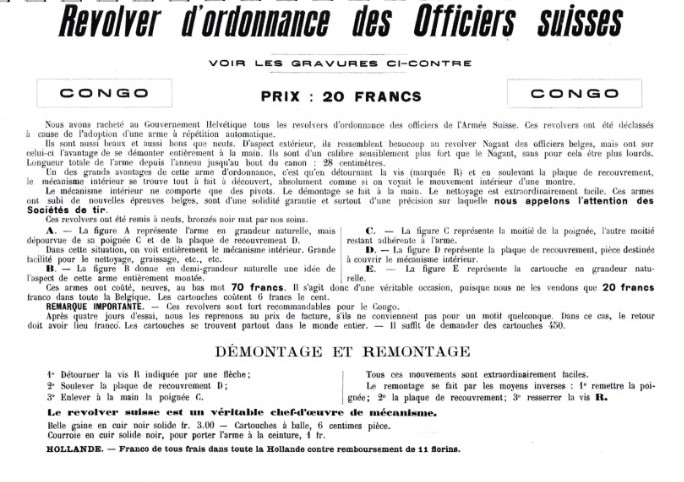
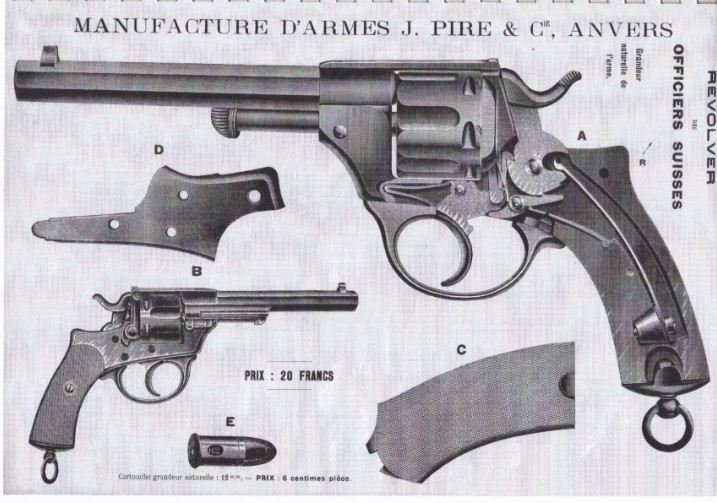


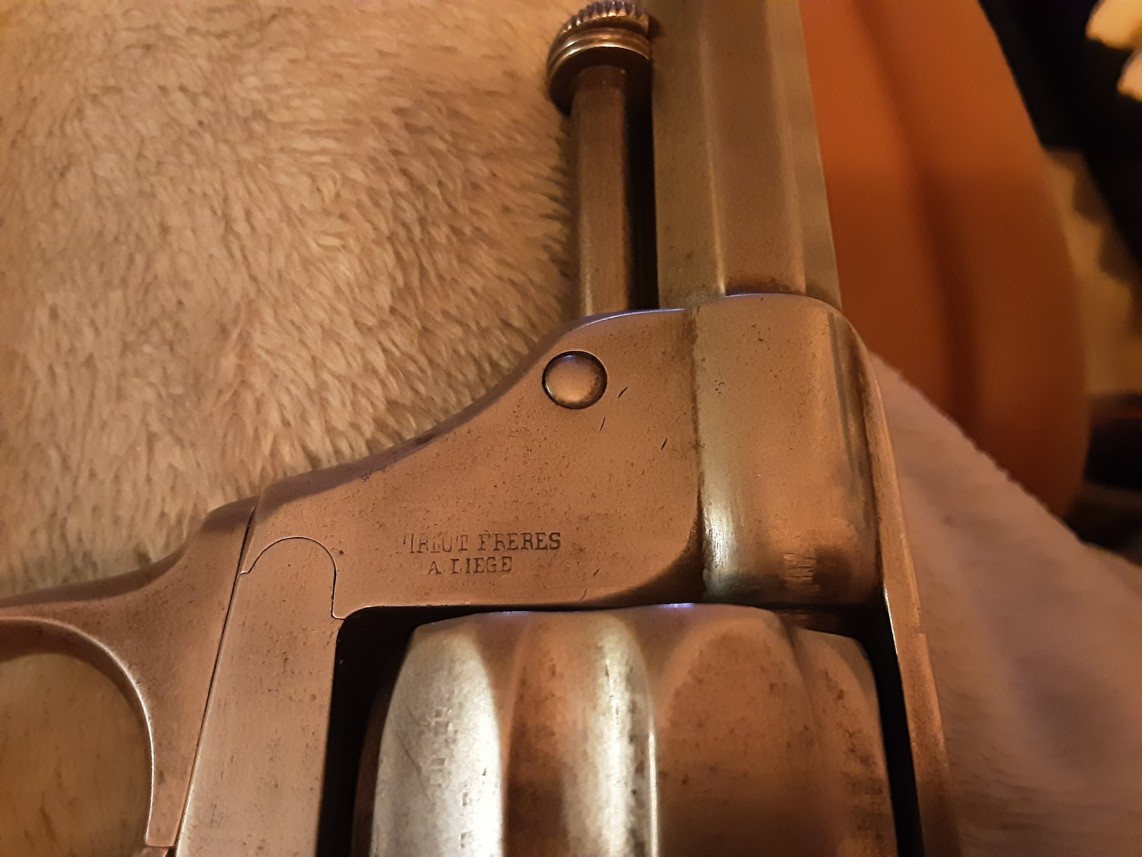
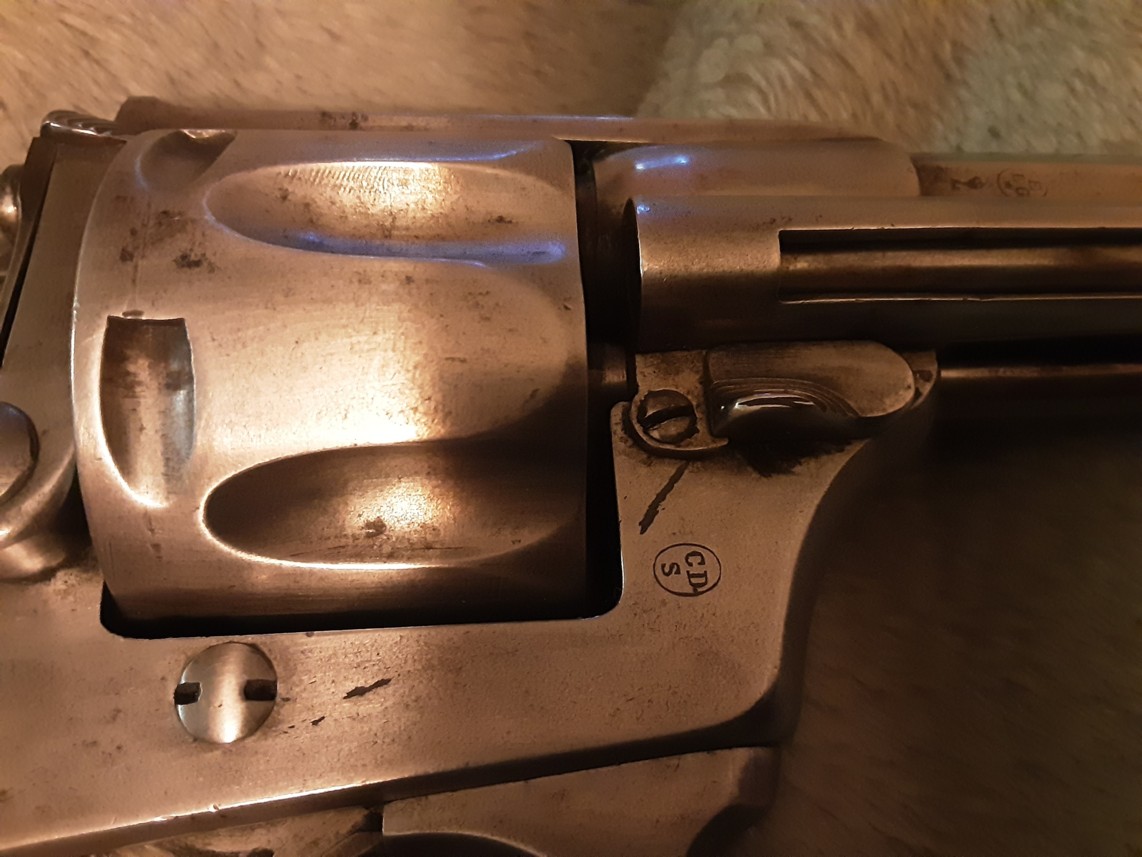

PIRLOT Frères
Here is a
beautiful revolver pinfire well signed E. Lefaucheux Inv. Patented. Round
barrel, probably 9 or 12 mm; the barrel seems to me to have been bronzed. Handle
with bush, cap ring.
The
markings
Number
11288 on the grips and cylinder, while there is a 32955 on the left side of the
lock... strange...
GC: A
comptroller's countermark, between 1853 and 1877.
JC on the
frame: not identified;
B or R in
a circle: not identified.
We can also see what could be a
PF crowned in a
circle, but the crown is not centered. Of
course, we quickly think of
PIRLOT Frères. (I
rule out
PIRLOT and FRESART
- which succeeded
PIRLOT Frères -
since they started in 1879; however, this revolver is - almost certainly -
predates 1879. In any case, they signed
PIRLOT &
FRESART).
Now, we see 1° that the crown is centered on the PF
and 2° that it surmounts an oval. The (normal) crowned PF punch of
PIRLOT Frères
was actually in an oval.
Other
PIRLOT Frères
weapons with either the
PIRLOT Frères
signature or the crowned oval punch (the crown is centered above the two
letters) can also be seen on the site (identified artisans and exceptional
collection).
He thinks he’s a real
PIRLOT Frères,
but whose punch was badly struck on a Monday morning after a Sunday that was too
watered... I don’t agree with that proposition, especially because the crown is
not centered (the punch is badly struck/incomplete). But maybe I’m wrong...
So I
wonder... is this either a marking that has not yet been listed, or is it an
attempt at “fraud”?
The
mystery remains...
Rocour on
the cylinder : this surname has already been extensively mentioned on the site :
http://littlegun.be/arme%20belge/artisans%20identifies%20q%20r/a%20rocour%20fr.htm
It could be the first mentioned,
ROCOUR B.
Concerning
E. LEFAUCHEUX
in Liège, see the site under that name, not only the survey, but also the next
section, and also the exceptional collection.
GP with the help of HPH, PHL and Chris.
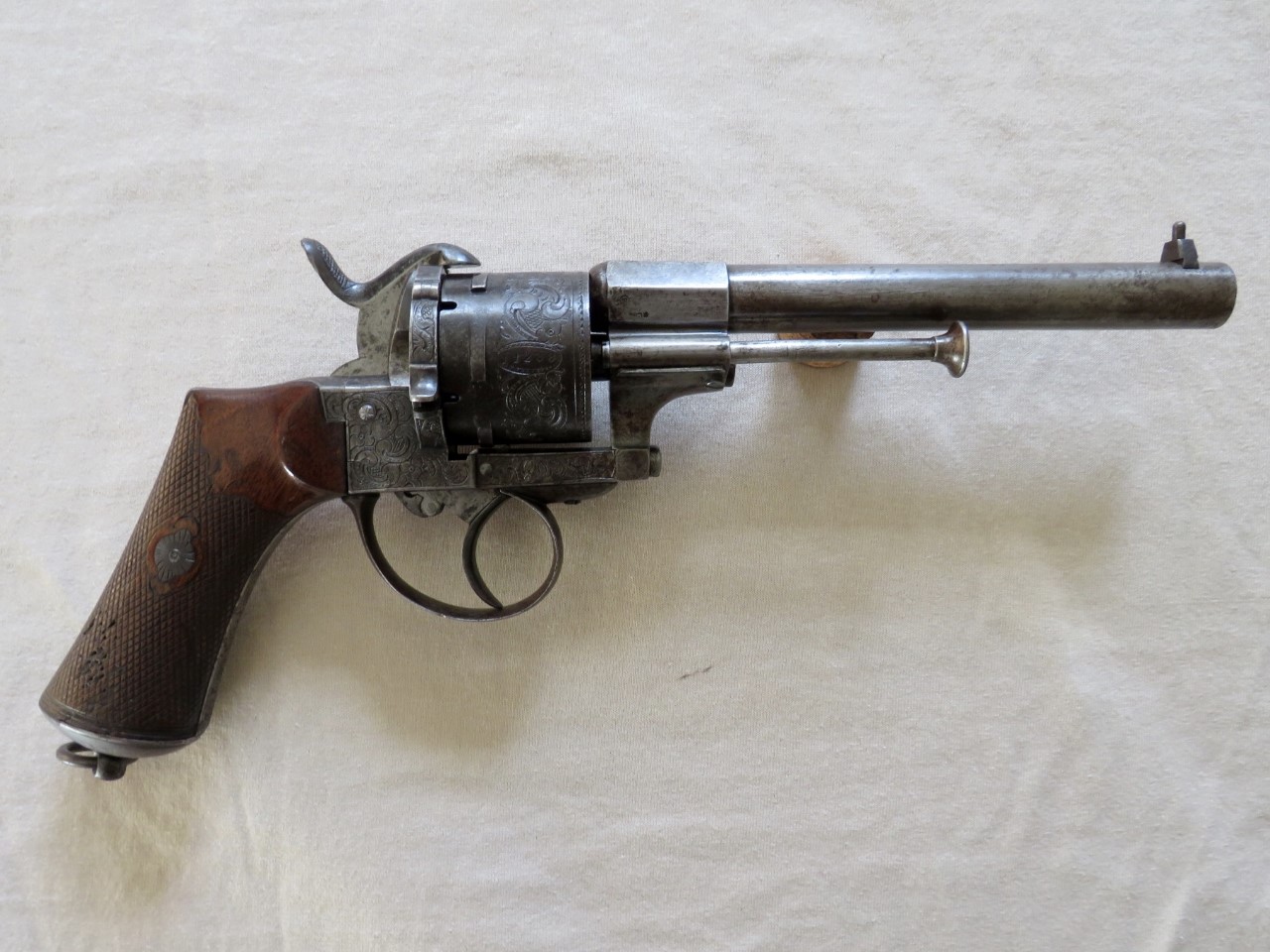

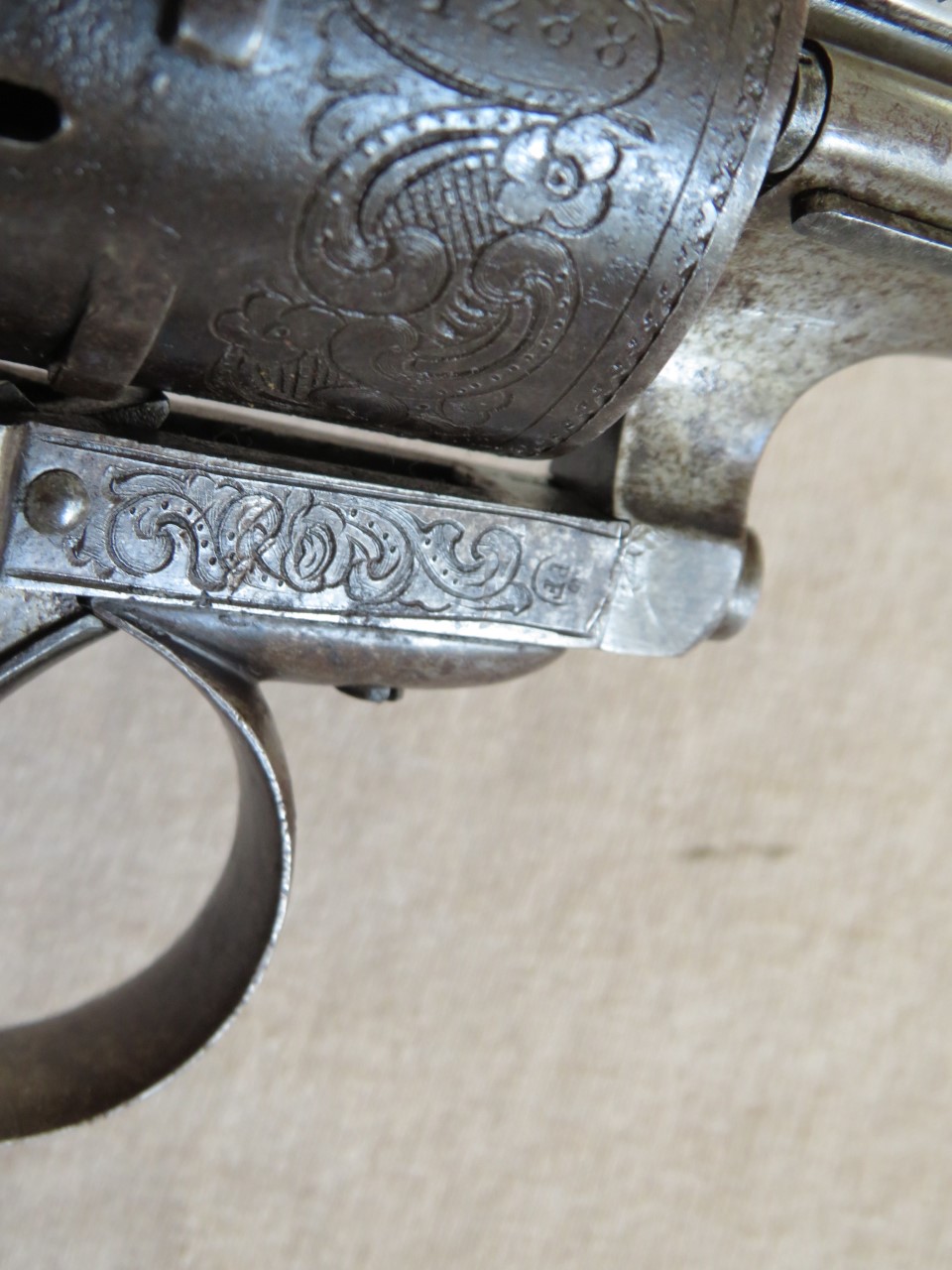
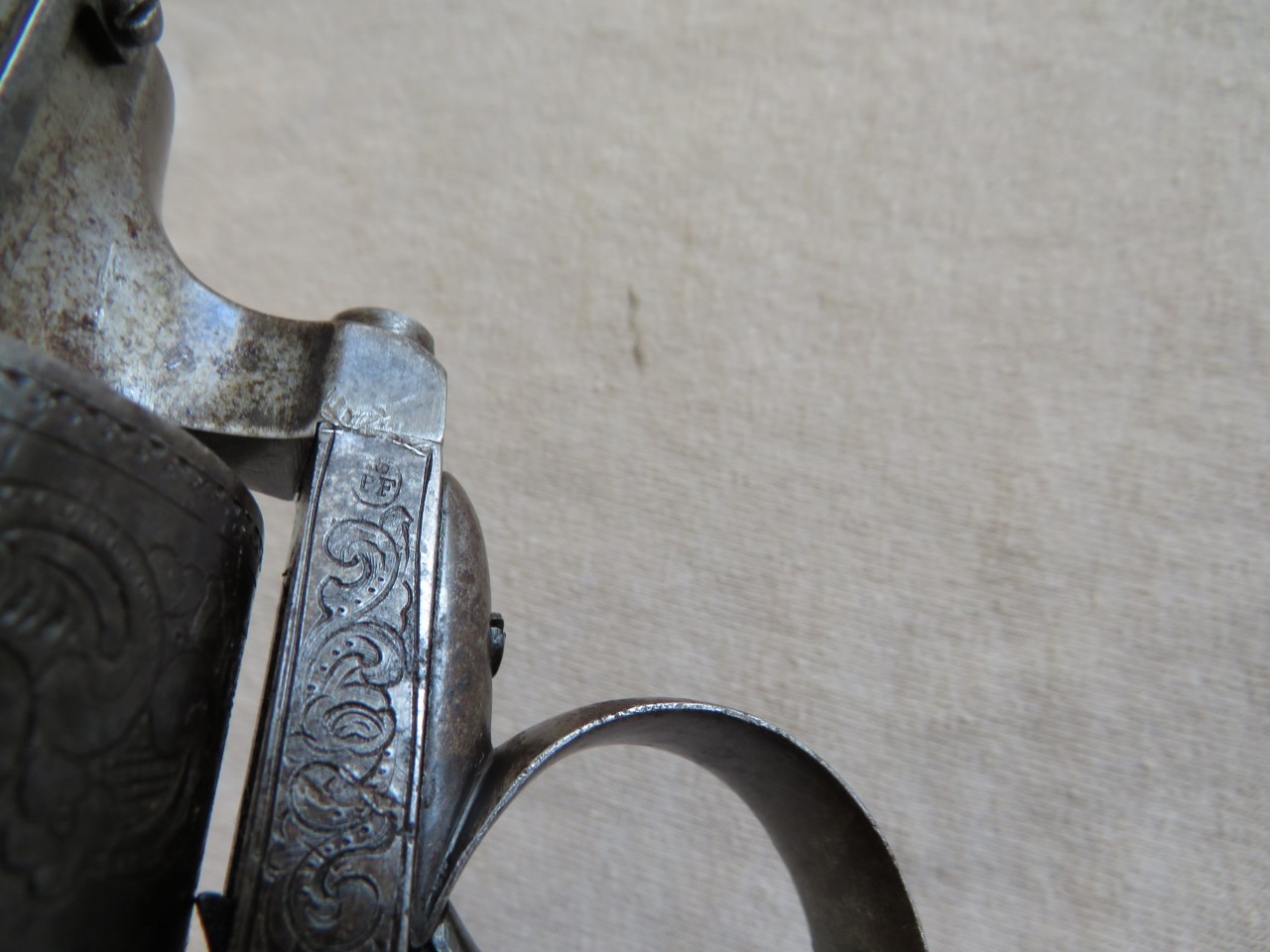
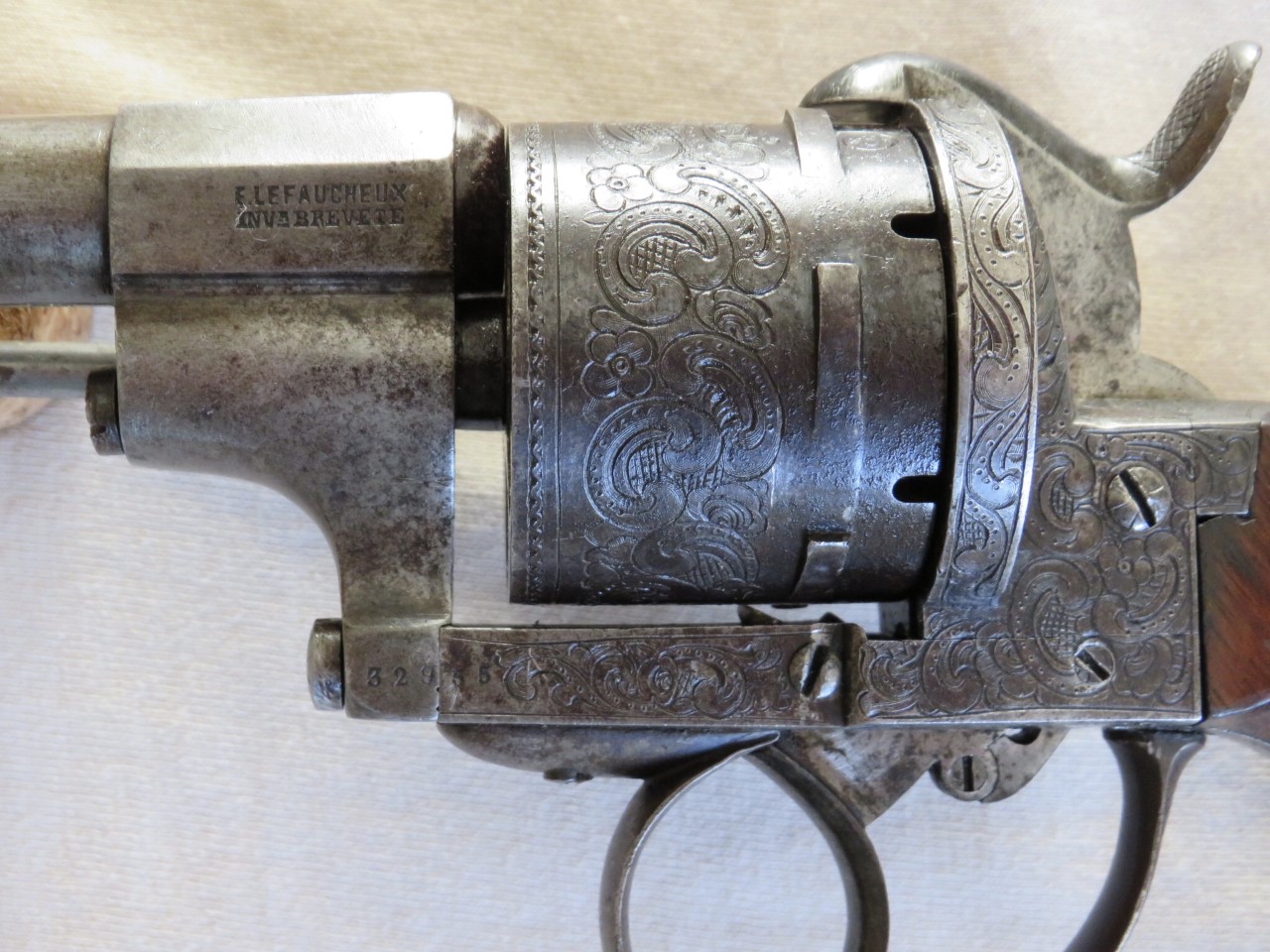


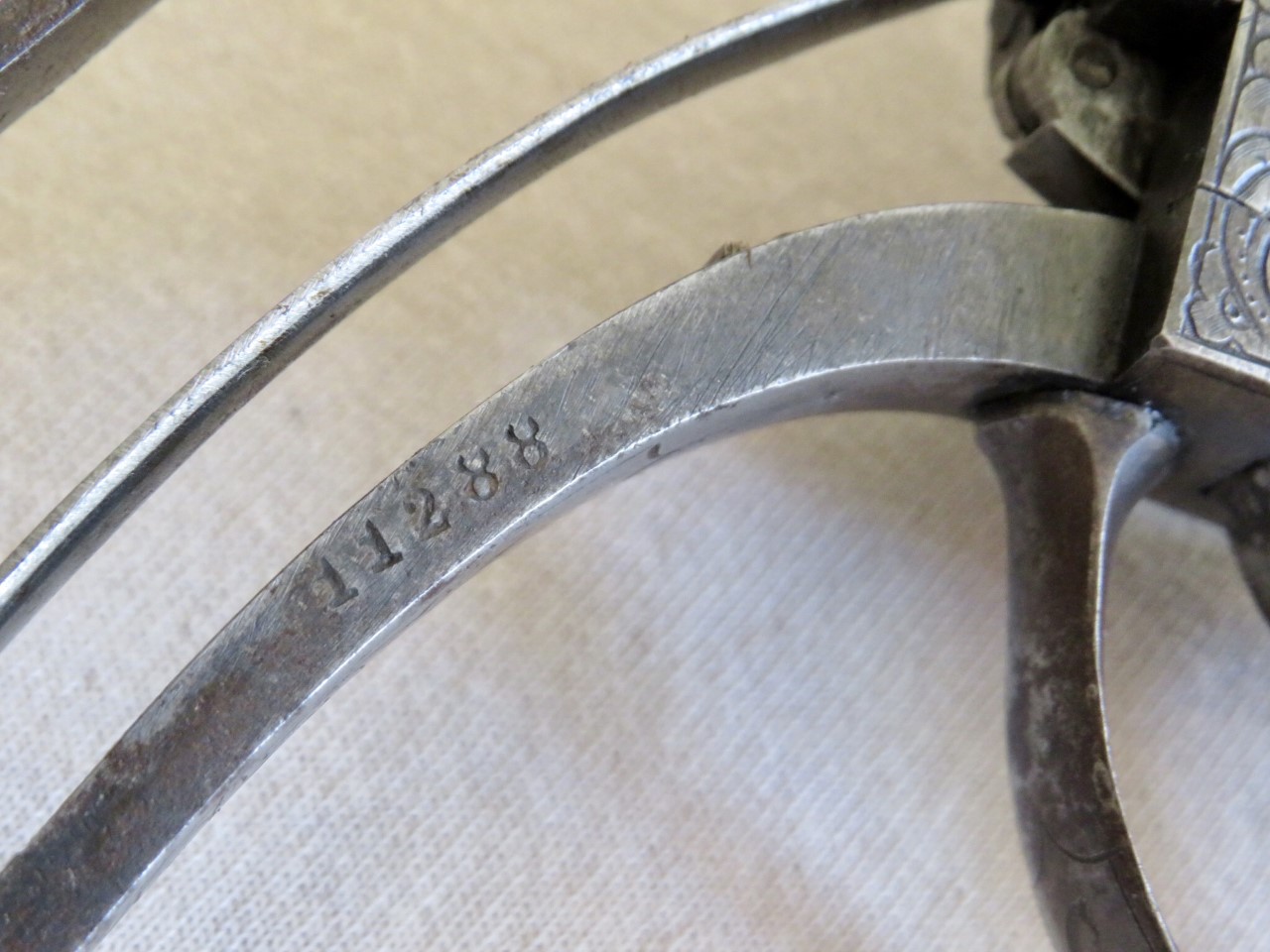
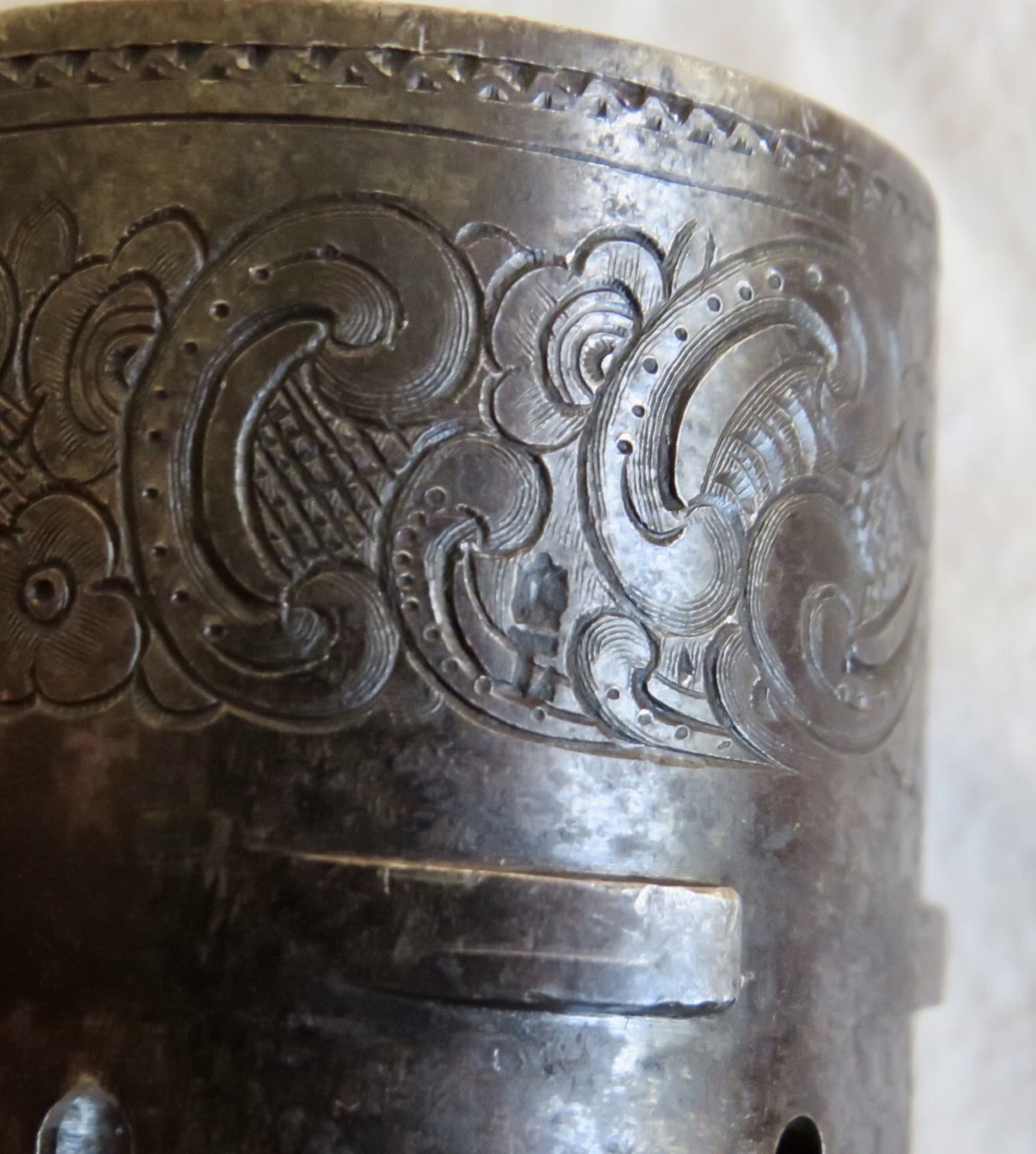
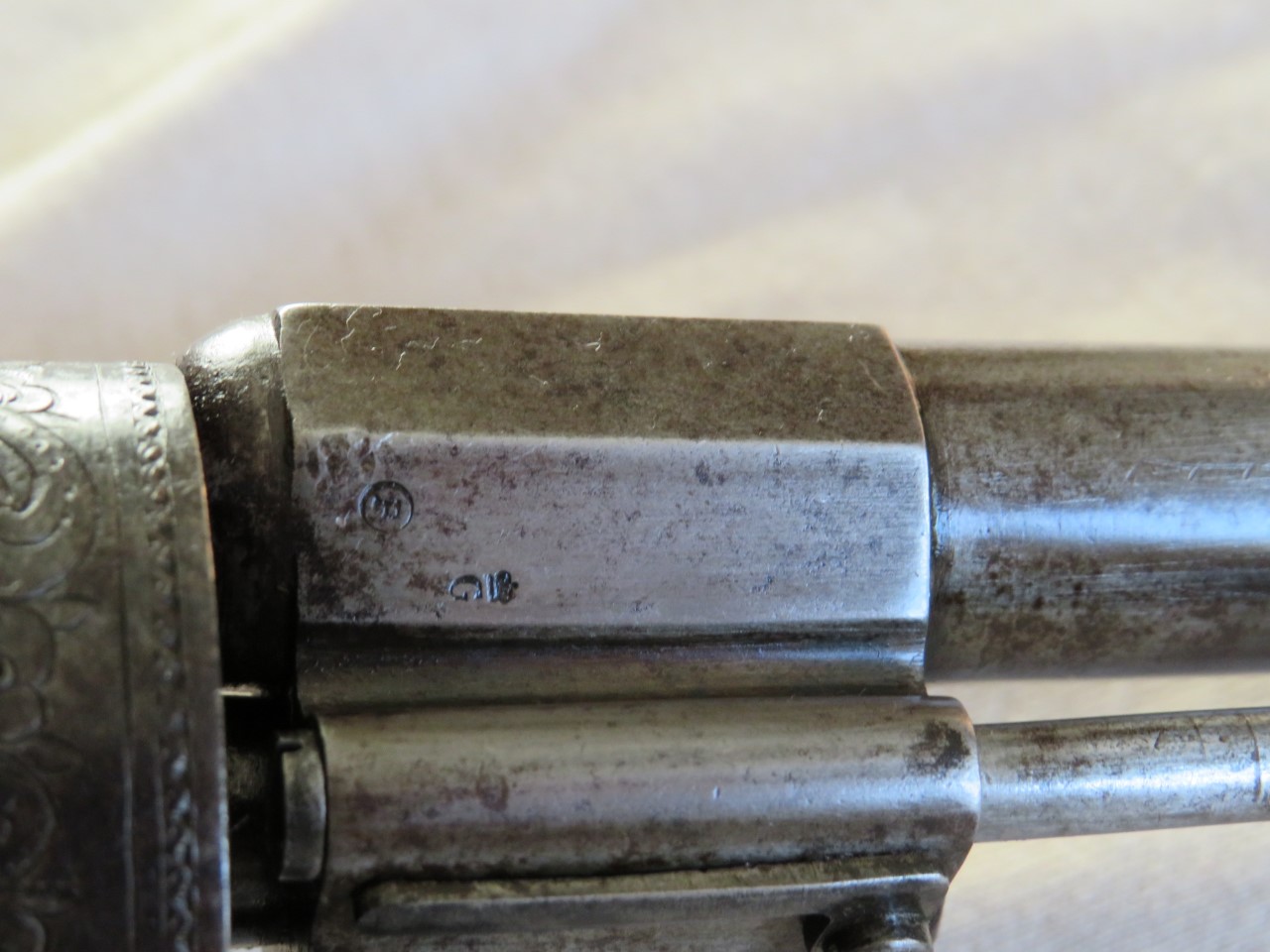
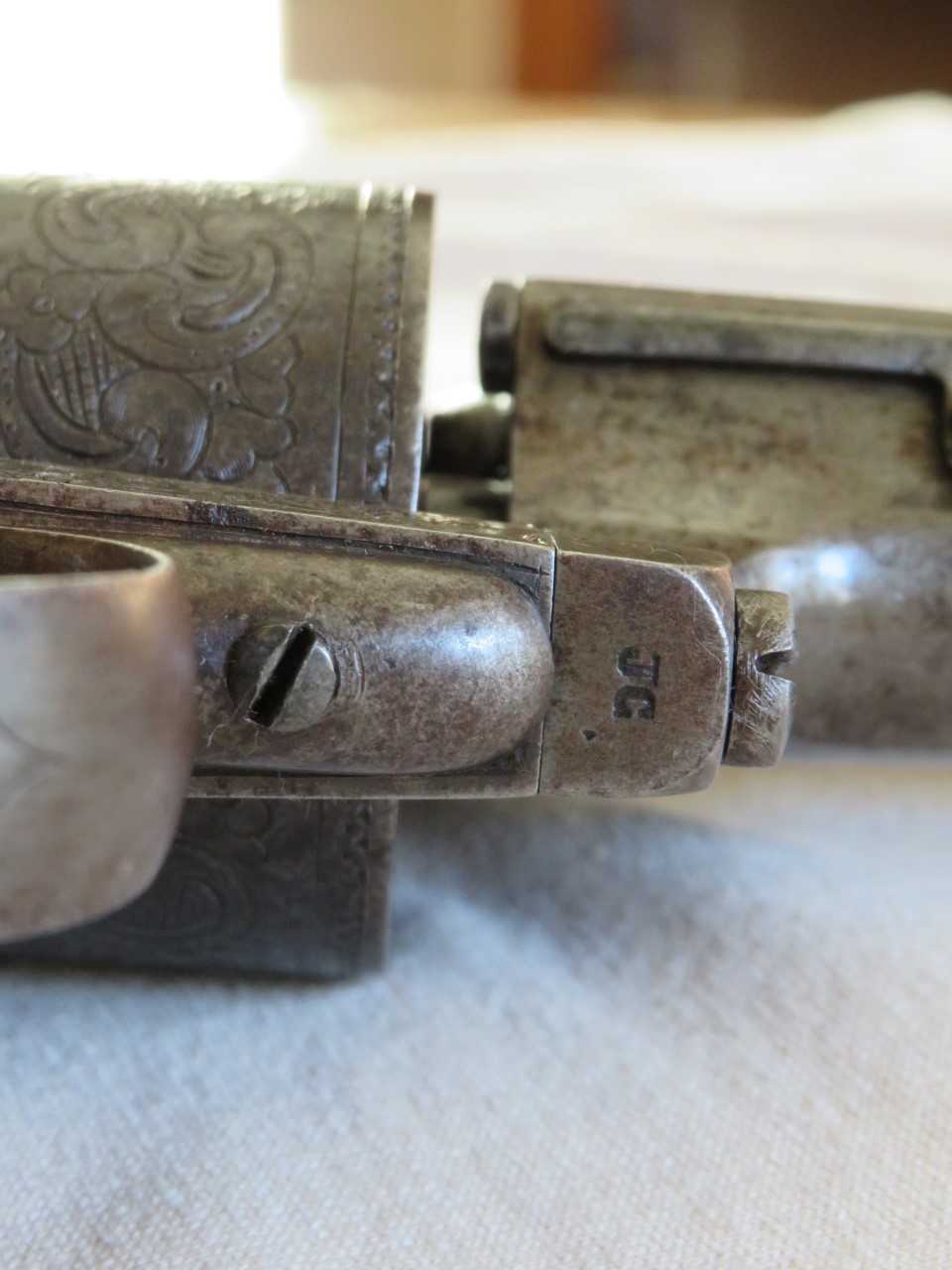
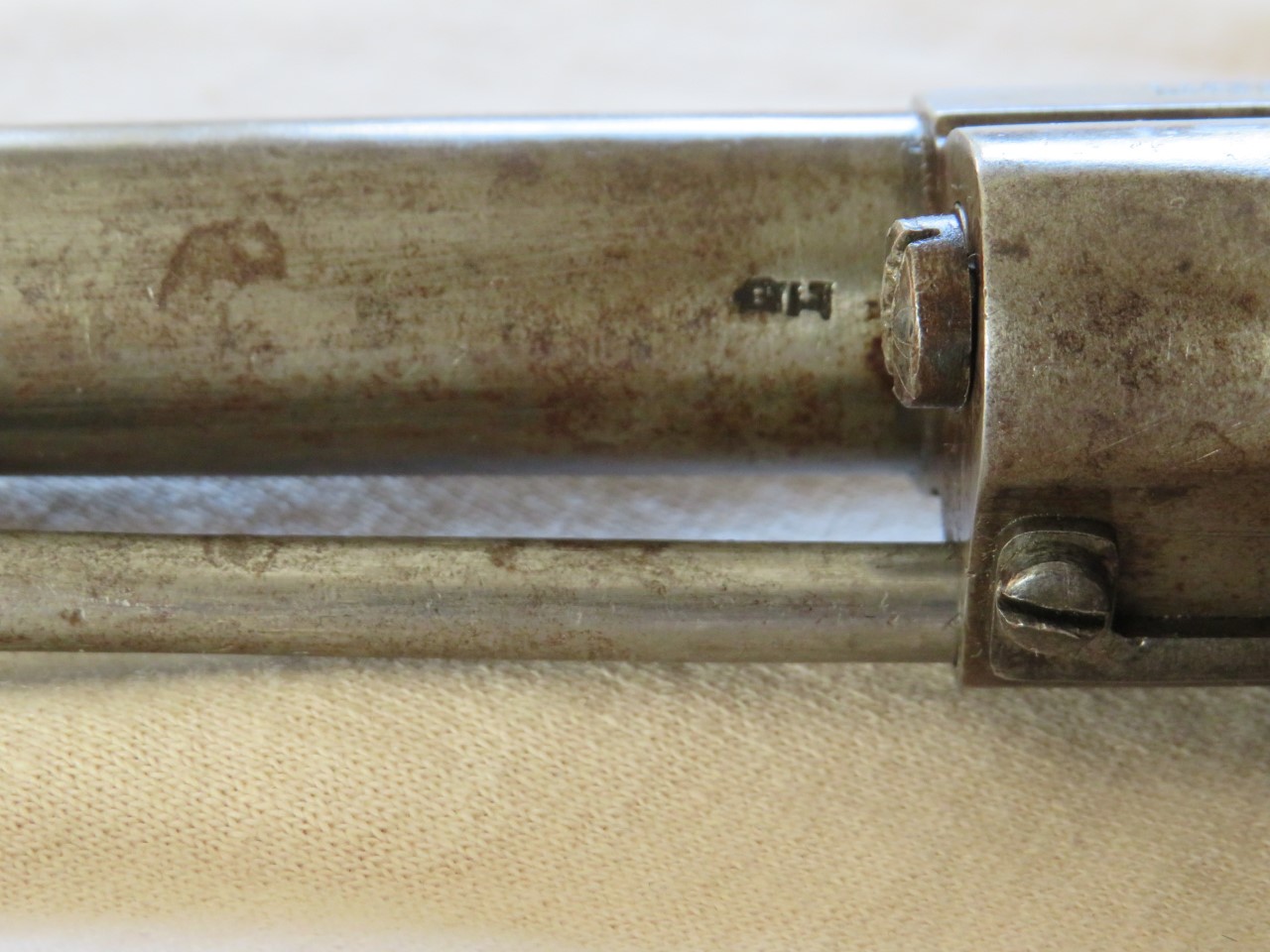
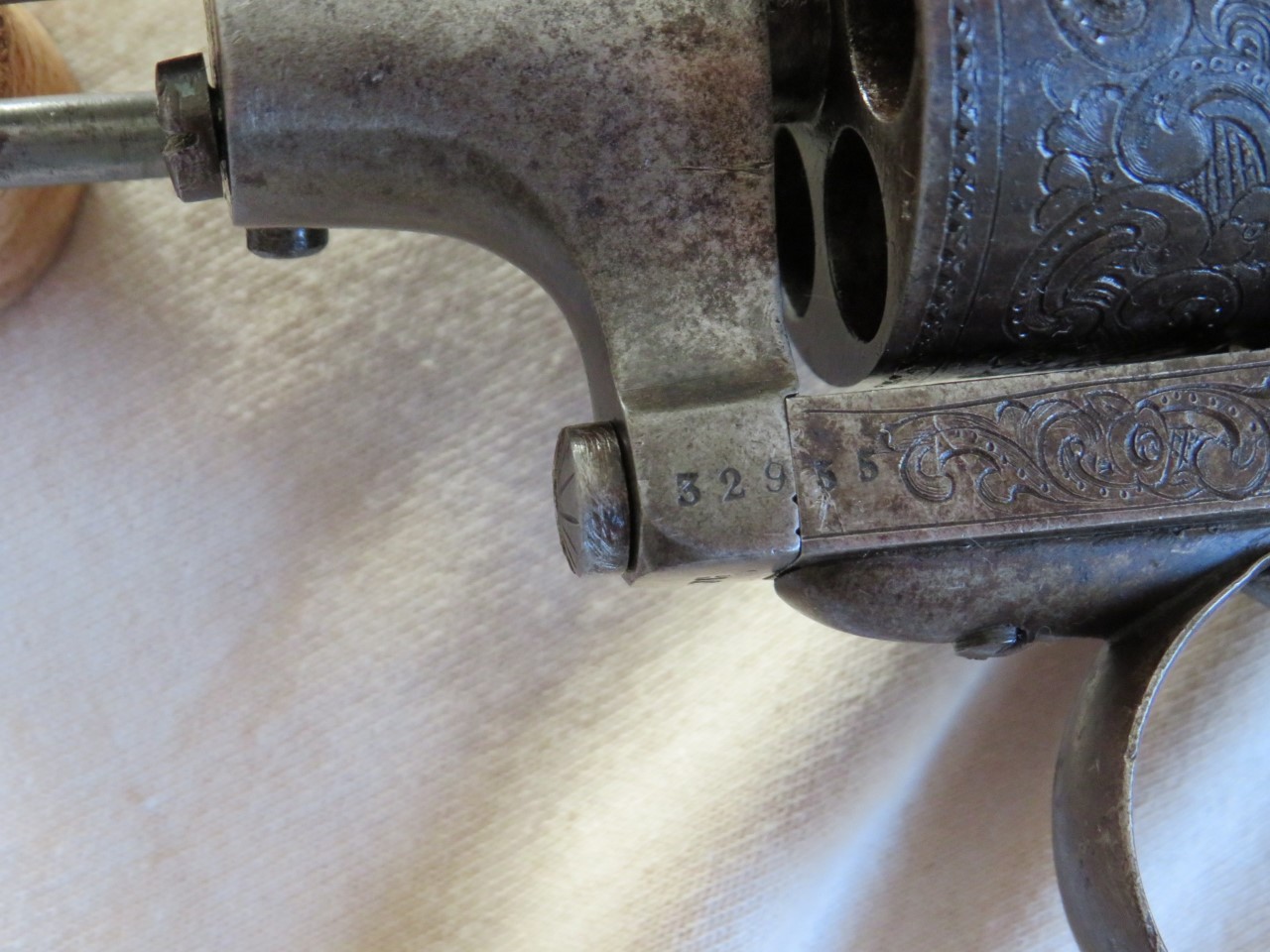
PIRLOT Frères
Here is a classic Lefaucheux nickel-plated open frame revolver, in caliber 12 mm from PIRLOT Fréres 1836-1879 (later PIRLOT & FRESART, active until 1890), already mentioned extensively on the site and in the exceptional collection.
Many well-known gunsmiths have had guns manufactured at PIRLOT Fréres in Liege.
Few markings: the ELG punch on star in oval (acceptance between 1846 and 1893), a V under crown, countermark from a controller (between 1853 and 1877) and a B in a circle (unidentified).
GP with the help of HPH.
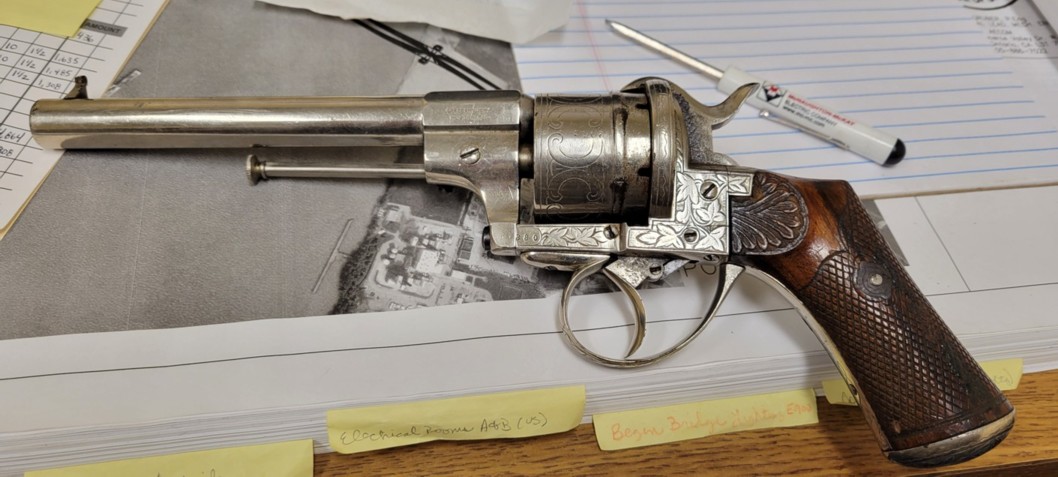
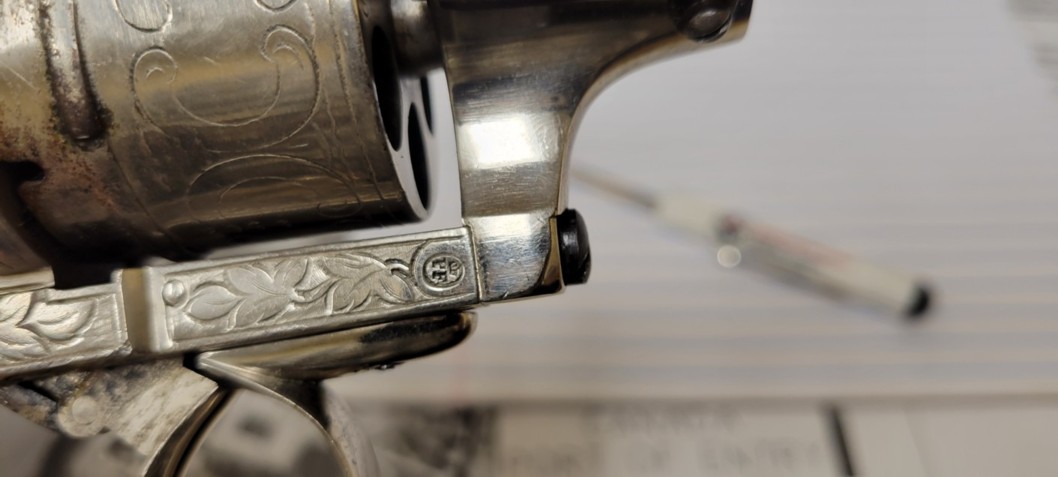
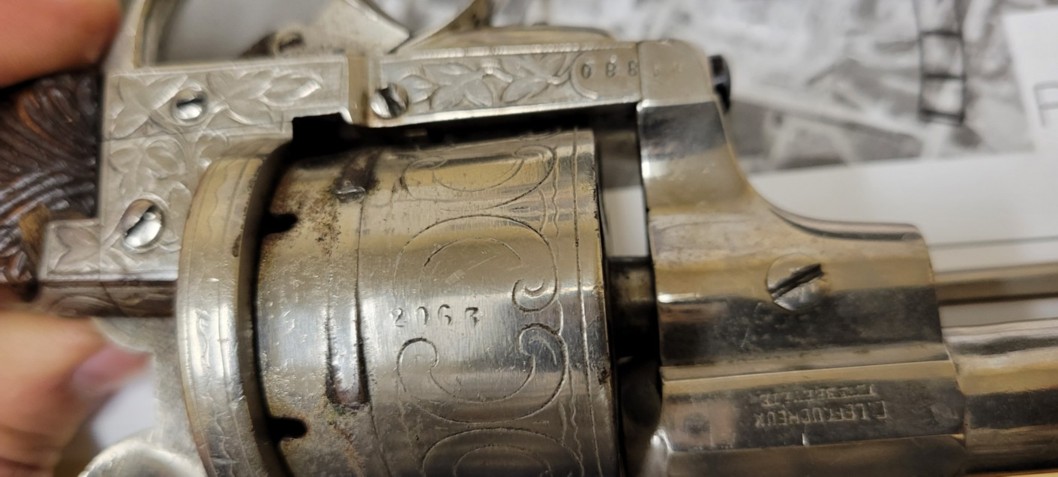
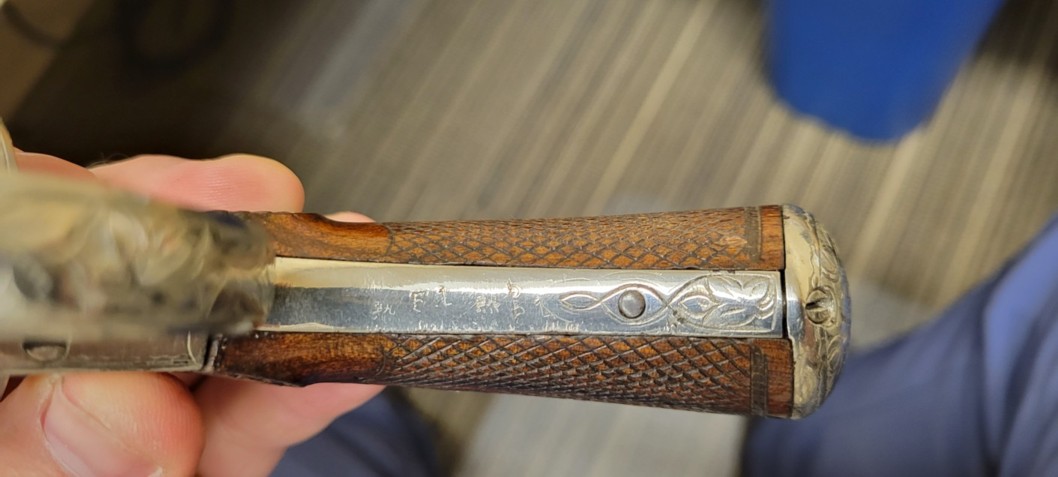


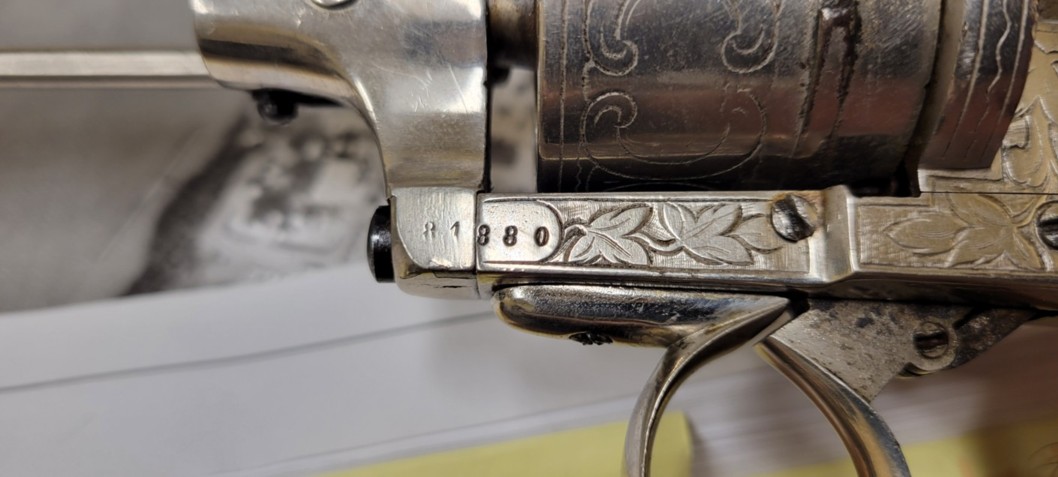

PIRLOT Frères
This is a classic pinfire revolver of indeterminate
caliber, whatever. Superior quality given the engravings.
We see, it seems to me, the
initials
PF under the barrel;
we also see on the barrel a
PF crowned in a circle:
we know a
PF crowned in an oval,
which is a trademark registered by
Pirlot &
Frésart, rue St-Gilles 95 in Liège on
13/06/1888.
But there is no trace of a
crowned PF in a circle
that would be a trademark of
Pirlot Frères,
registered in the proofhouse of Liège from 1836 to 1879.
It was certainly renewed at
the time of the partnership between
Gustave Pirlot
and
Edouard Frésart in 1888. In any case, it
seems to me unlikely that this revolver was after 1888 (in principle even 1877,
see below).
The brand
E. Lefaucheux
Inv. Bvté means that royalties have been
paid for the use of the
Lefaucheux
system.
A
crowned EL
theoretically means that
Eugène Lefaucheux's
factory in Liège contributed to the manufacture of this weapon. (even the
cylinder only?)
As for the crowned IS: mystery and gumball.
There is also a crowned G, the countermark of a
controller of the Liège proofouse, applied between 1853 and 1877. And the
classic ELG star in oval, for acceptance between 1846 and 1893.
GP with HPH
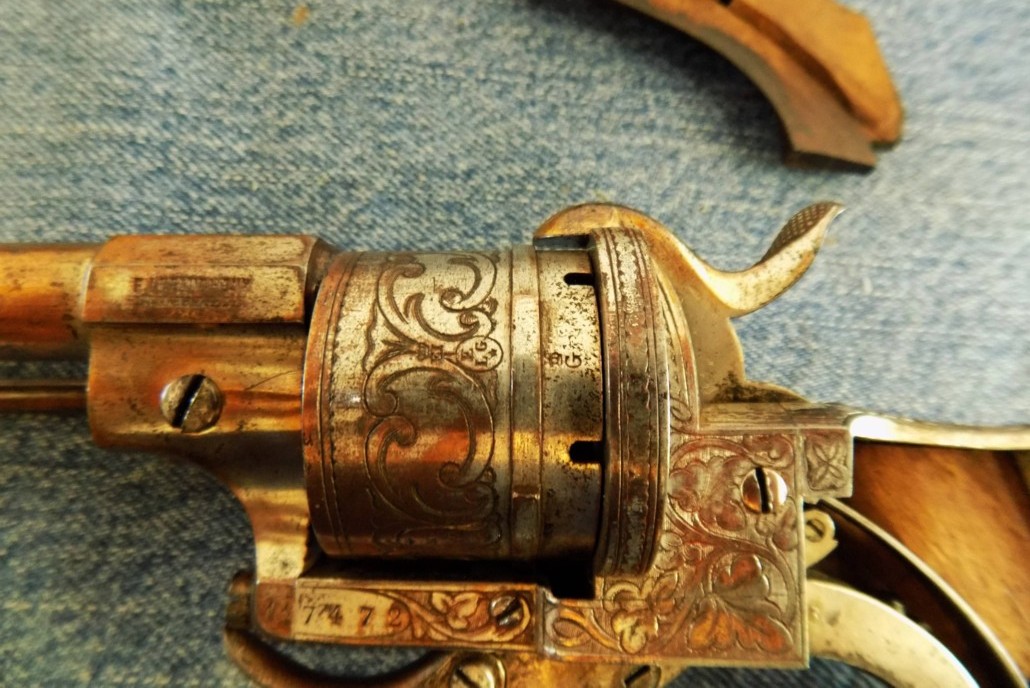
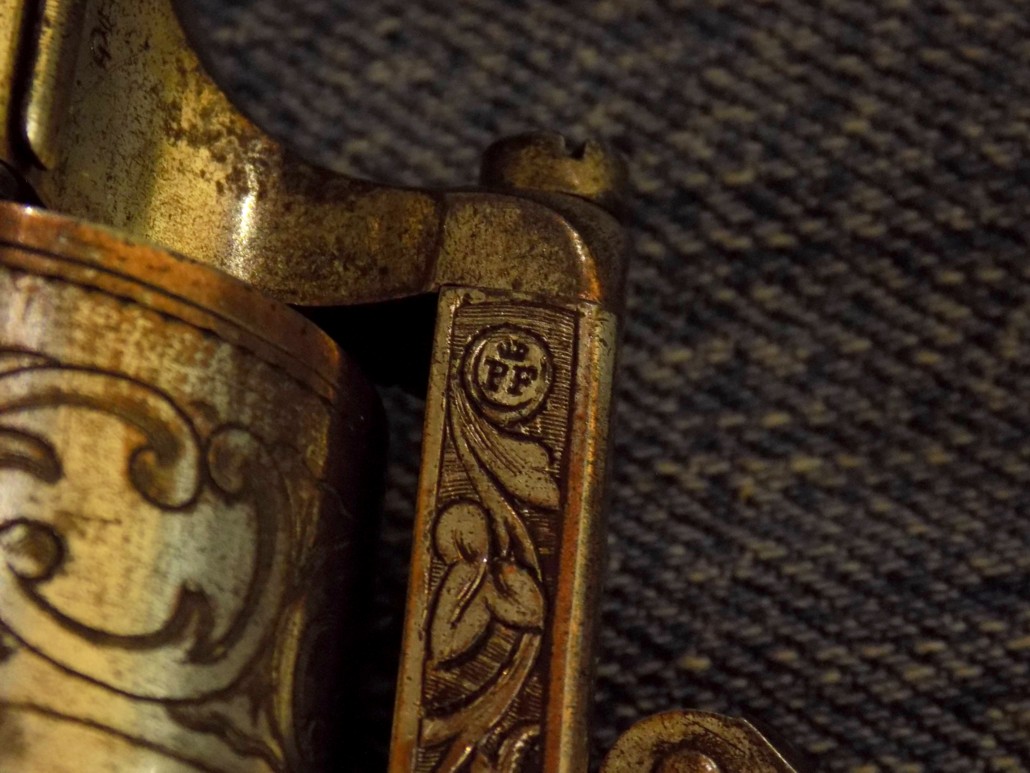
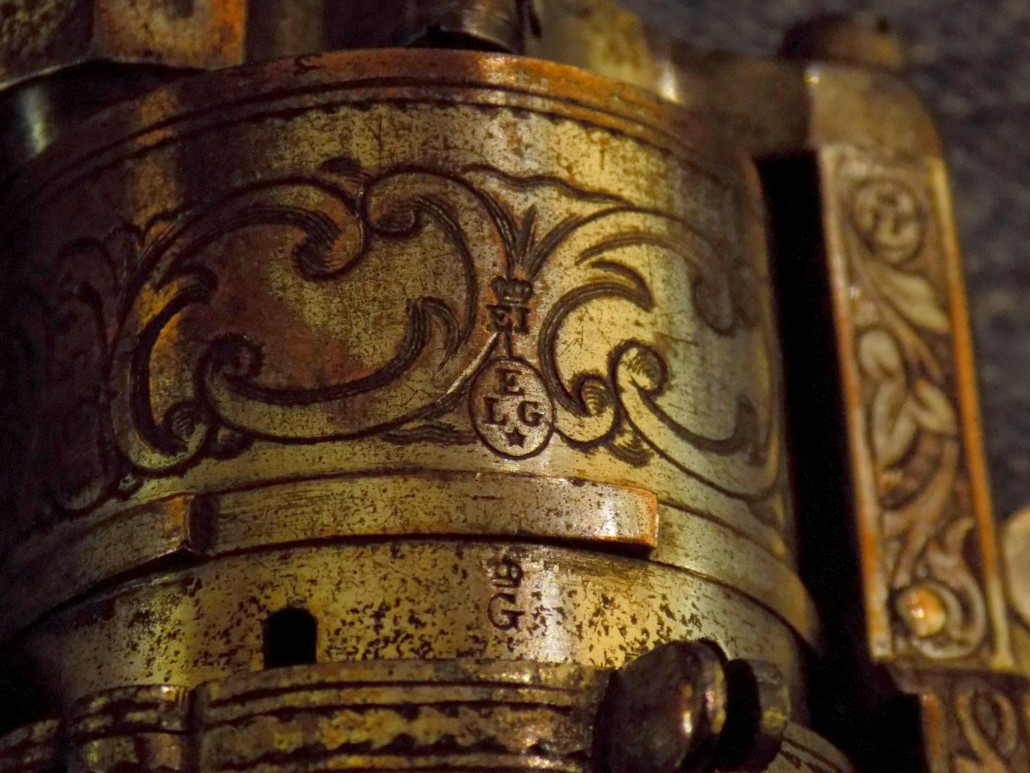
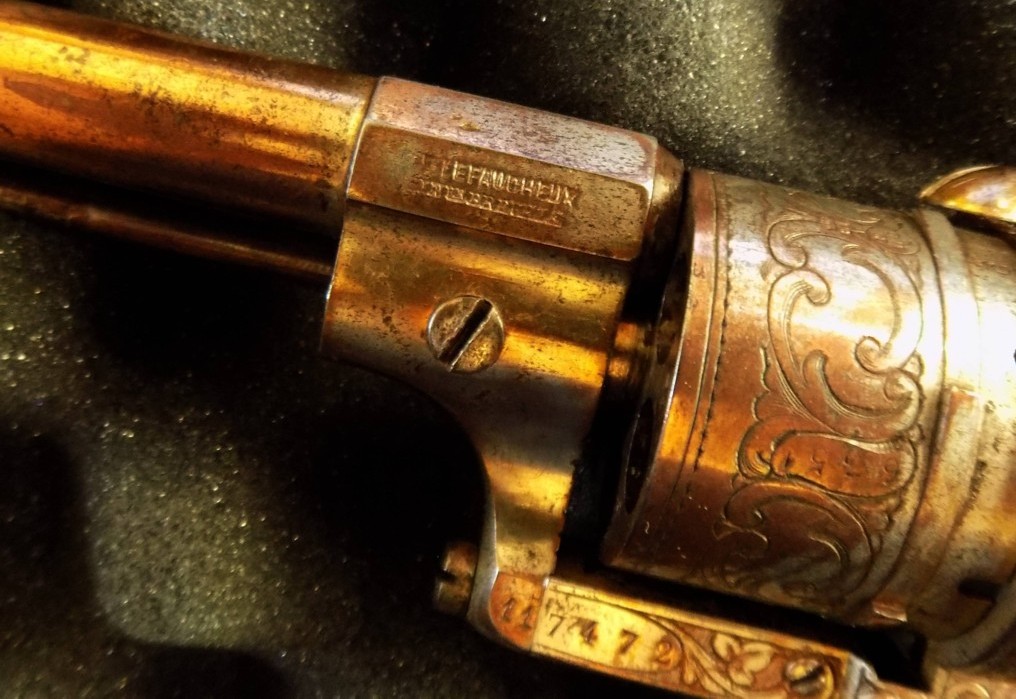
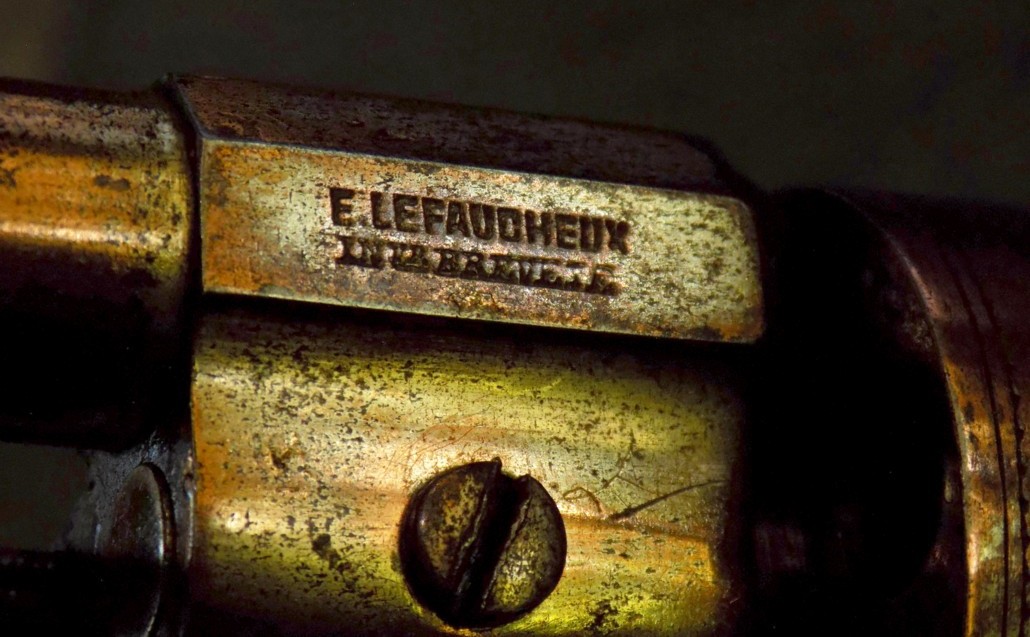

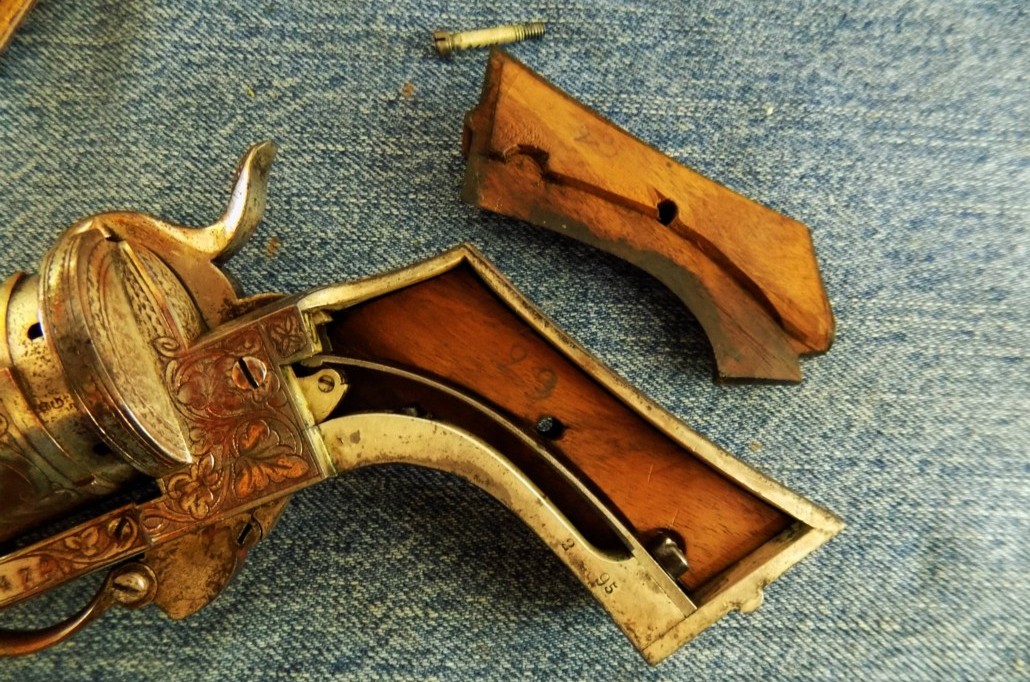
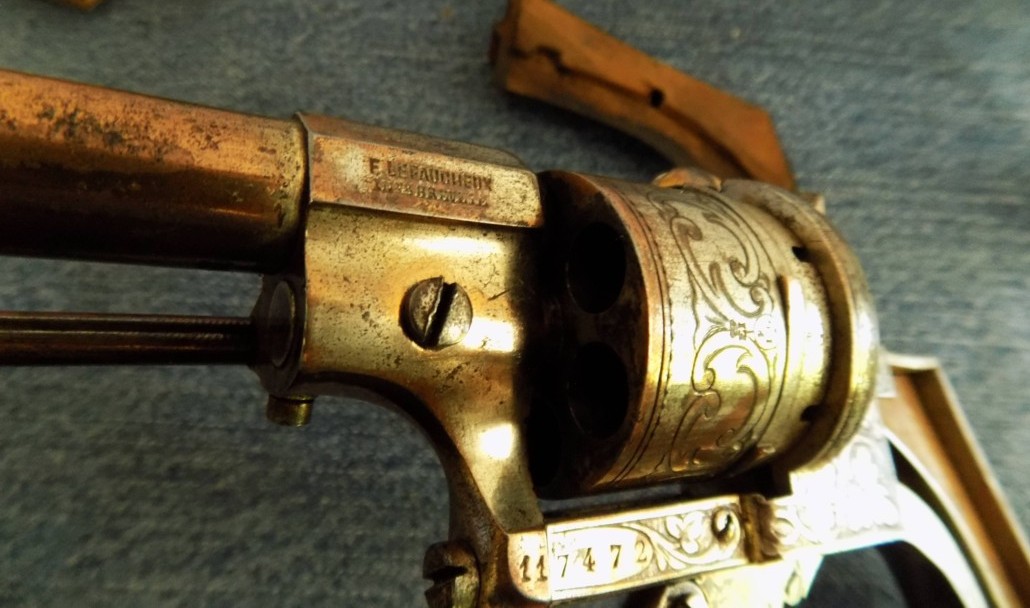
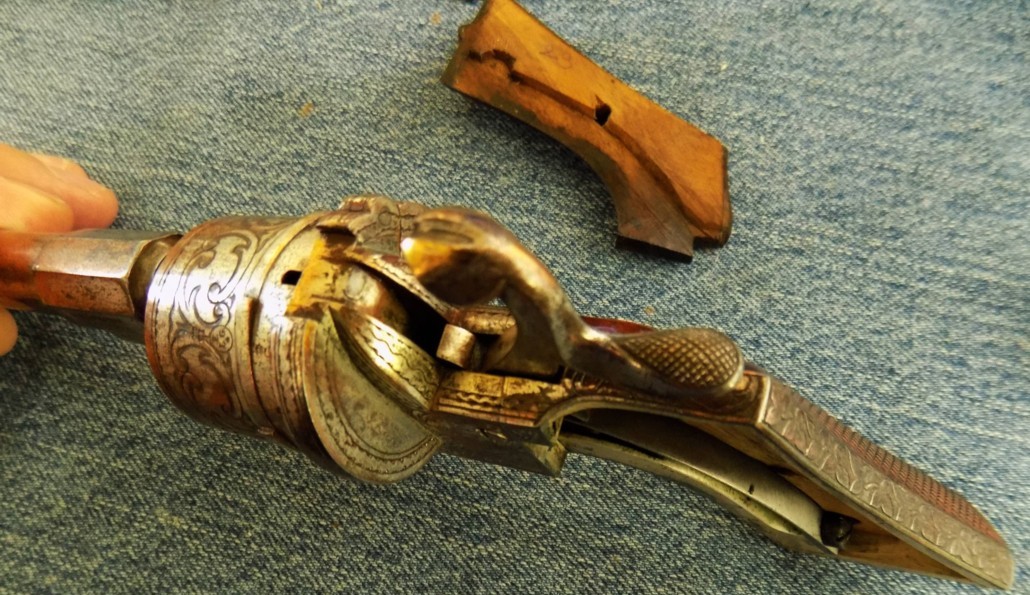

Pirlot Frères
Rare copy of a Winchester model 1866 saddle ring carbine made by
Pirlot Frères of Liège, Belgium in
saddle scabbard.
Cal. 44 CF. 20″ bbl. Blue finish.
Right side of receiver is marked “Pirlot
Frères à Liège”.
Lever has a very small loop and hammer has very coarse checkering.
Stocks are straight grained dark European
walnut with a crescent gun metal buttplate.
Saddle scabbard has remnants of hanging straps and a clear cartouche on right
side. Cartouche reads "E.T. Amonett maker
El Paso, Texas".
A extremely rare copy of a 66 Winchester saddle ring carbine that could
definitely have seen service during Mexican Revolution.


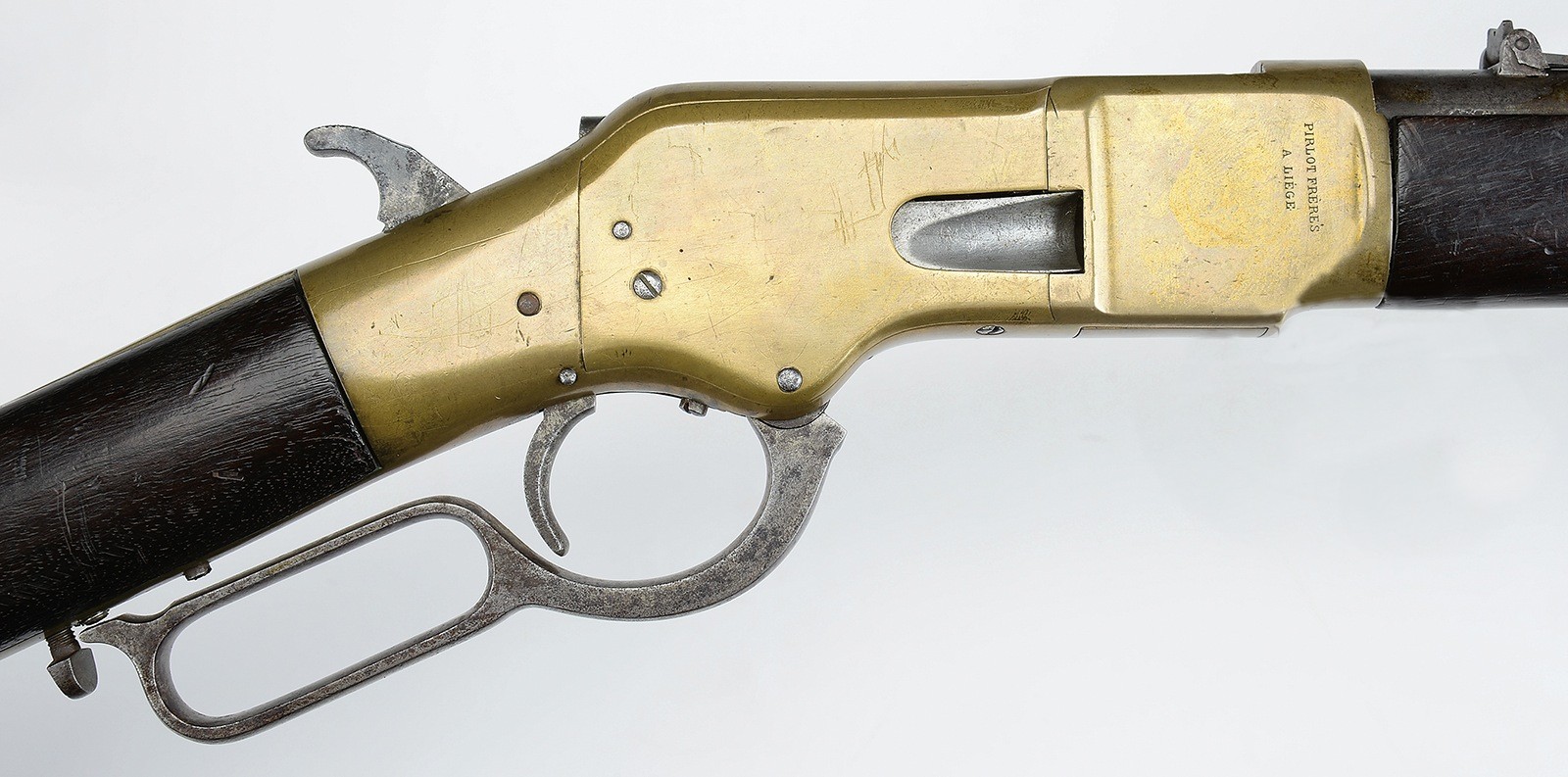
Pirlot Frères
Here is a percussion rifle of the military type (or at least for military
purposes) from the firm Pirlot Frères.
Markings:
Pirlot Frères in Liège on the lock.
Oval ELG on the left side of the barrel.
1SHIC.3C.56. on the left side of the barrel and 1SHIC.3C.245. on the bayonet.
Capital M under crown in several places of the weapon.
Chris
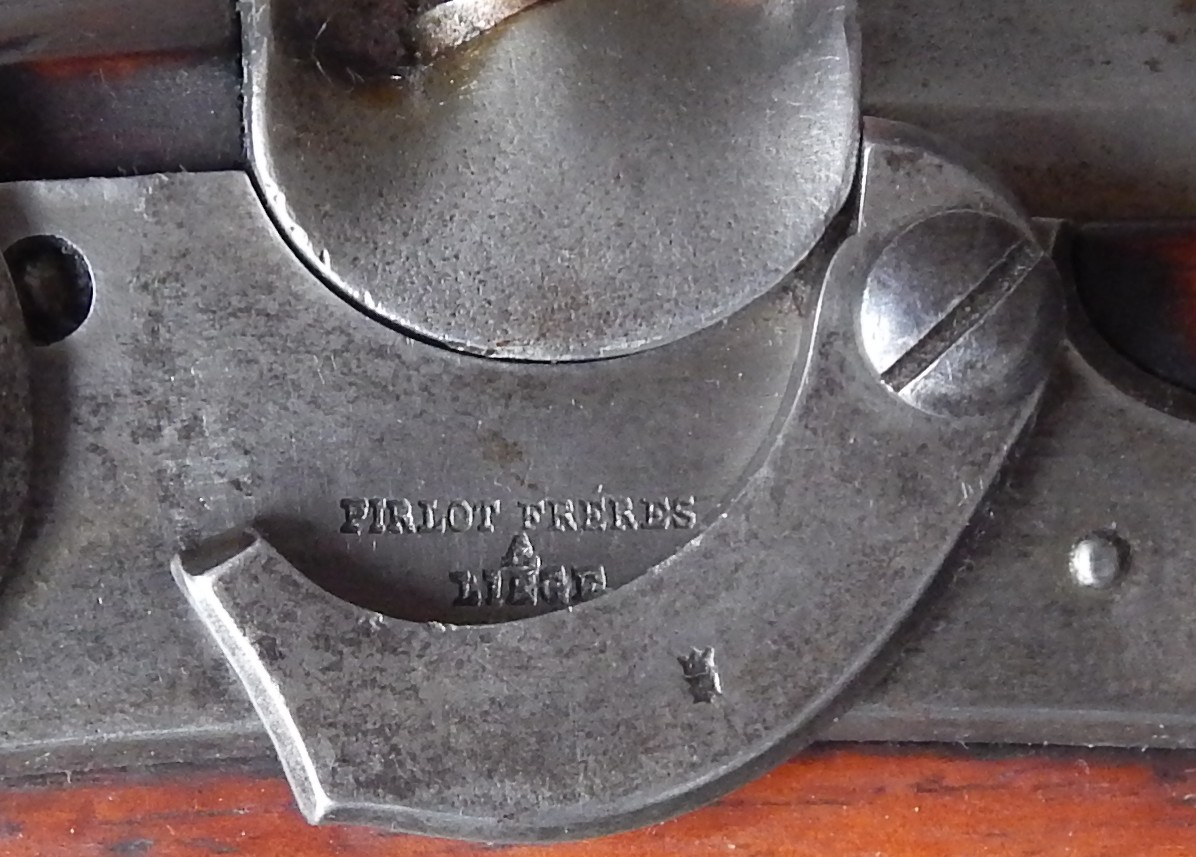
Pirlot Frères
Pirlot Frères percussion pistols
A trio of percussion pistols made by Pirlot Frères (1st half 19th century).
These weapons were presumably “regulatory” in some Germanic or Nordic states.
They are stamped
Pirlot Frères à Liège
on the lock, and one of the copies is registered B24.
HPH et Oscar
Pirlot Frères
Il s’agit à mon humble avis d’un fusil d’infanterie transformé. La lumière du canon a été bouchée, une cheminée vissée à même le tonnerre, le chien d’origine remplacée par un modèle à percussion. Les pièces extérieures de la platine ont été supprimées et les trous de vis bouchés. La crosse en noyer est façonnée à l’anglaise avec un enfoncement pour le visage. Le canon rond et lisse (calibre ??) est maintenu par trois brassadelles. Une baguette métallique est fixée sous le canon. La contre platine à 2 vis est en forme de L.
L’arme porte le poinçon liégeois du banc d’épreuves belge ELG* dans un ovale vertical signifiant l’acceptation de l’arme. Ce poinçon a été utilisé de 1818 à 1893.
L’arme porte également les marques suivantes :
EB couronné (si bien lu ?) il pourrait s’agir de la marque du fabricant de canons de fusils Ernest Bertrand.
PF dans un ovale (sur le bois) : en toute hypothèse il pourrait s’agir de la marque de fabrique de Pirlot Frères à Liège. Inscrits au banc d’épreuves de 1836 à 1879.
H et L dans un cercle : ce type de marquage n’était pas courant à Liège. Il m’est inconnu. Il pourrait peut-être s’agir de poinçons d’acceptation de l’unité suisse ayant réceptionné l’arme ?
GG
Il s’agit d’un fusil modèle 1817 d’infanterie, de voltigeur, ou bien encore de chasseur militaire.
Cette arme a été conçue et fabriquée au départ chez nous.
Elle a été modifiée à percussion (Vers 1842/1855), la modification n’est absolument pas conforme à l’ordonnance suisse.
Cette modification pourrait avoir été faite par un armurier du canton de Zürich et je pense pour la chasse, car la hausse a été supprimée. Ce qui n’est jamais le cas sur les armes modèles 1817/1842 militaires.
Je pense que le marquage "G LUZERN 364" est l’ancien marquage militaire du canton de Luzern, mais ce que je trouve anormal c’est qu’il n’y a pas, du moins apparemment, le poinçon cantonal.
Normalement il était obligatoire de marquer les canons des initiales du fabricant, mais elles devaient toujours se trouver sous le canon.
Max

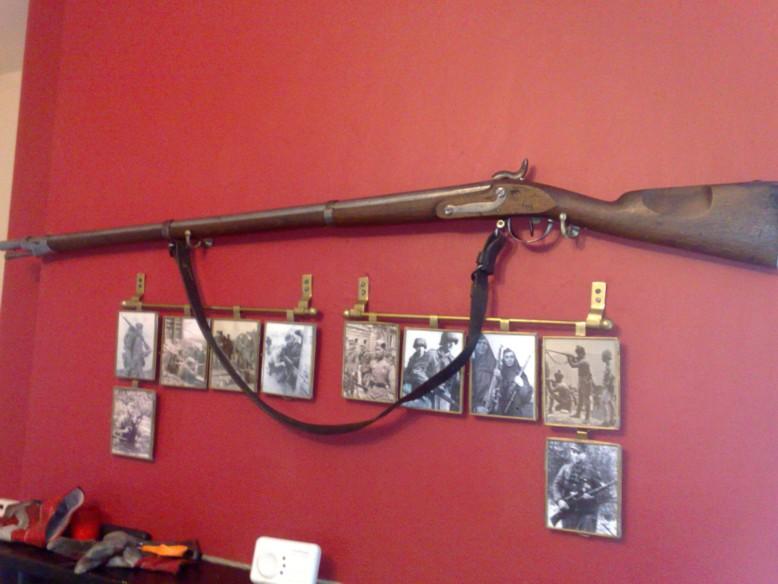
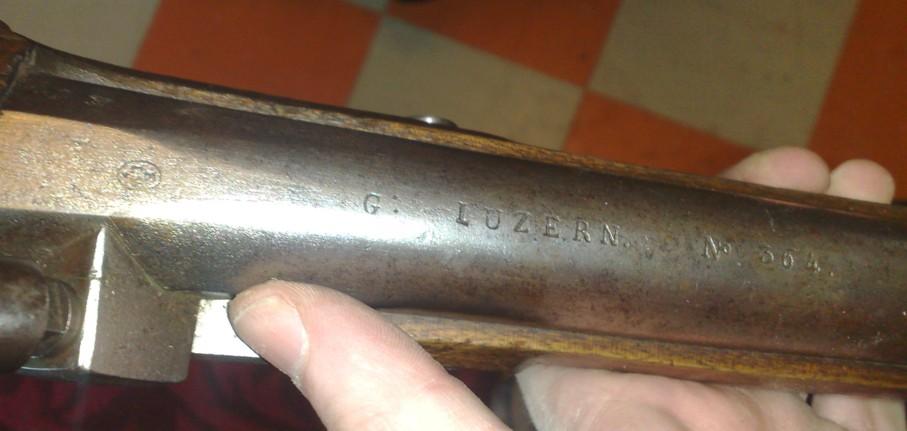
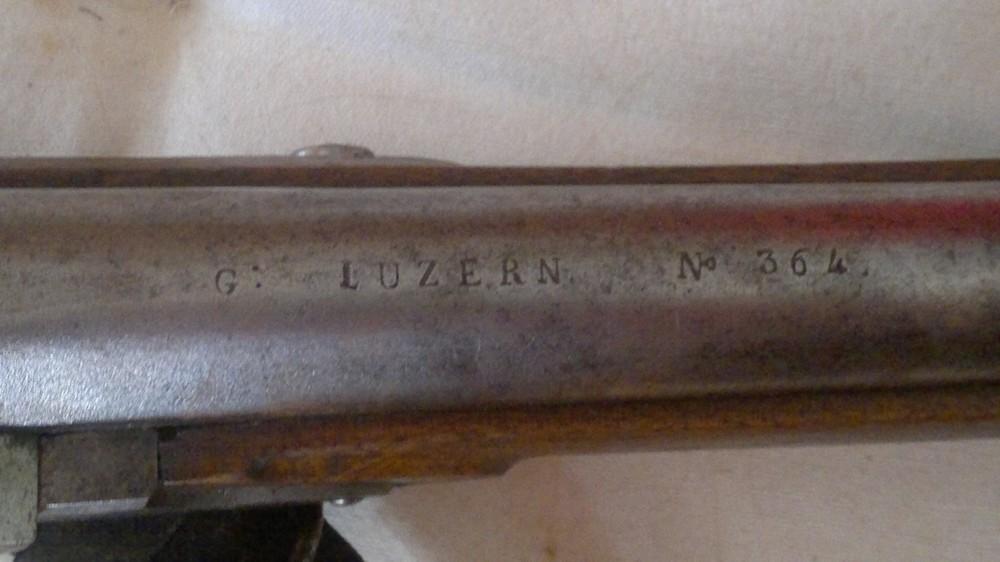
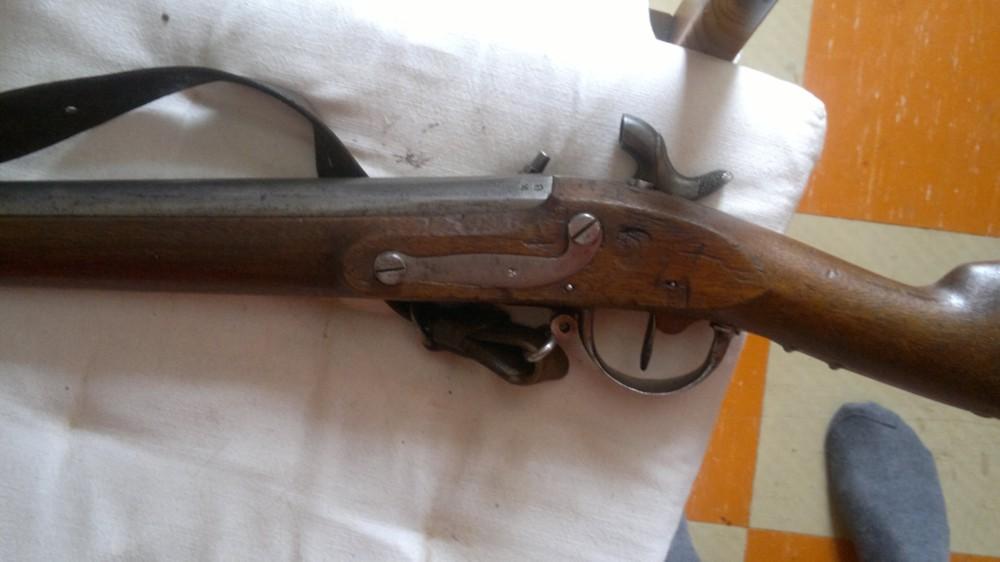
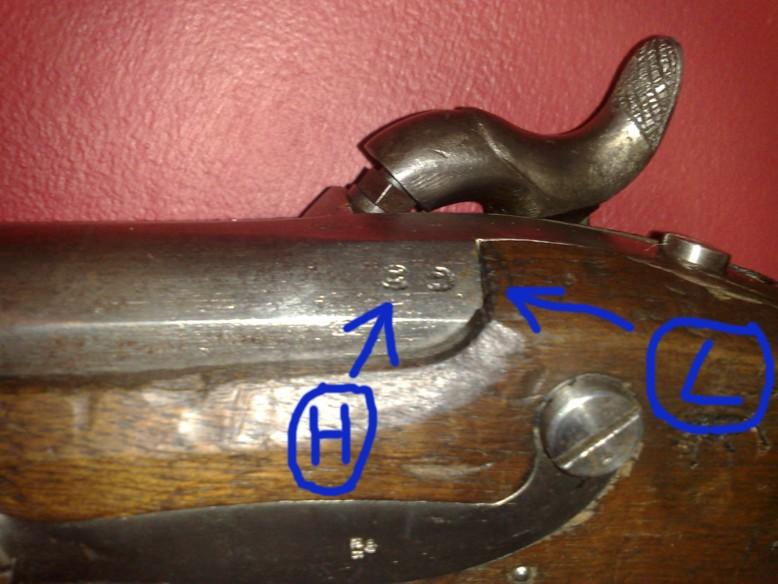


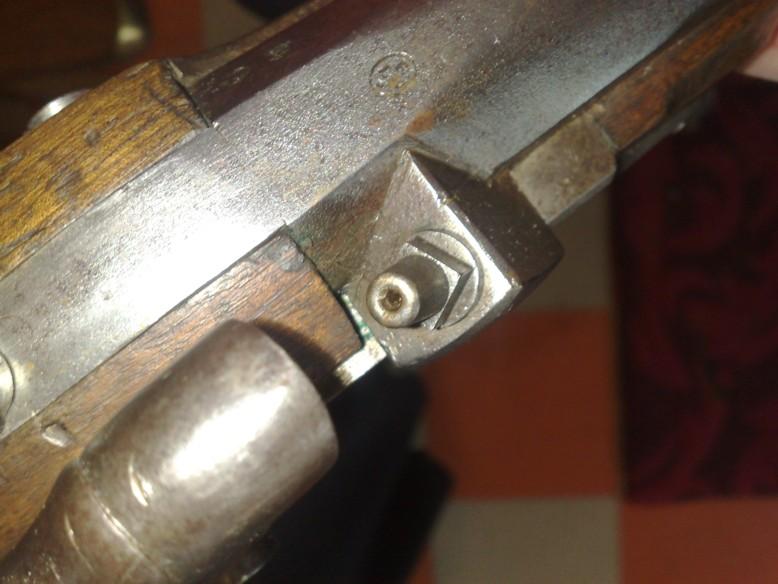
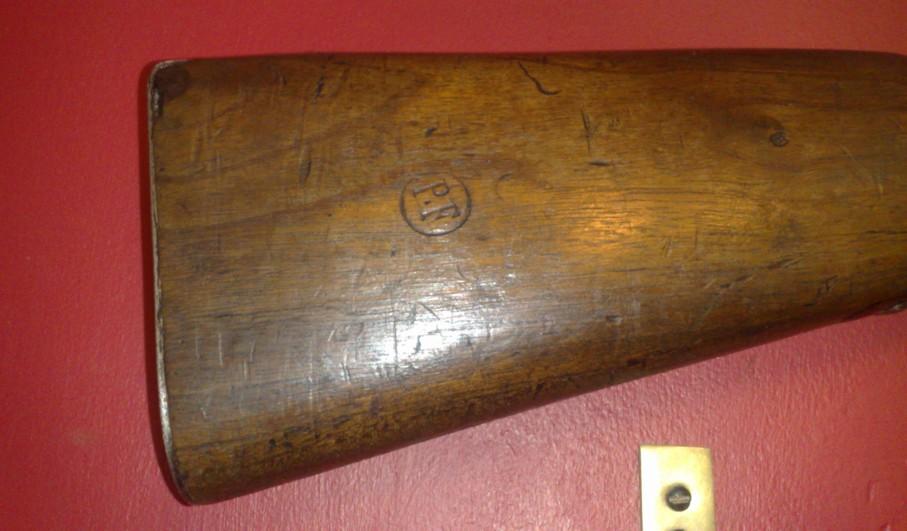
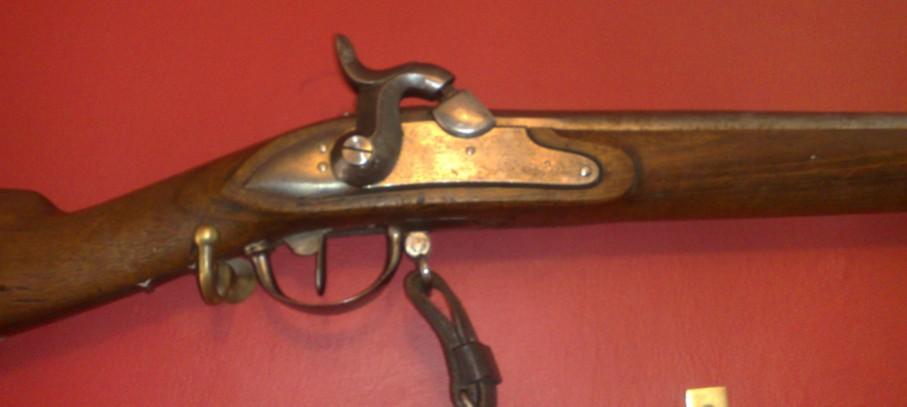
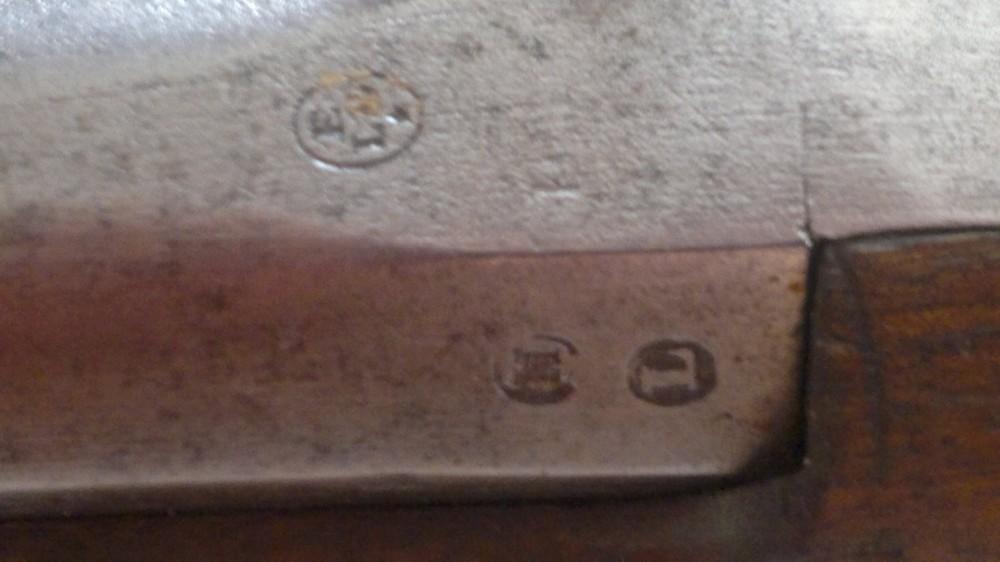
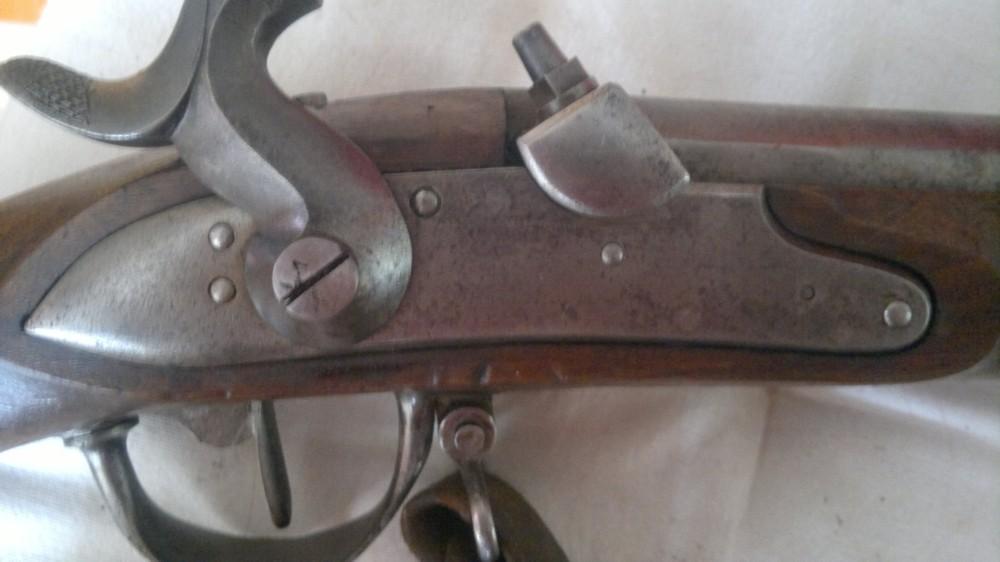
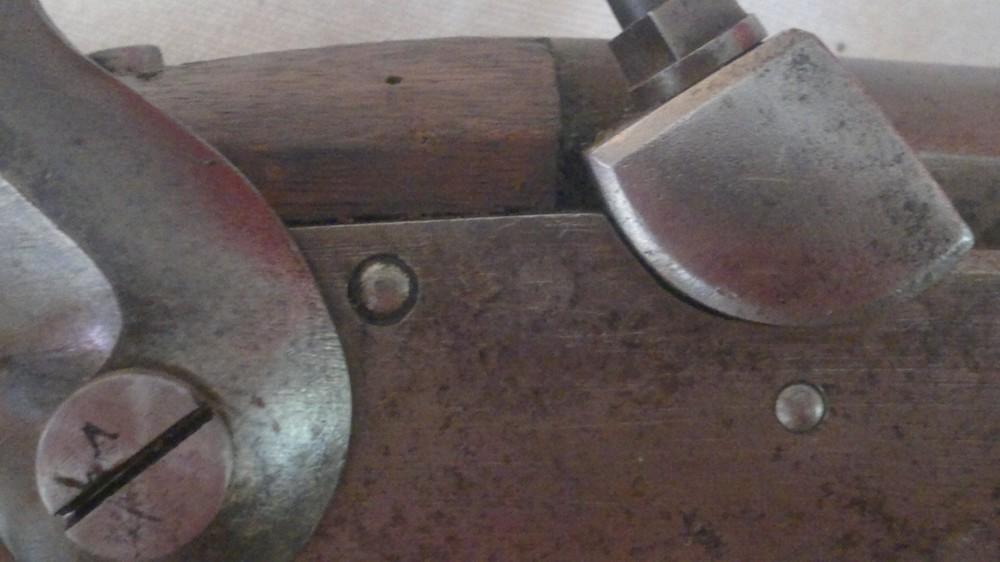
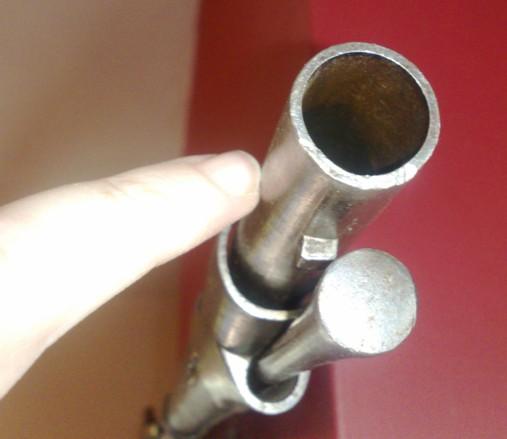
Pirlot Frères
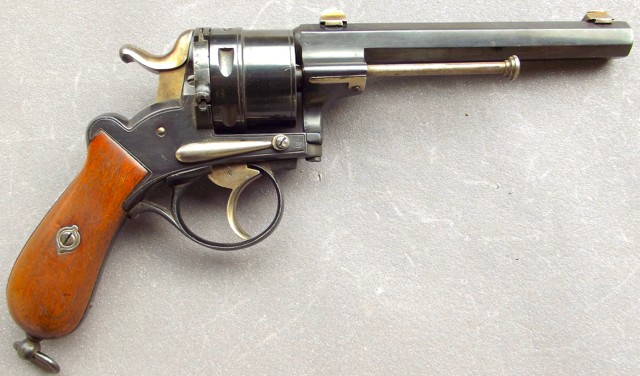

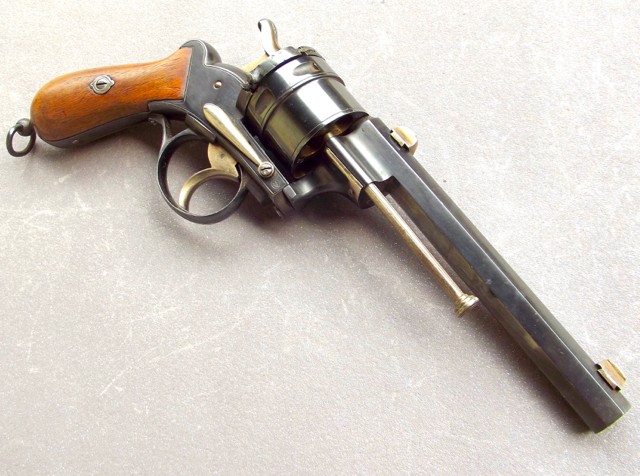
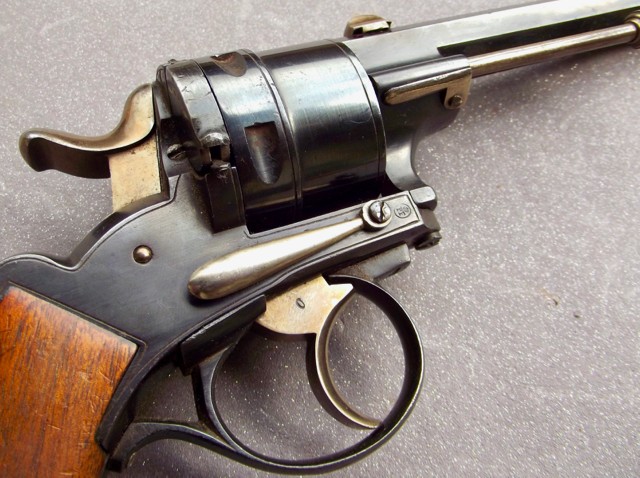
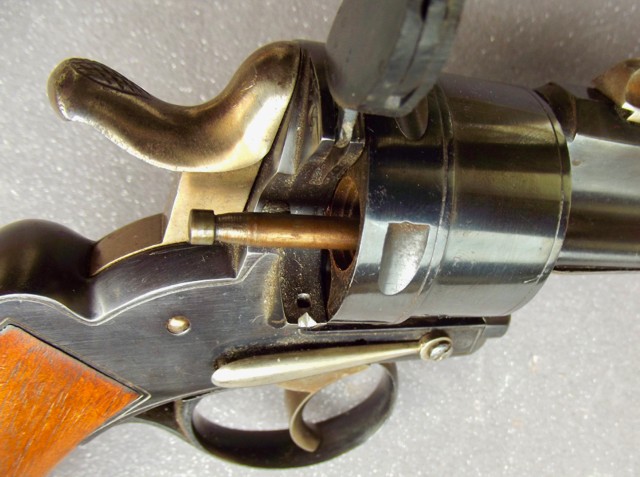

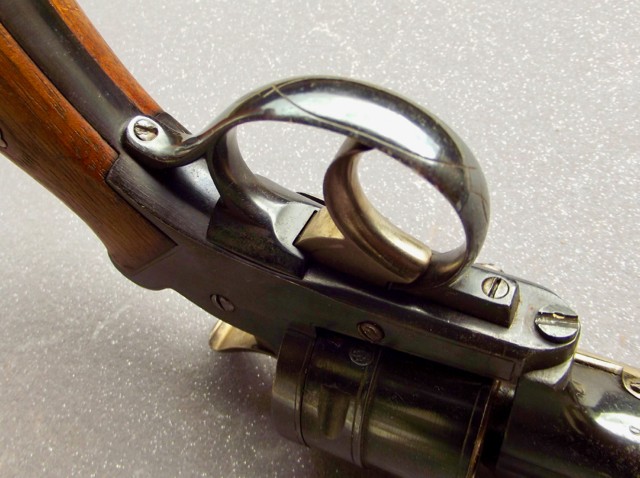
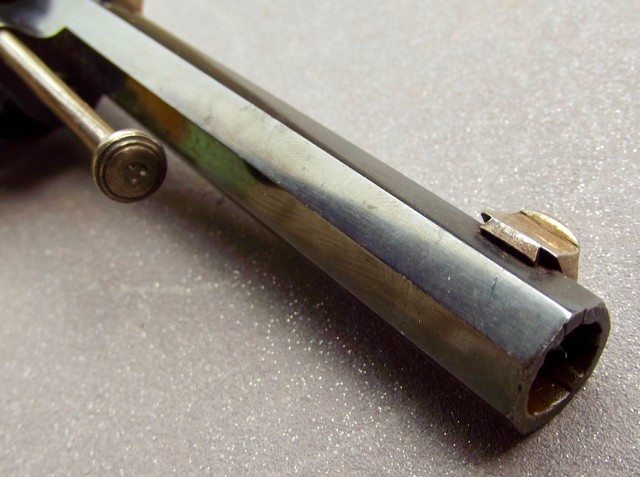
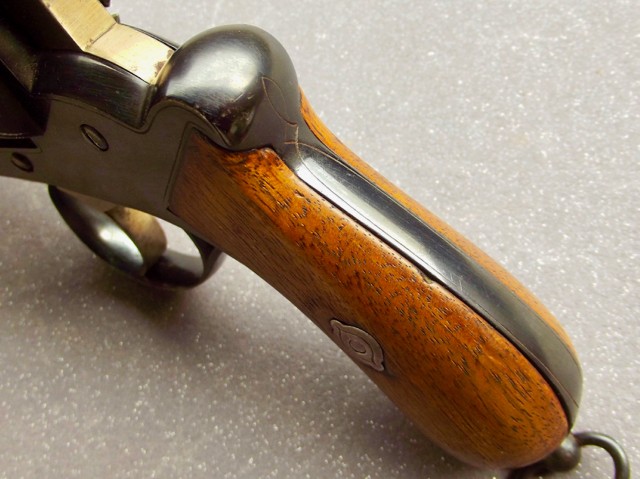
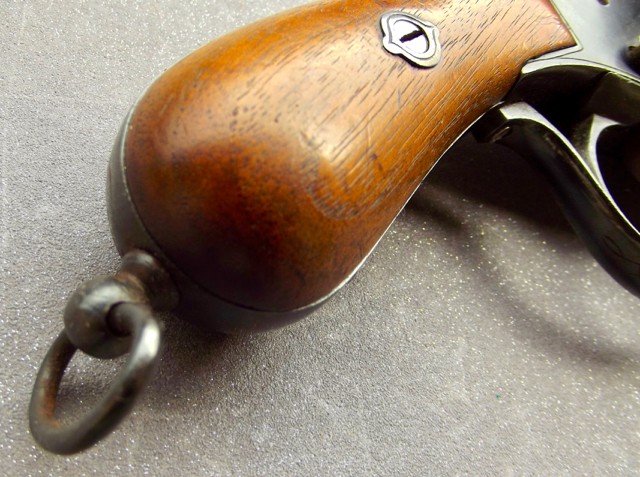
Pirlot Frères
Performed
to this cleaning I found the PF flag with a crown.
Jose Luis


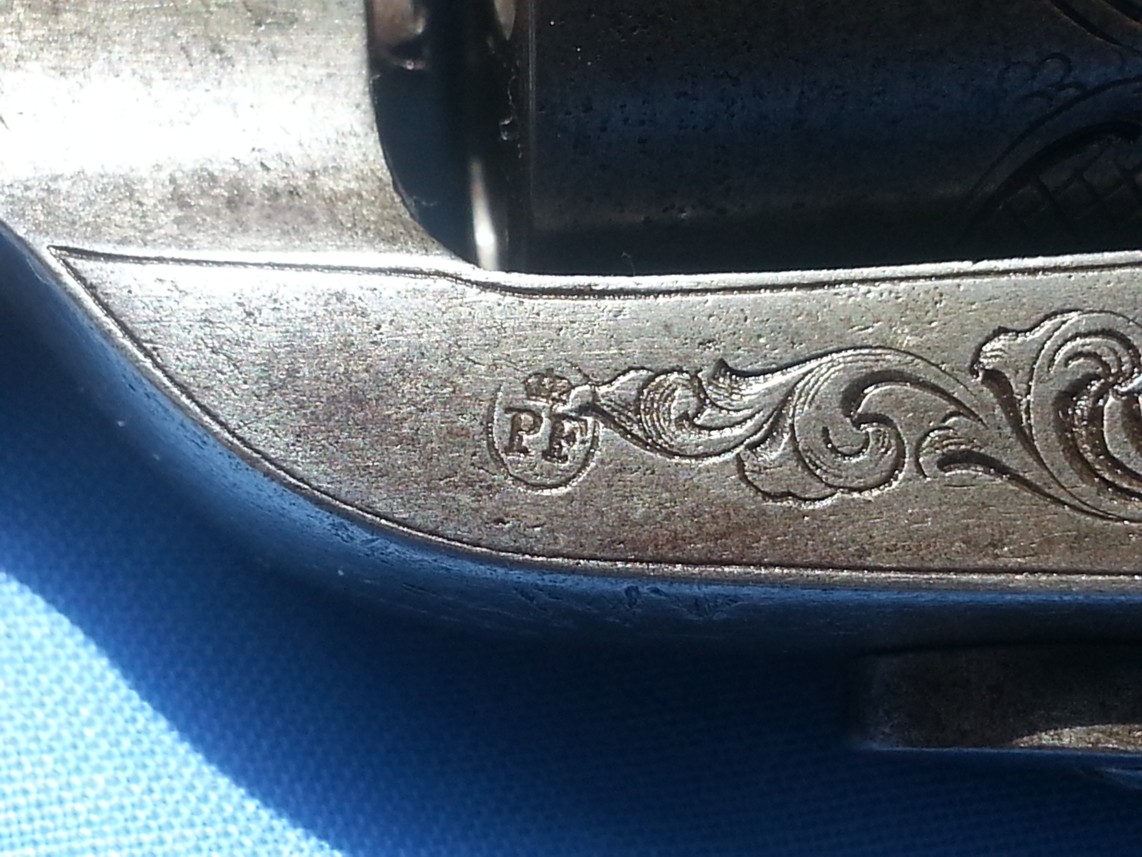
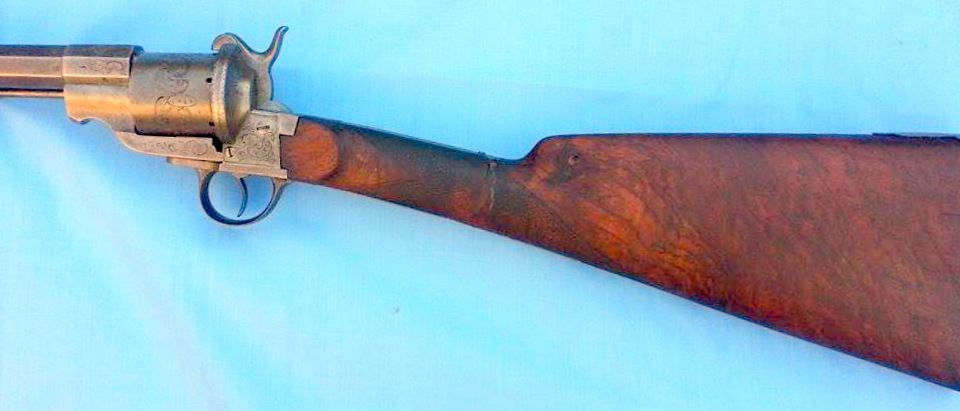
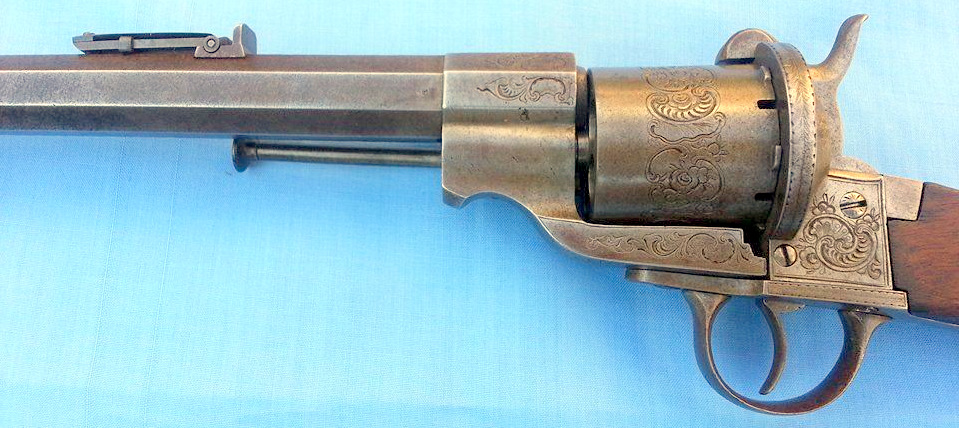
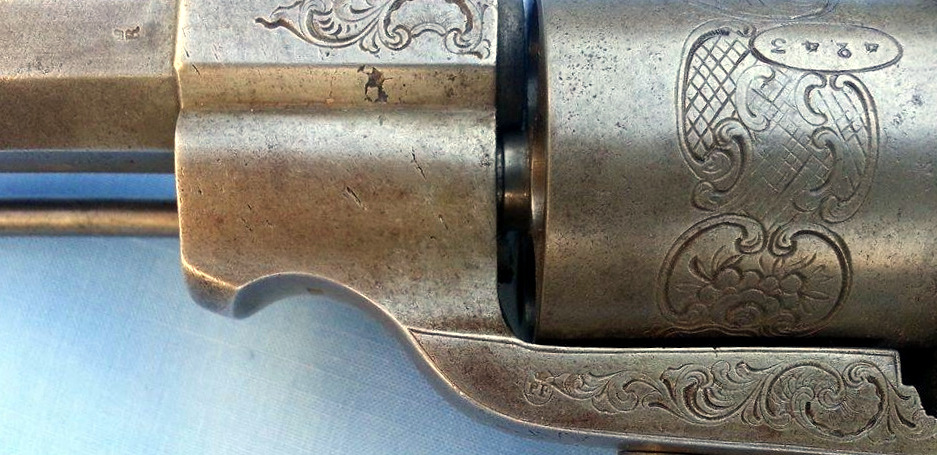
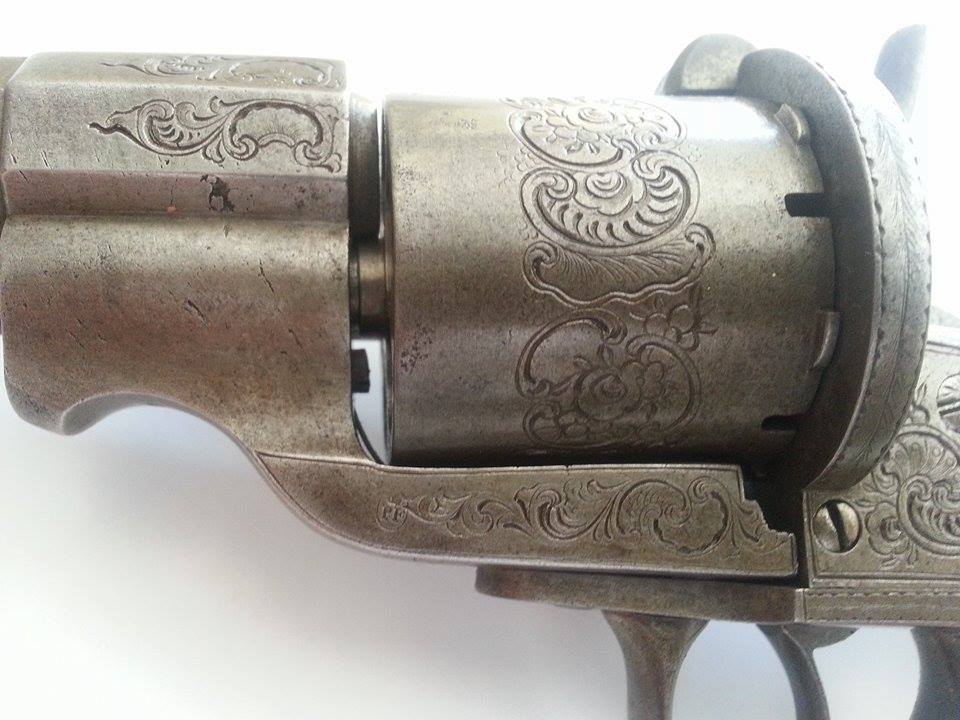
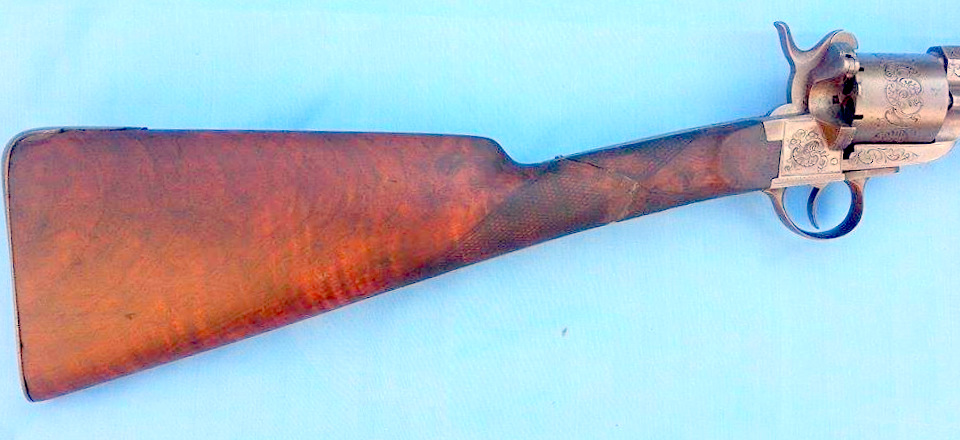


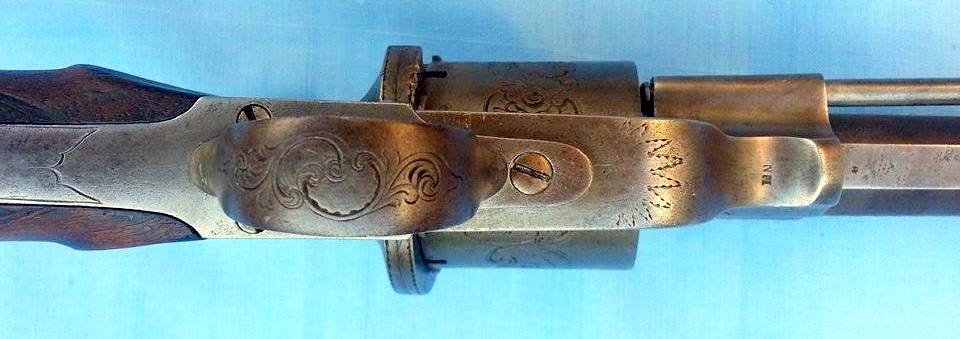



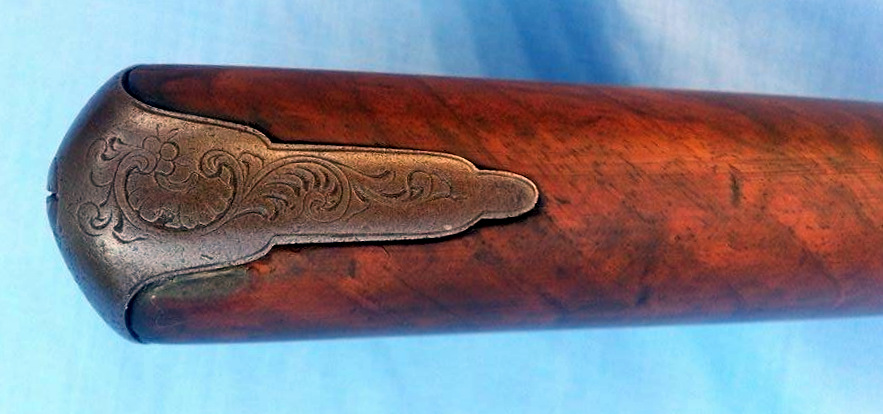
Pirlot Frères
This is a two-shot piston pocket pistol. Presumably smooth barrels are arranged
on "table". In addition to the two hammers, the percussion system consists of
two removable loading cylinders marked 1 and 2.
These are removed from the device for loading.
The weapon has two triggers, one straight and the other curve allowing you to
fire barrel after barrel! A notch system is placed above the cannons in front of
the hammers.
The walnut stock is probably smooth and rounded.
The weapon bears the two marks of the Liège proofhouse, namely:
ELG* in a vertical oval: definitive acceptance in use
from 1846 to 1893.
G crowned: Controller’s countermark, in use from 1853 to
1877.
It also bears the trademark Pirlot Frères
brevetés (patented) in a lying oval.
These armourers are well known in the Liège armoury. They were active from 1836
to 1879 and filed 5 patents for inventions. Unfortunately, I did not find the
patent for this gun.
11461: Serial number of the gun.
GG
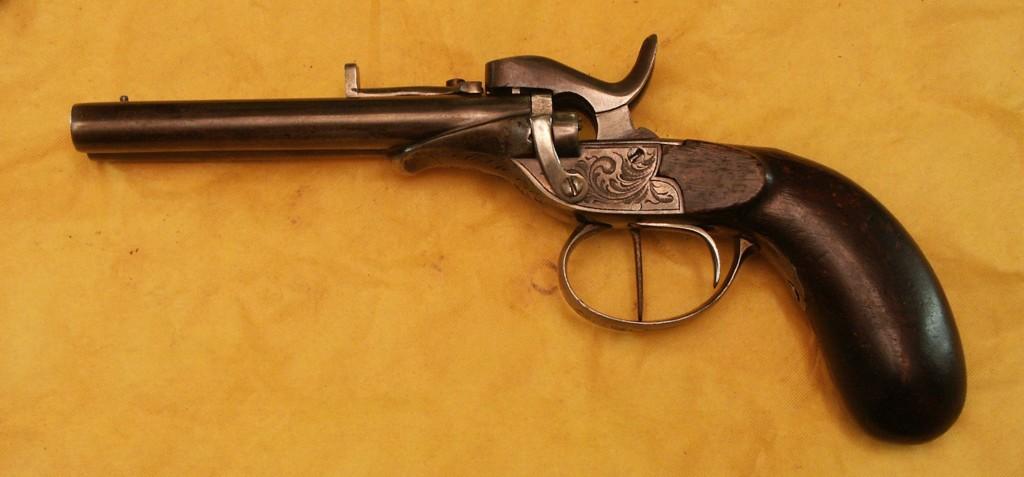
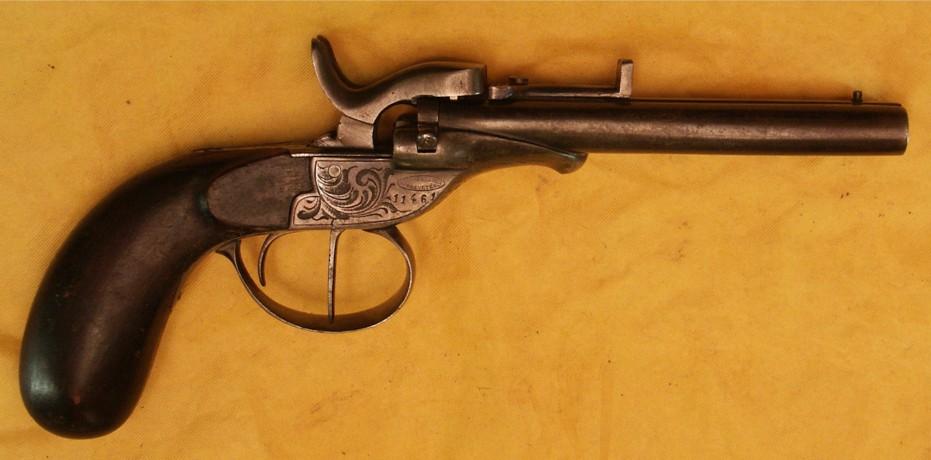
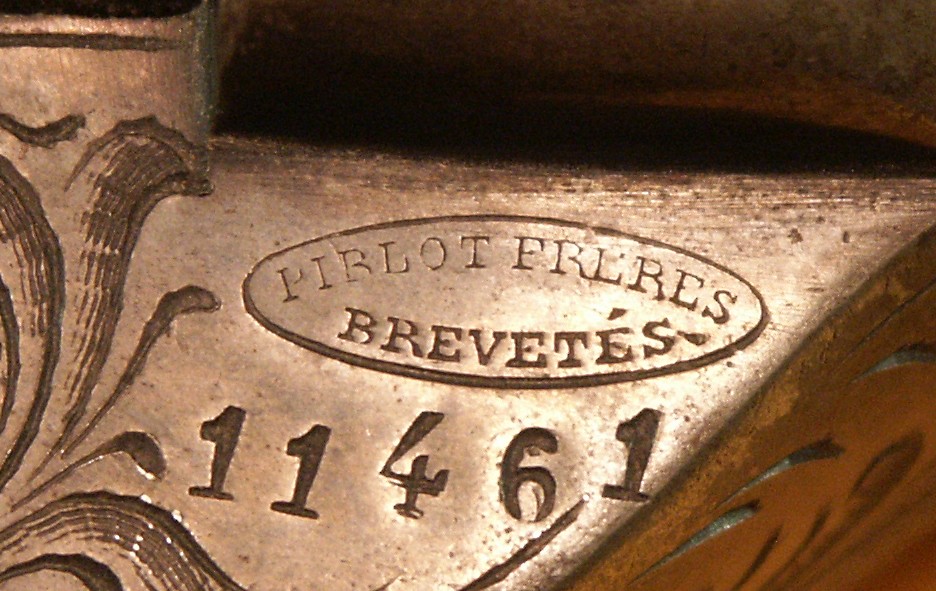
Pirlot Frères
Pinfire rifle from
Pirlot Frères.
Calibre
12 mm
Marked “Pirlot
Frères breveté” and “48”
Loading/unloading is done by lifting the “guillotine” which also acts as a block
on the rear of the ammunition.
Pirlot Frères
Revolver
from Pirlot Frères of type Dean Adams & Dean
The
hammer is without spur, which confirms the fact that it works in double action
only.
Serial
number: 20084. Caliber: .45
Barrel
lenght: 7“. Overal lenght: 335 mm. Wight: 950 g
The front
sight is laterally adjustable and the rear sight is fixed.
H.K.

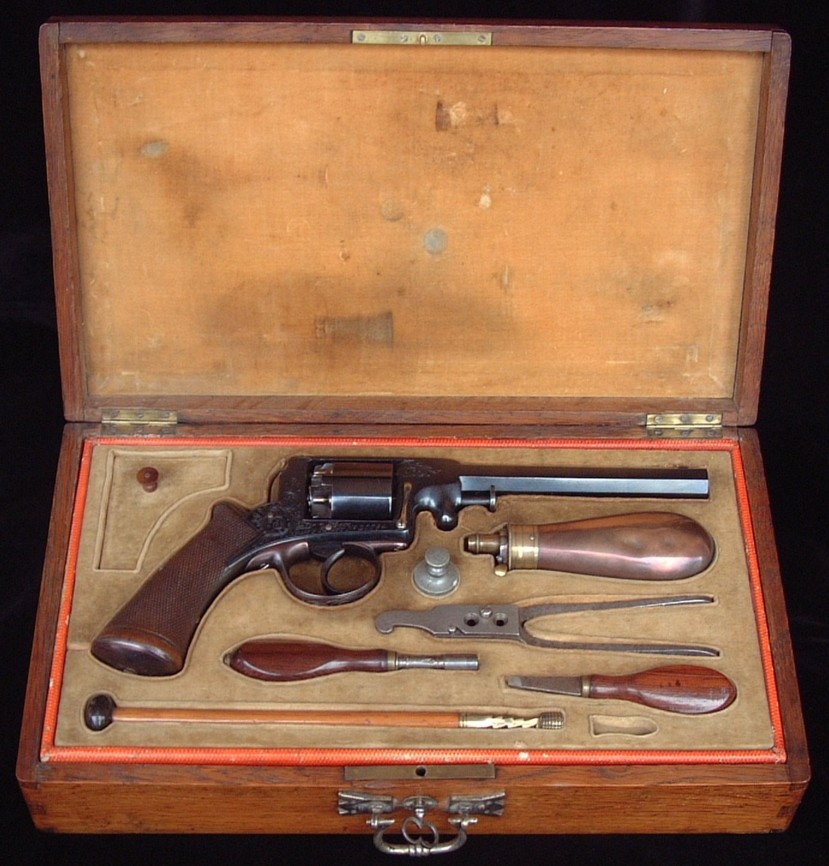
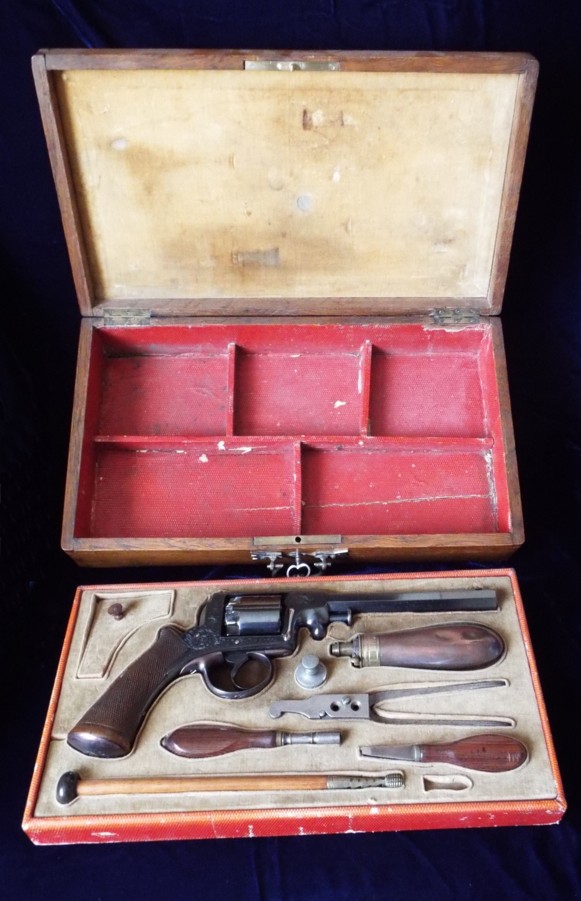
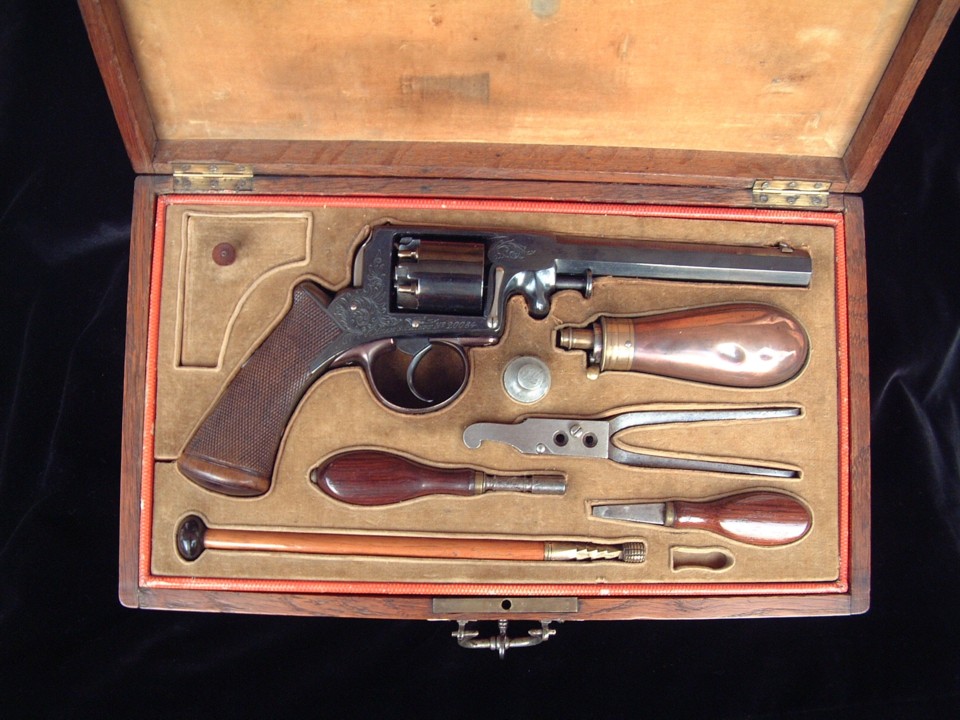
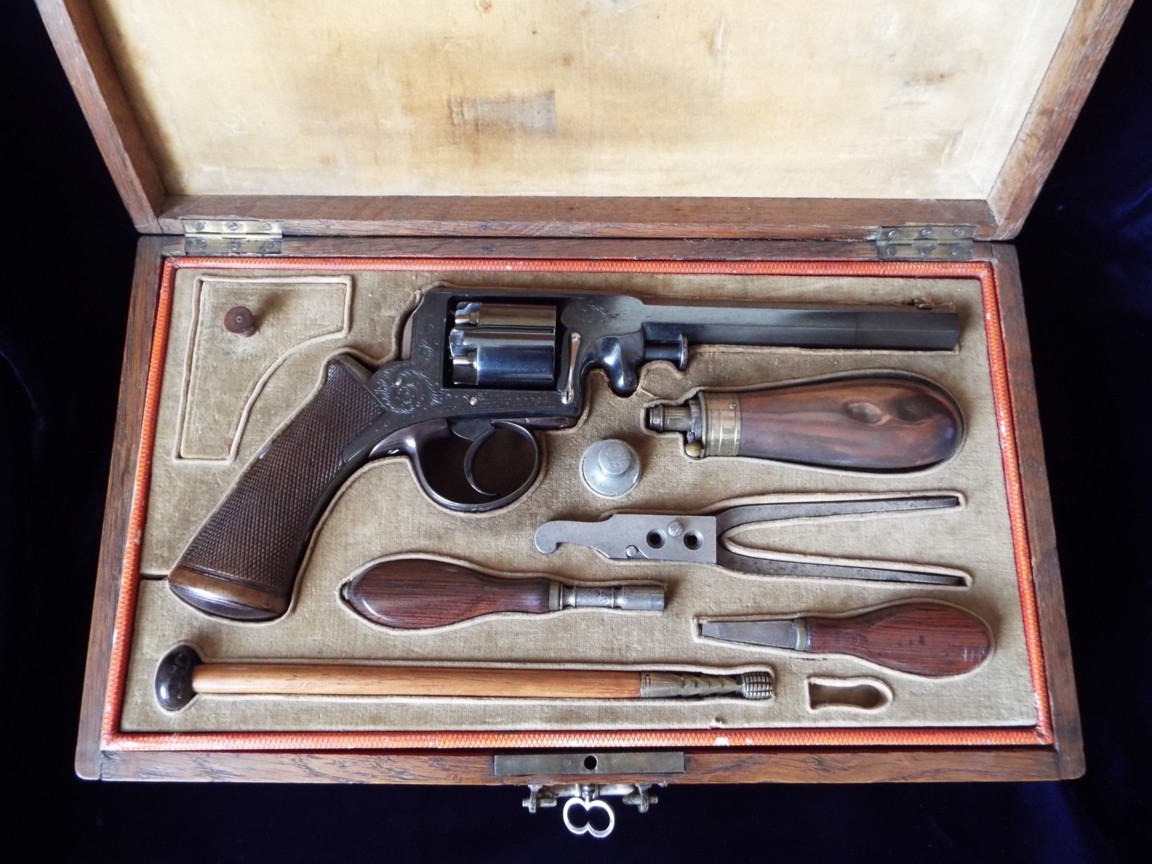
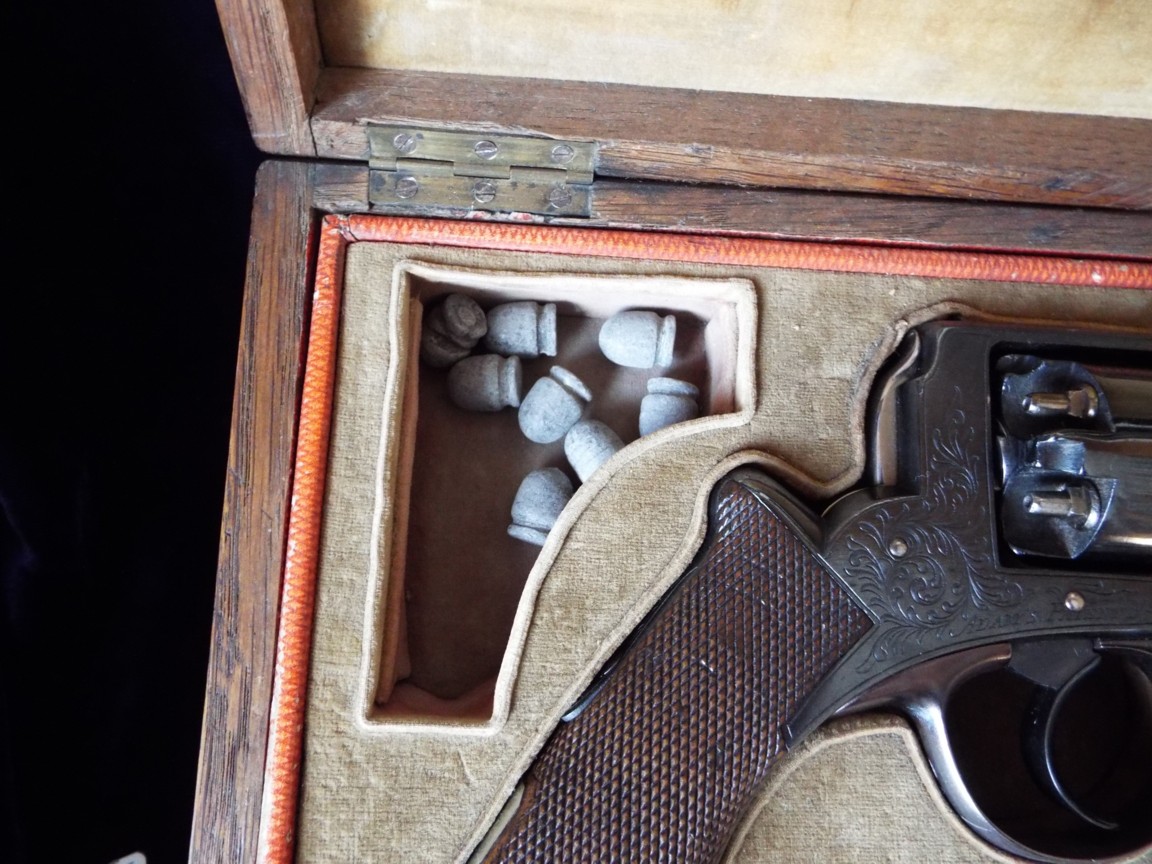
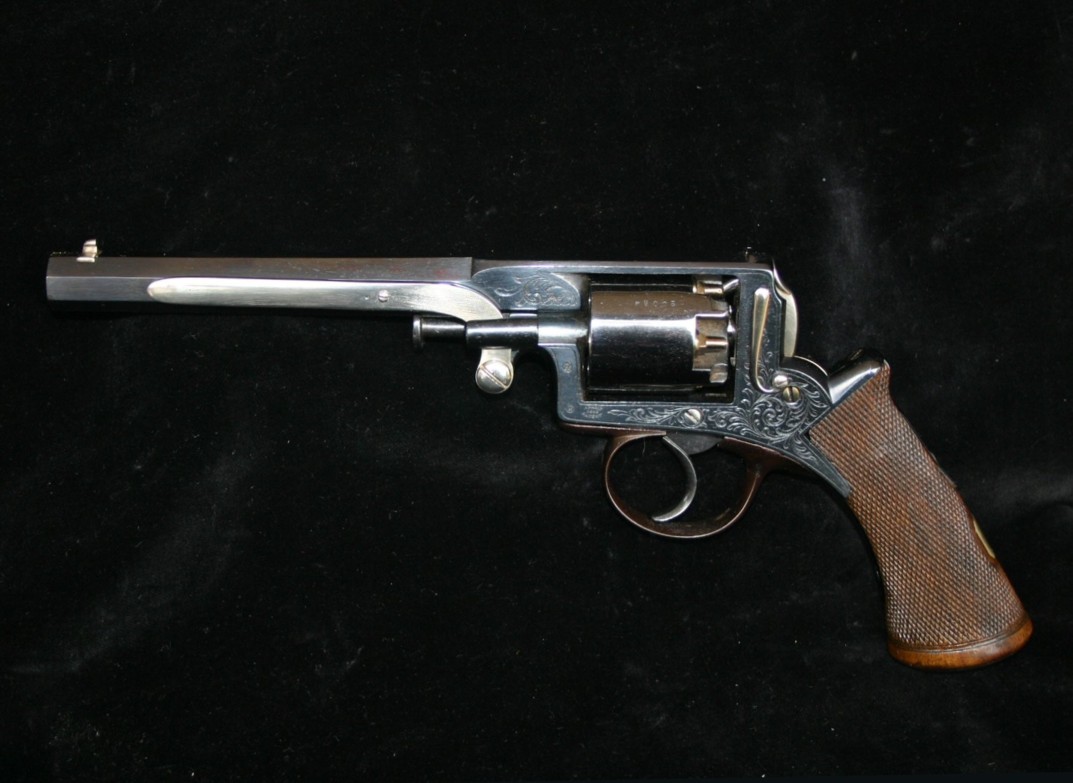
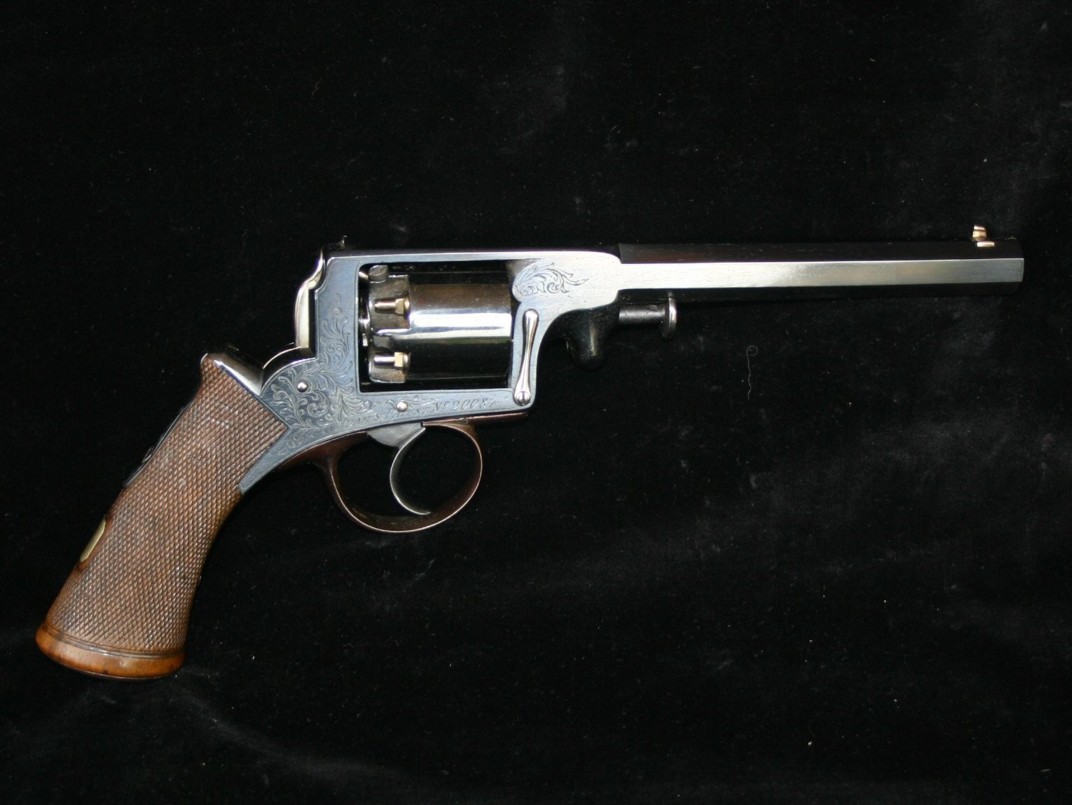
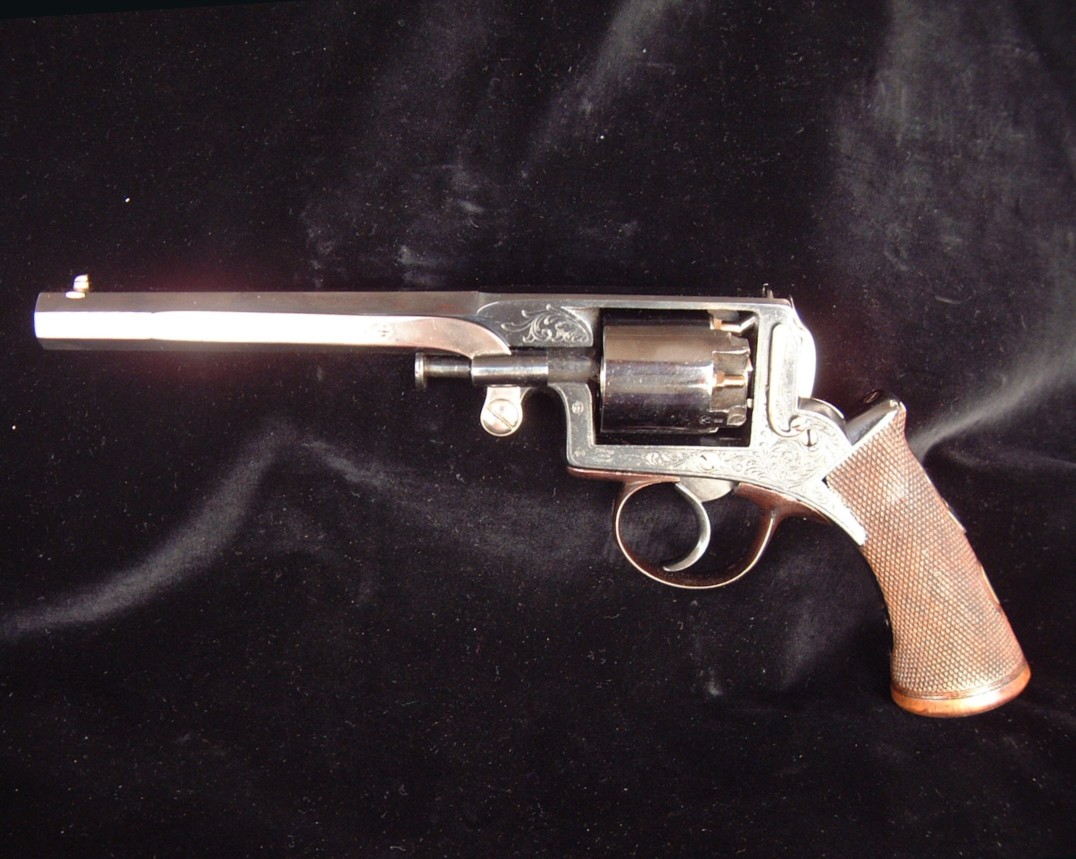
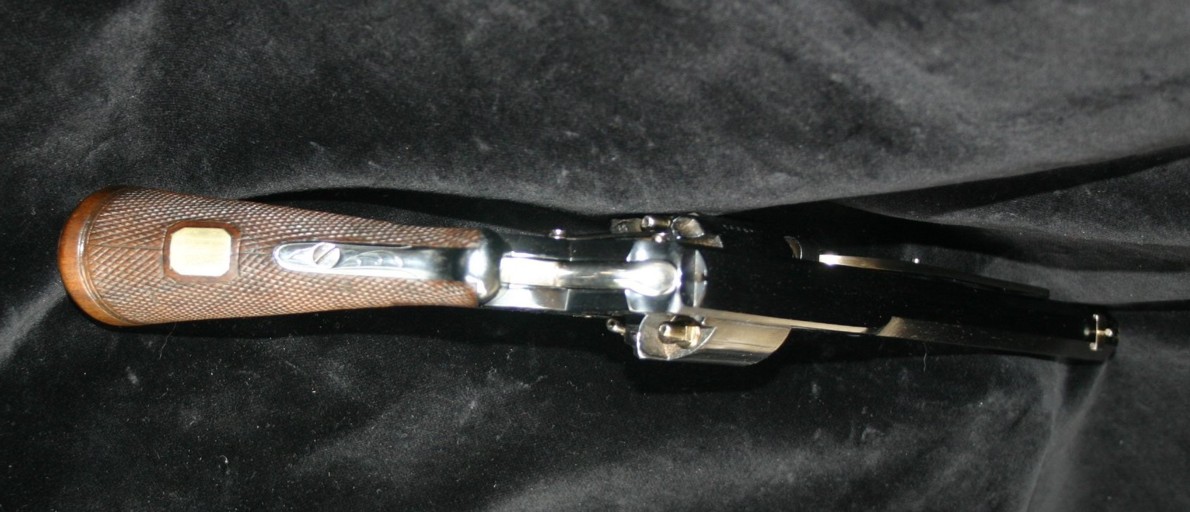
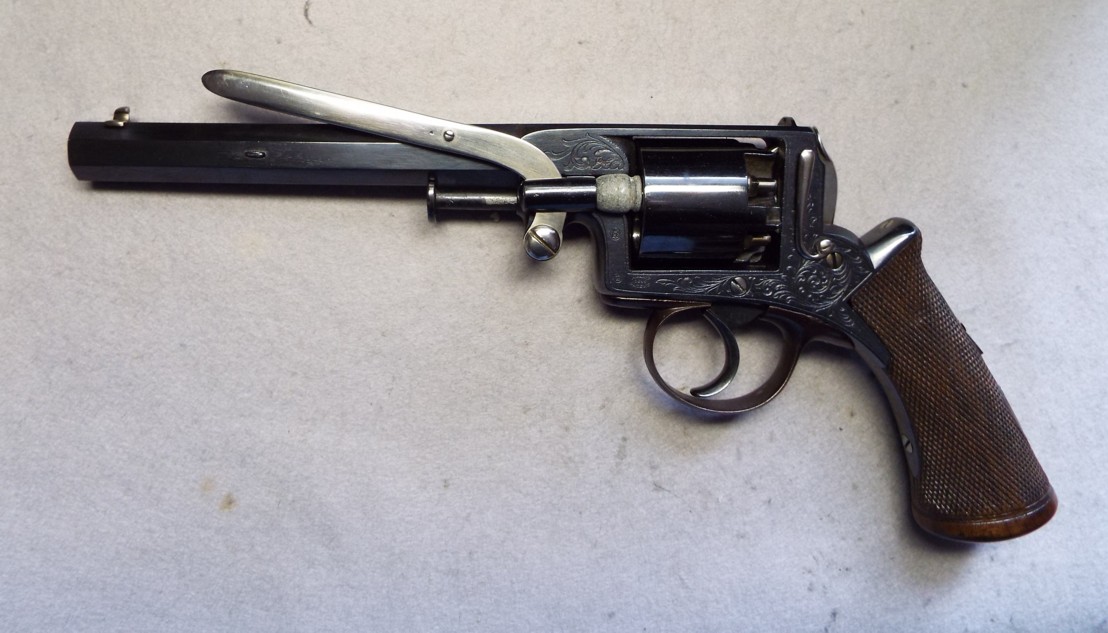
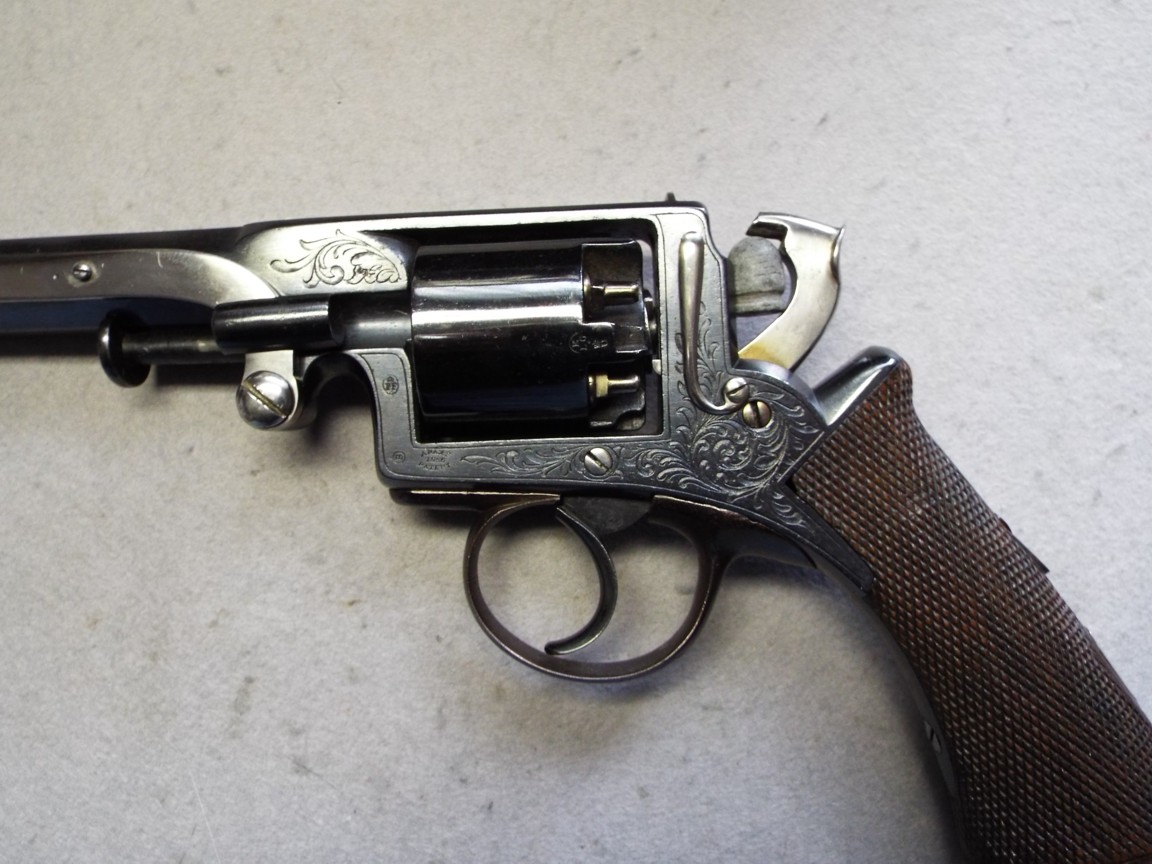
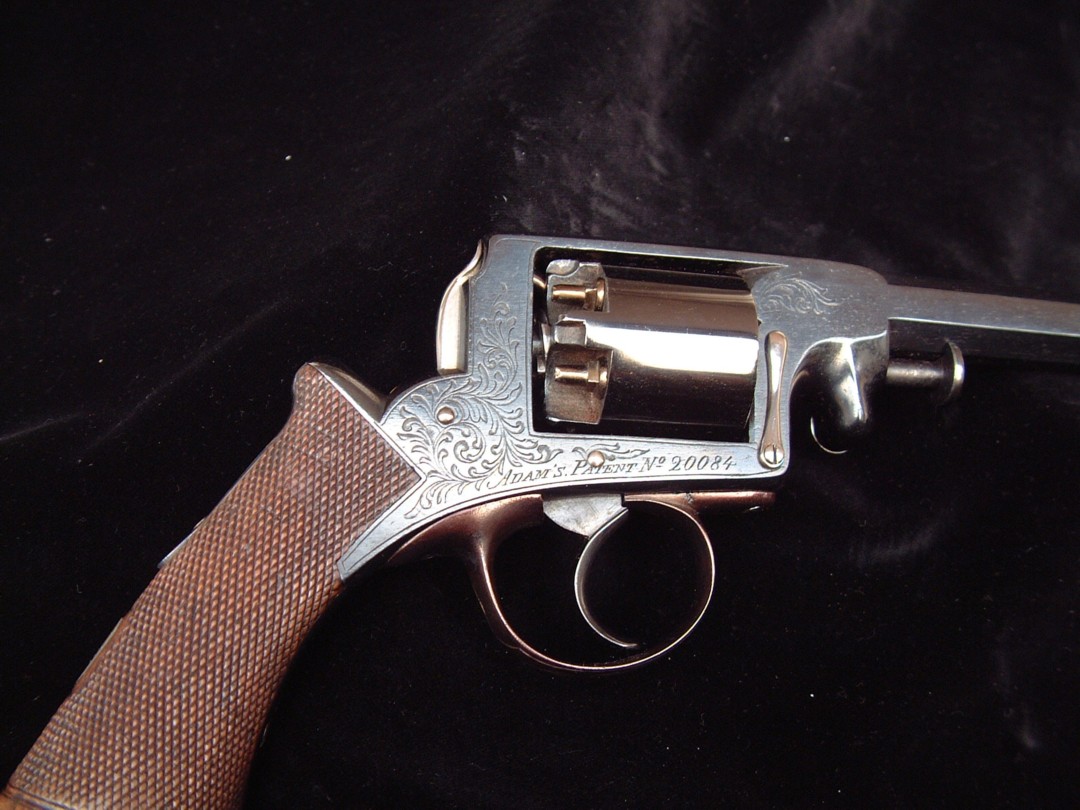
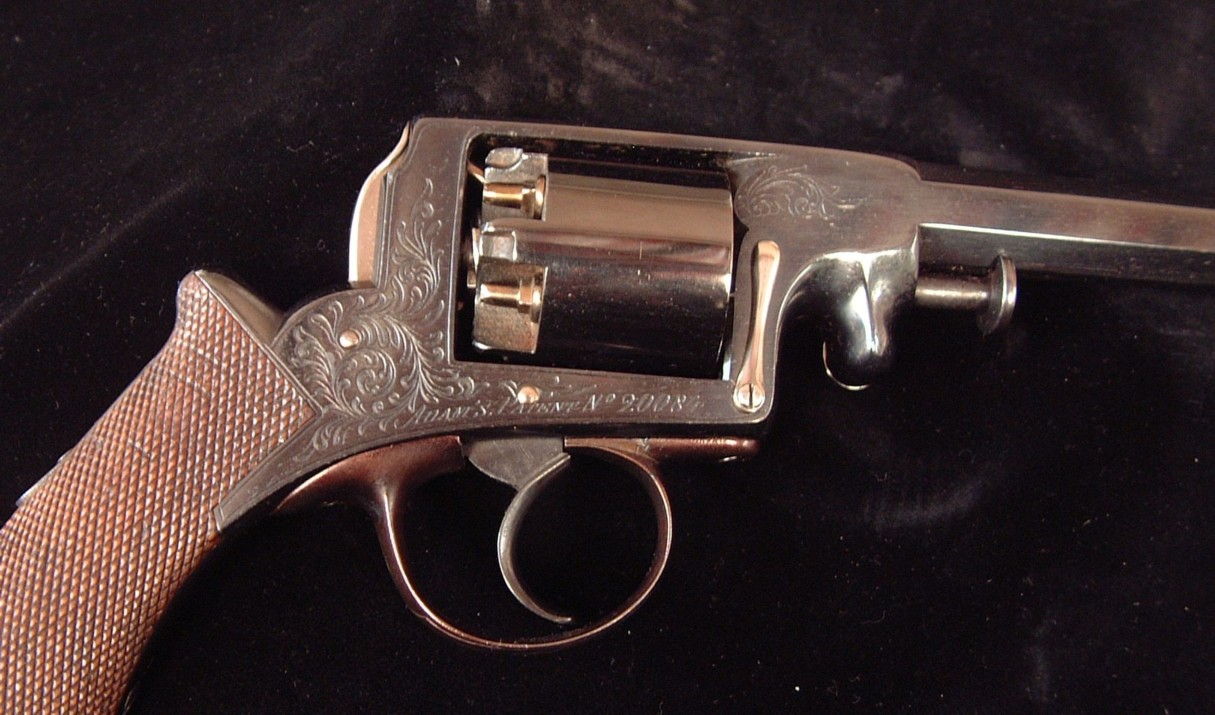
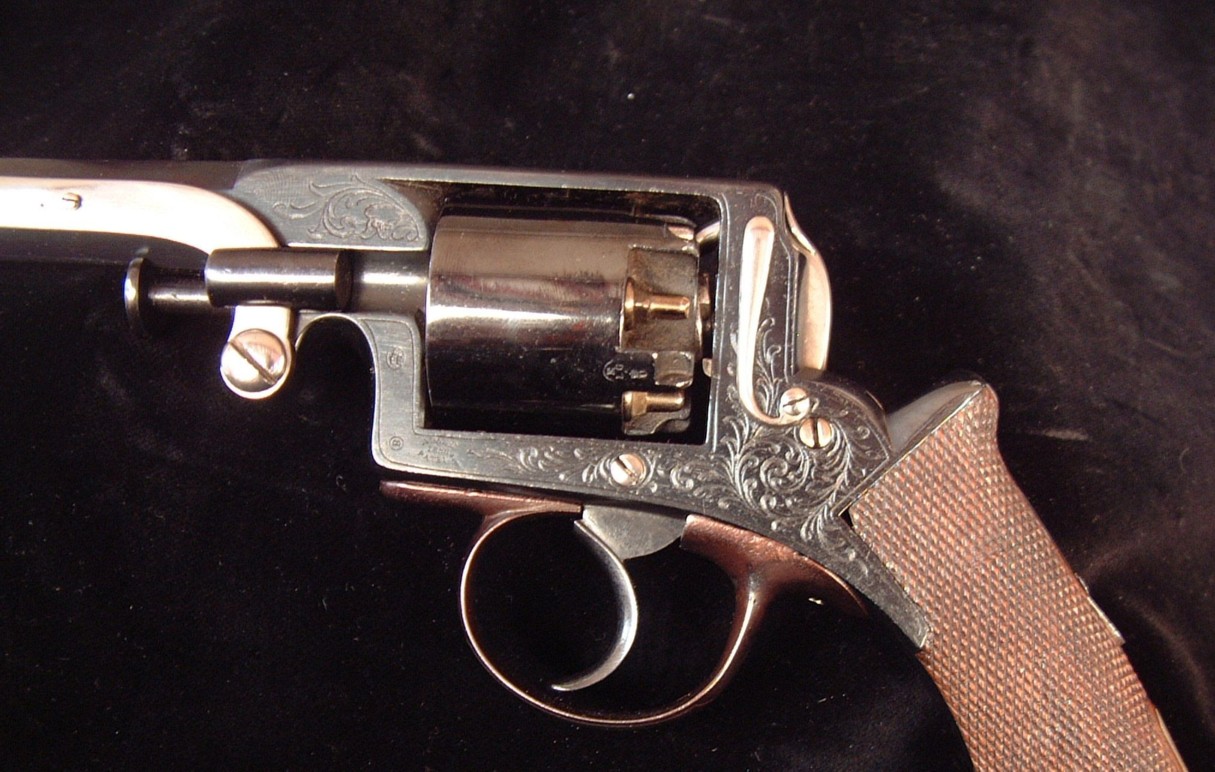
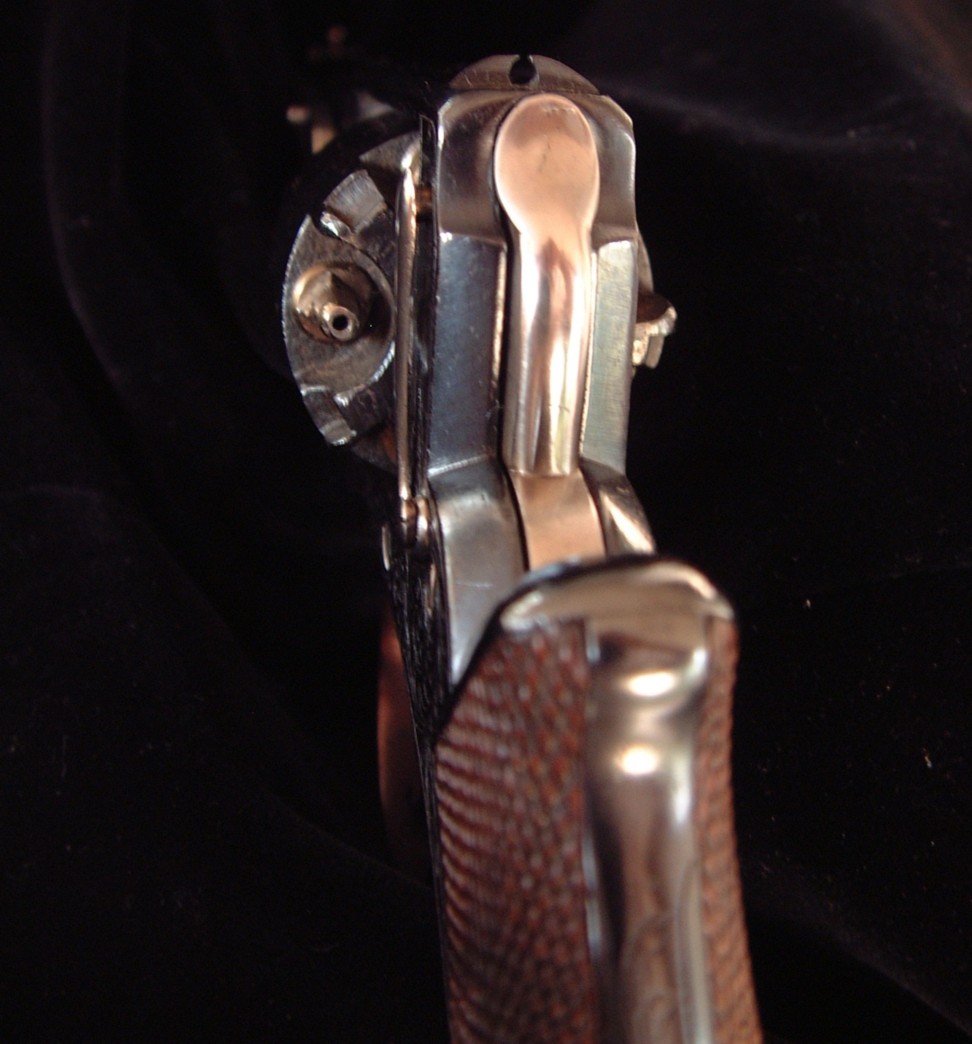
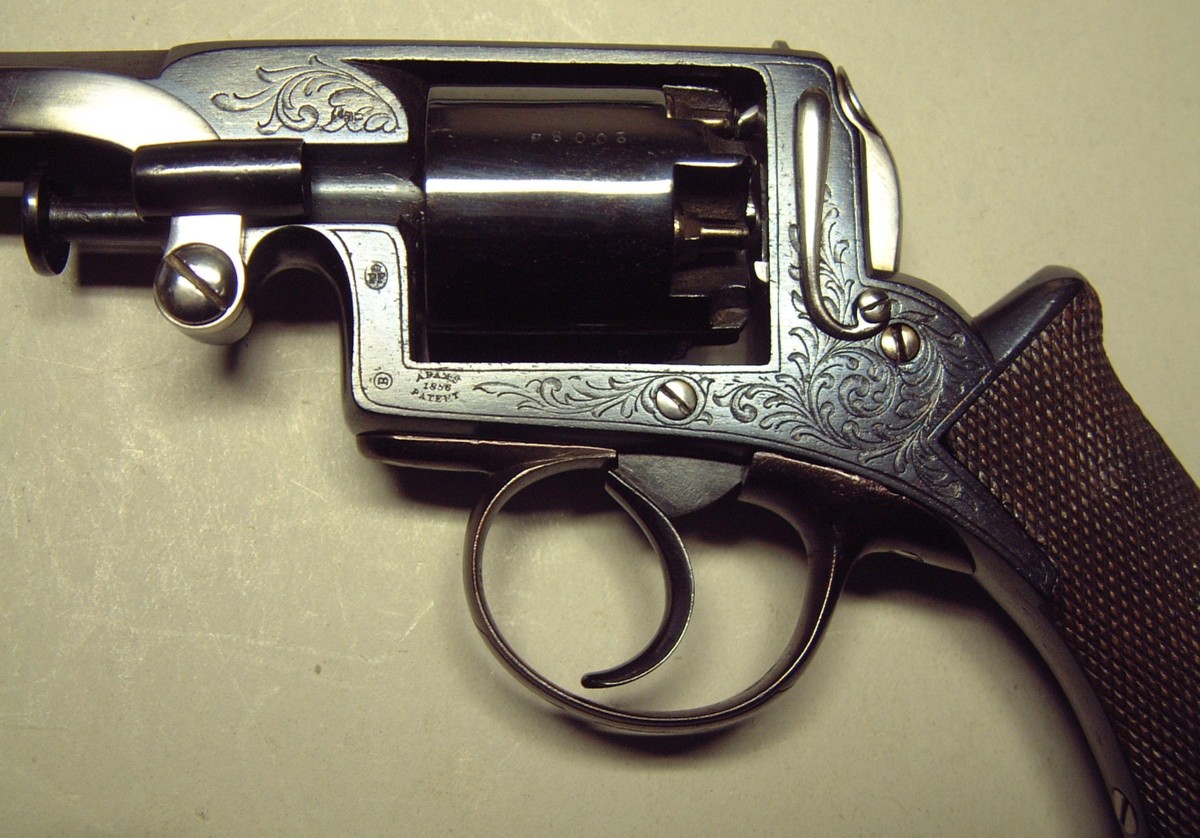
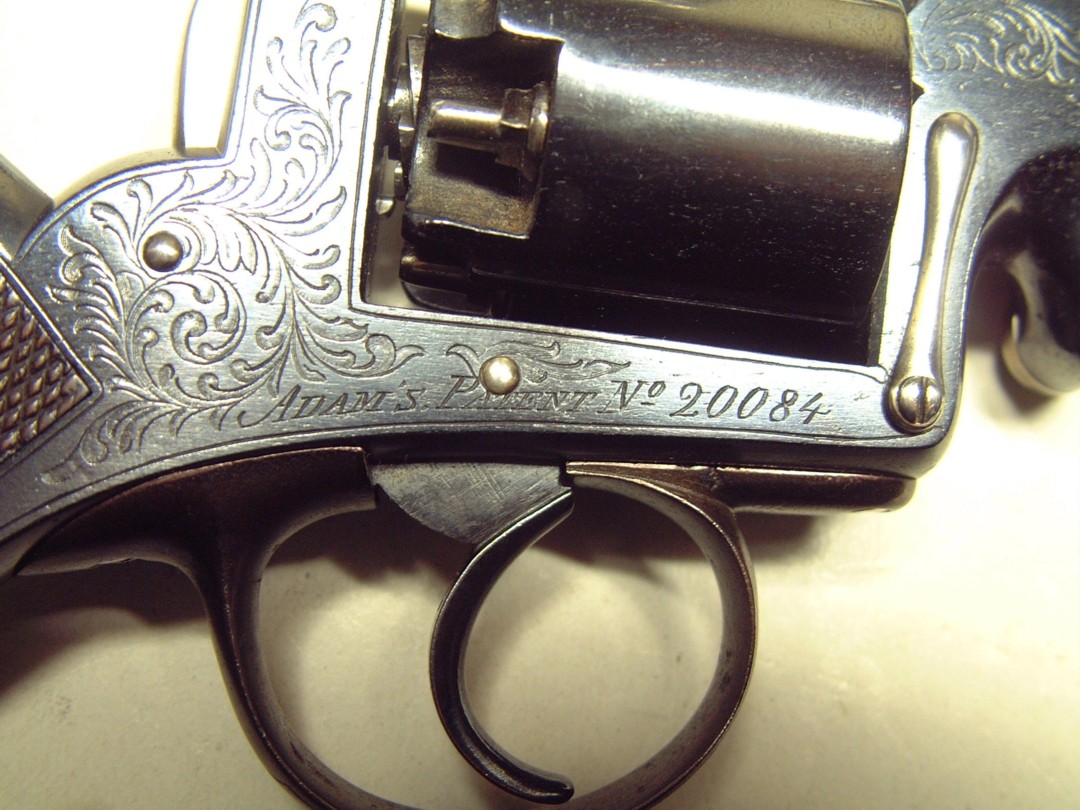


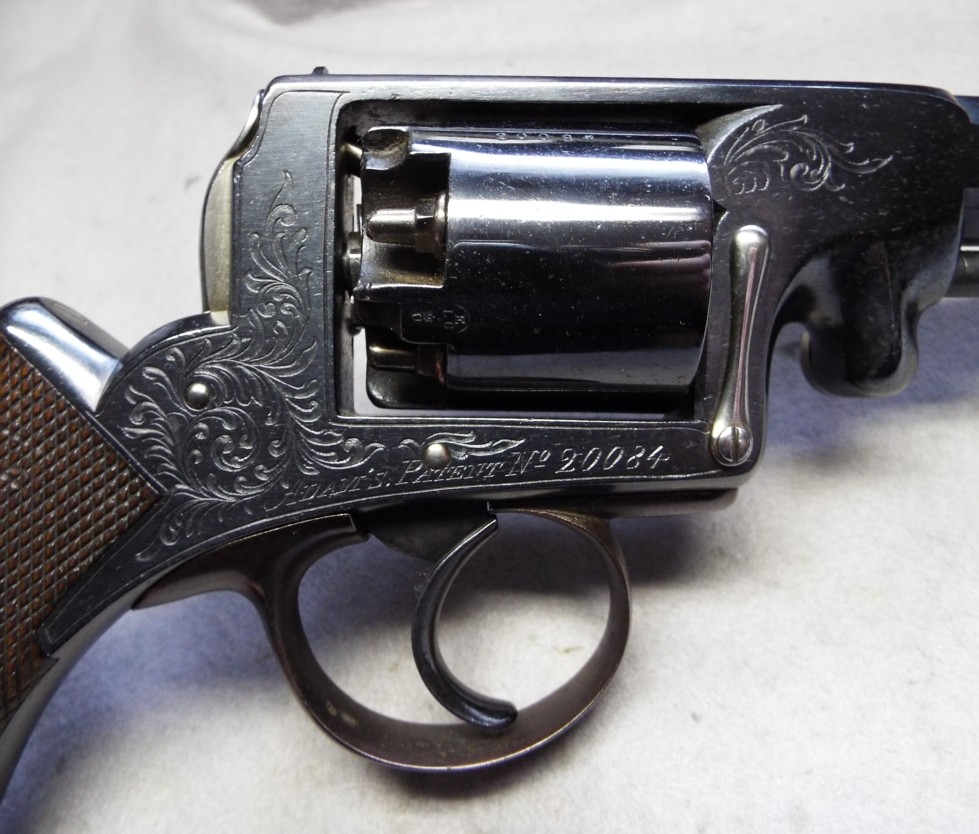
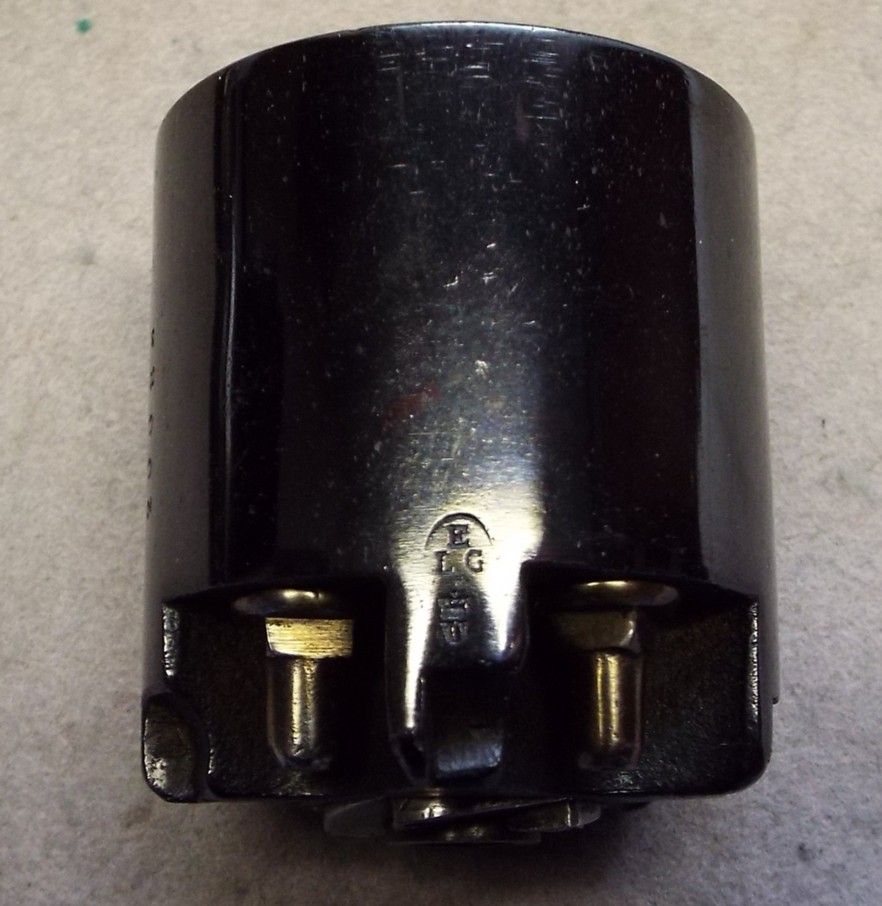
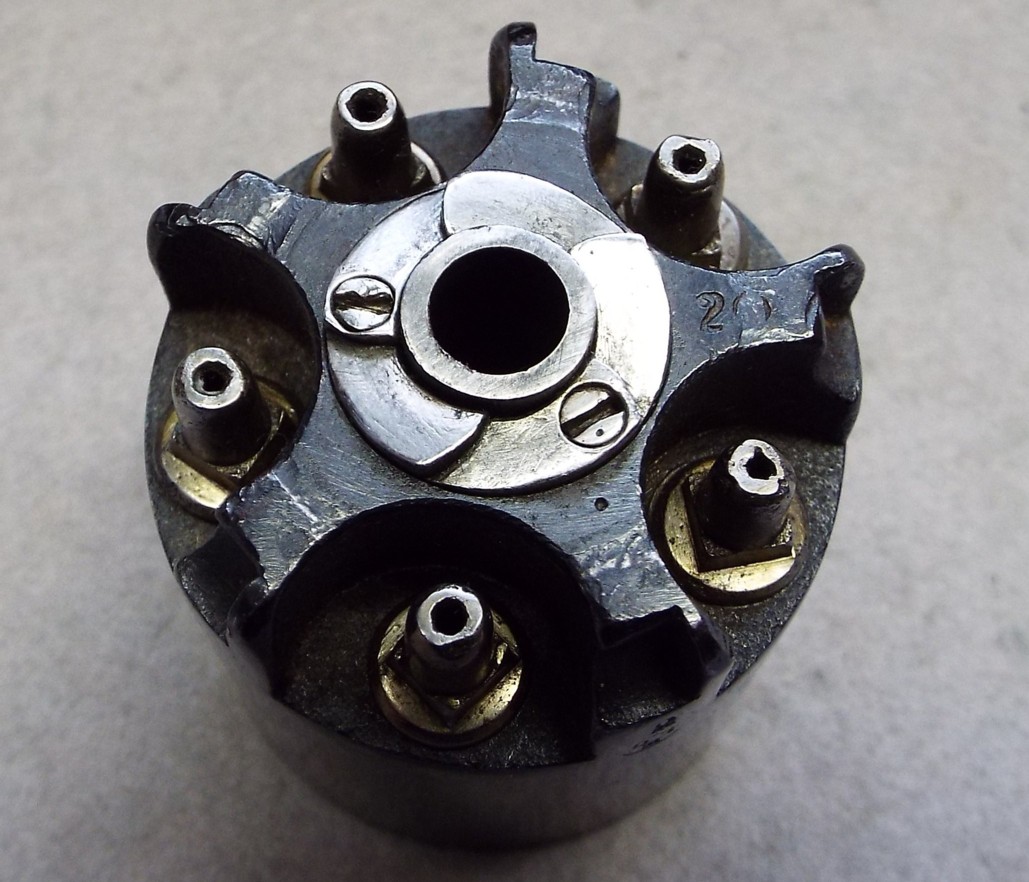
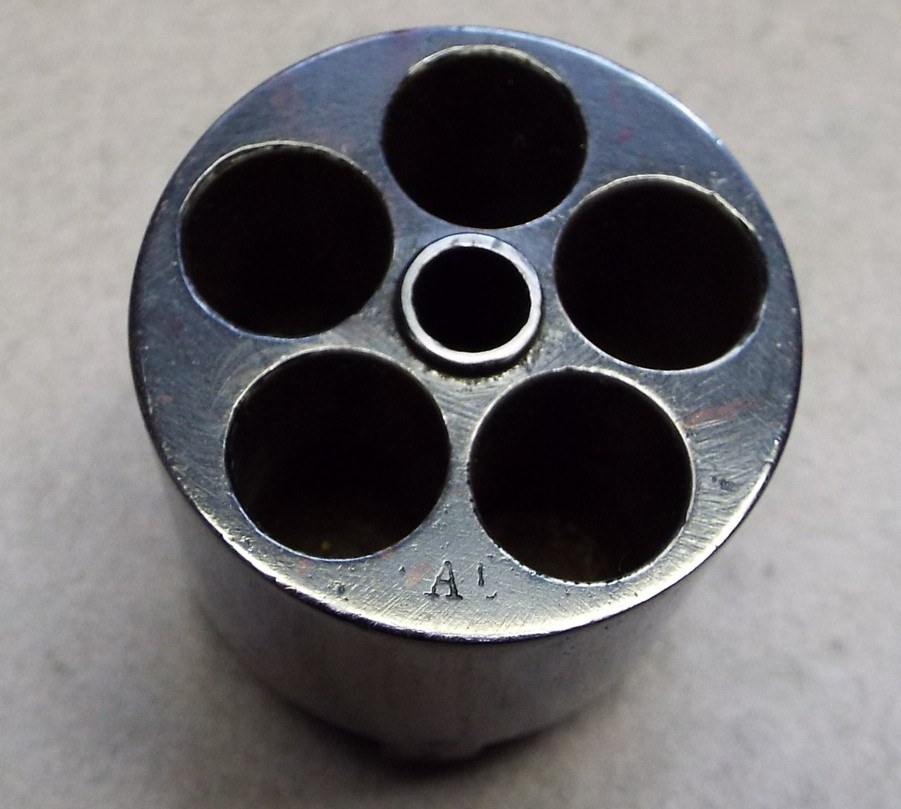
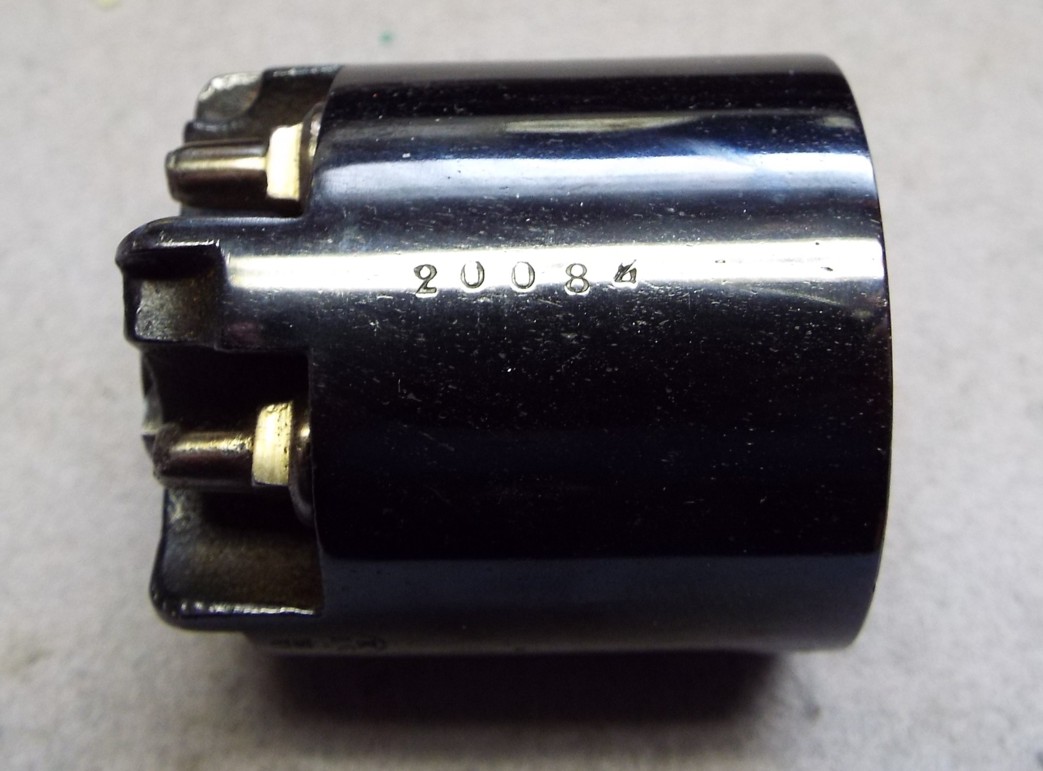
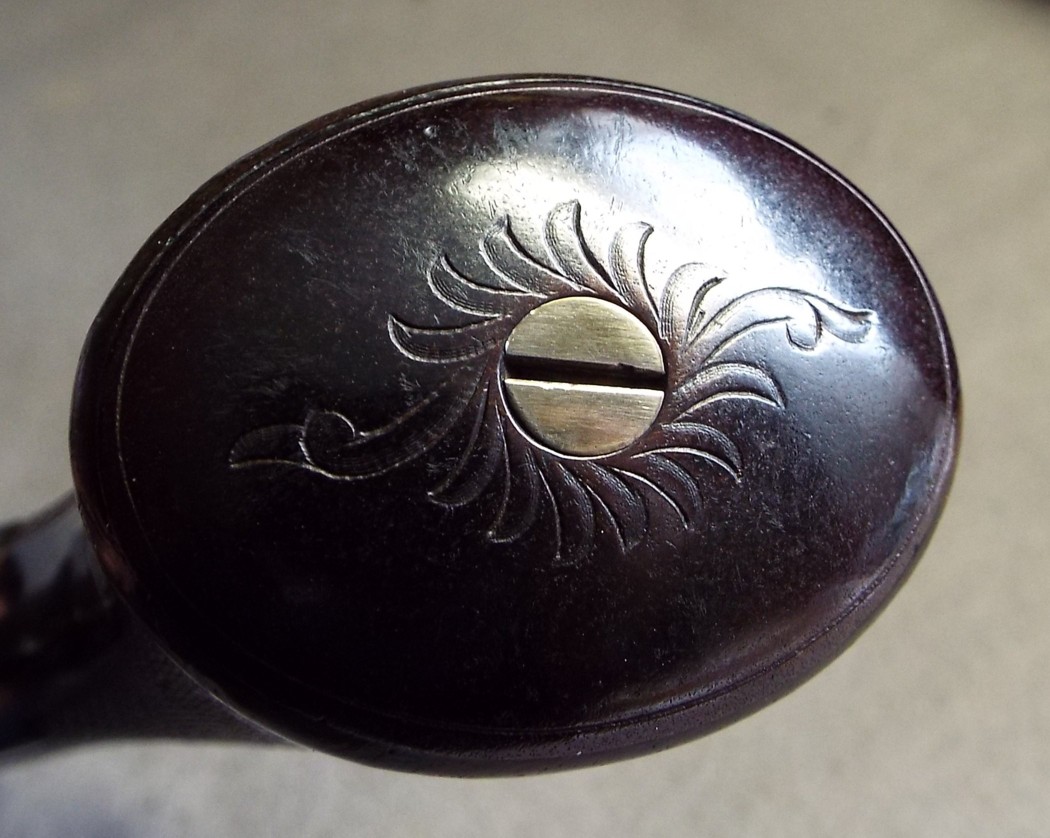
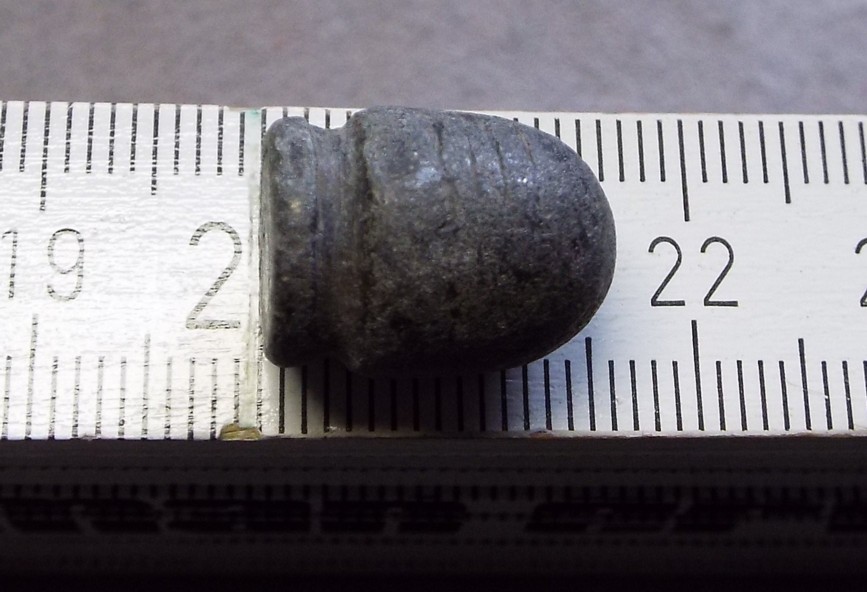
Pirlot Frères
Pinfire pistol Pirlot
Calibre 12 mm
Pirlot Frères
Revolver 1874 Chamelot-Delvigne of the patent 1873 manufactured by Pirlot Frères
Calibre 11 mm (73)
PIRLOT Frères
This weapon carries only one partially unobtrusive mark where one can still read PIRLOT and LIEGE!
It is about firm PIRLOT FRERES street Saint Gilles, 95 in LIEGE.
This company was registered with the proofhouse of LIEGE of 1836 to 1879. It deposited 5 patents of 1864 to 1878.
It then joined to become PIRLOT and FRESART (BE 1879/1890) with the same address.
As for much of arms companies of Liège, the files (invoice book, list of customers, etc.) PIRLOT FRERES were not preserved so that we must be satisfied with the observation of the weapons preserved in the private museums or collections and the rare catalogues preserved.
In appendix, you will find a page of the catalog n° 15 of PIRLOT and FRESART presenting some long weapons that the firm manufactured at that time.
GG



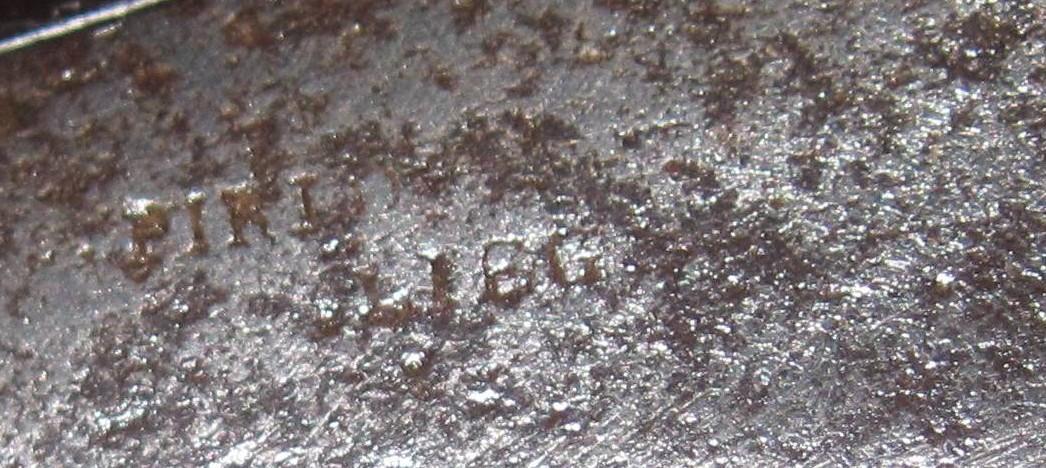
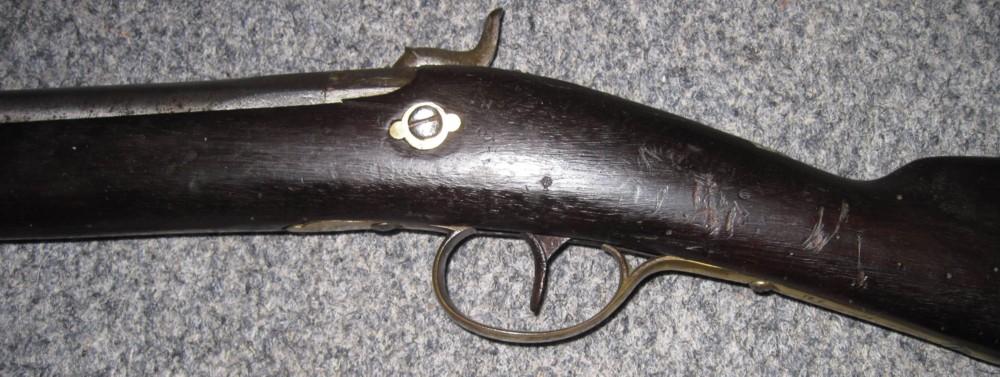
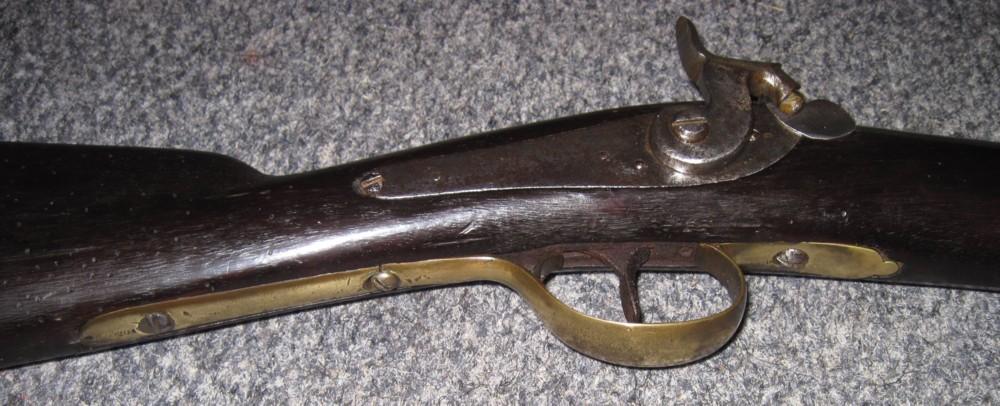
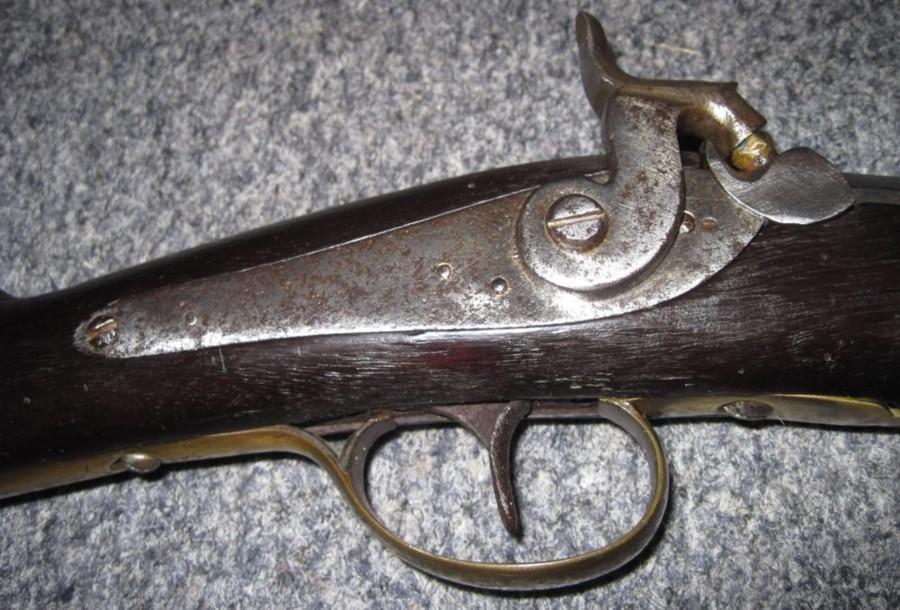



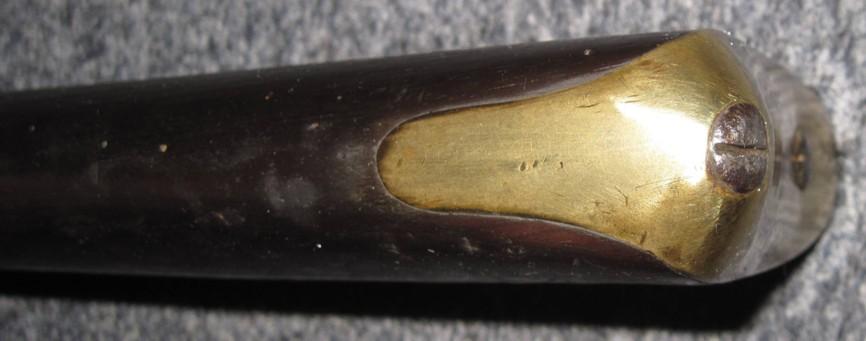
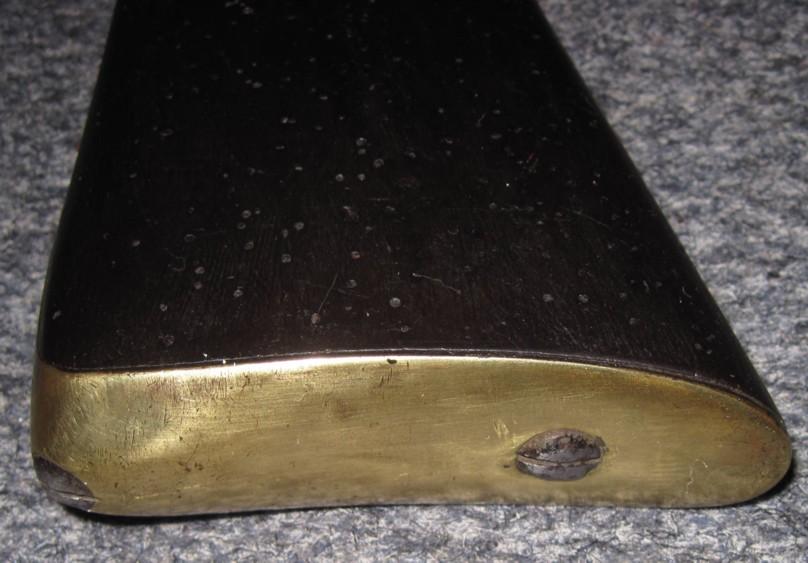
PIRLOT Frères
Model 9 of Chamelot and Delvigne.
One knows that Chamelot & Delvigne made manufacture many of its weapons in Liege, here is a superb example with this model 9 manufactured by Pirlot Frères.
Photos Littlegun
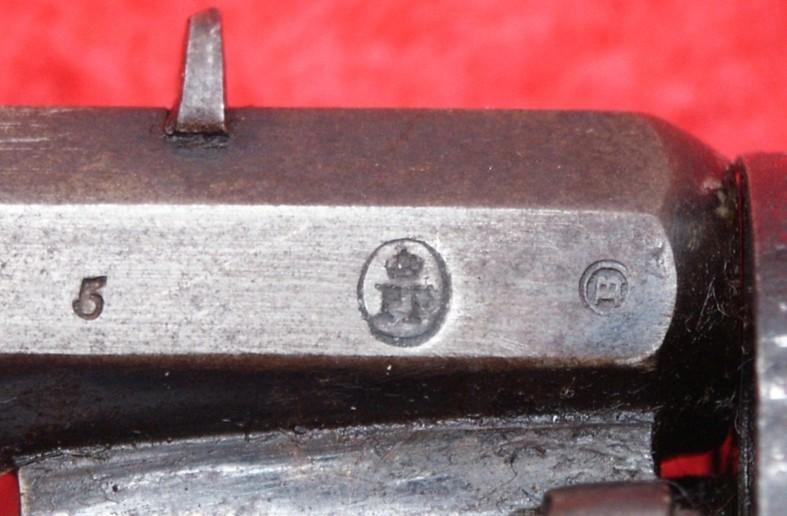
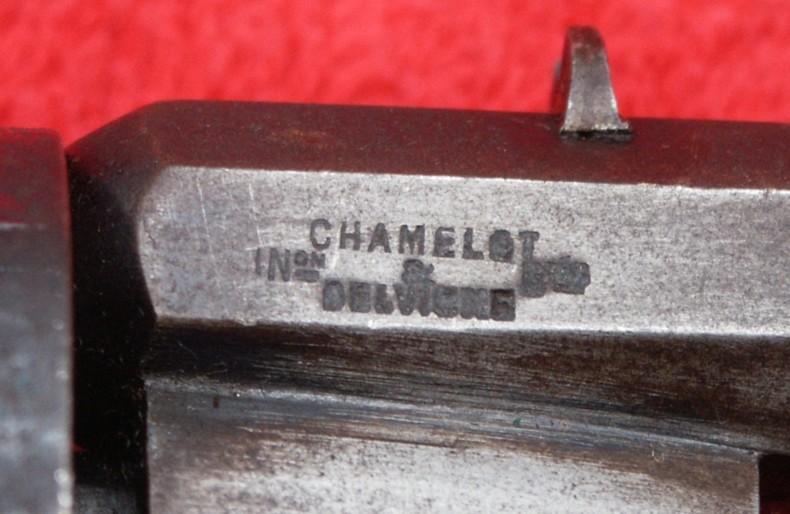
PIRLOT Frères
A perfect copy (improved even by a safety of hammer !!) of a Sharp 1859.
Quadruple sliding barrels for the loading, striker rotary, bronze carcass engraved.
Many thanks to "IVES DEVOS" for the pictures
Photos Littlegun
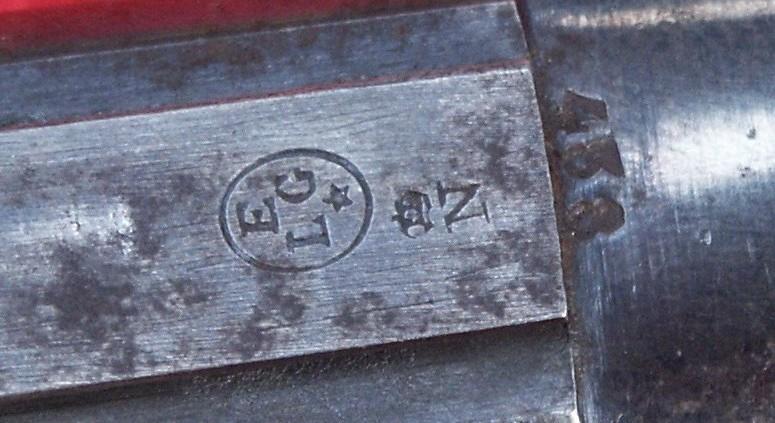
PIRLOT Frères
The weapon
Revolver six shots pinfire of the Lefaucheux type to opened carcass, the handle is in the shape of pear and the trigger without trigger guard is folding.
The manufacturer
Mark PF in a crowned oval is that of PIRLOT Frères (see below) registered with the poof house of Liège of 1836 to 1879.The firm becomes PIRLOT and FRESART in 1879.
GG

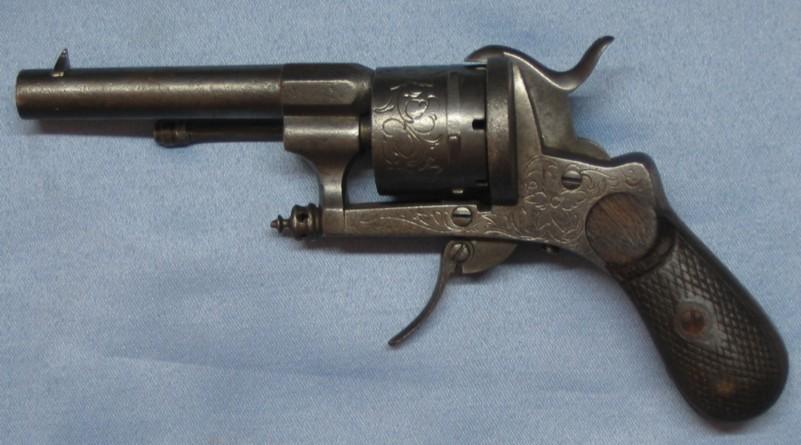
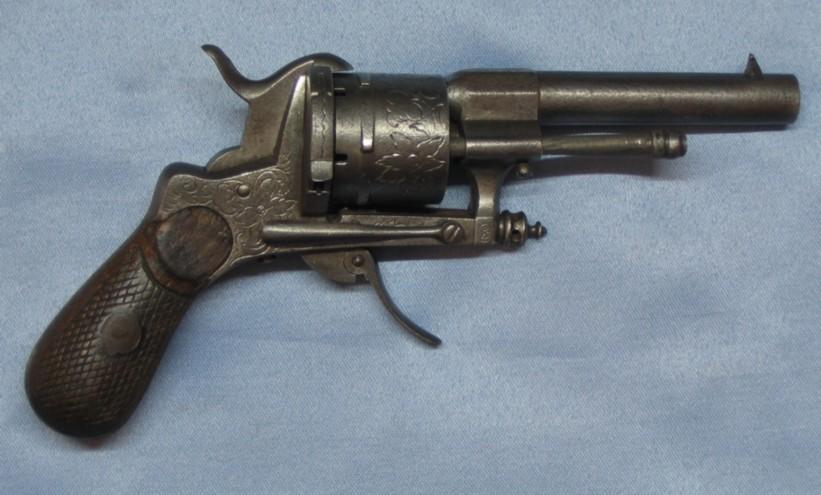
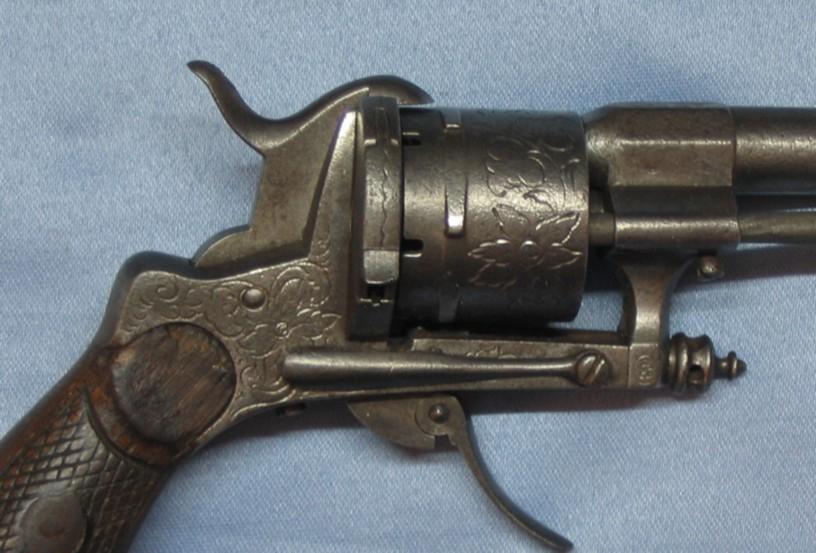
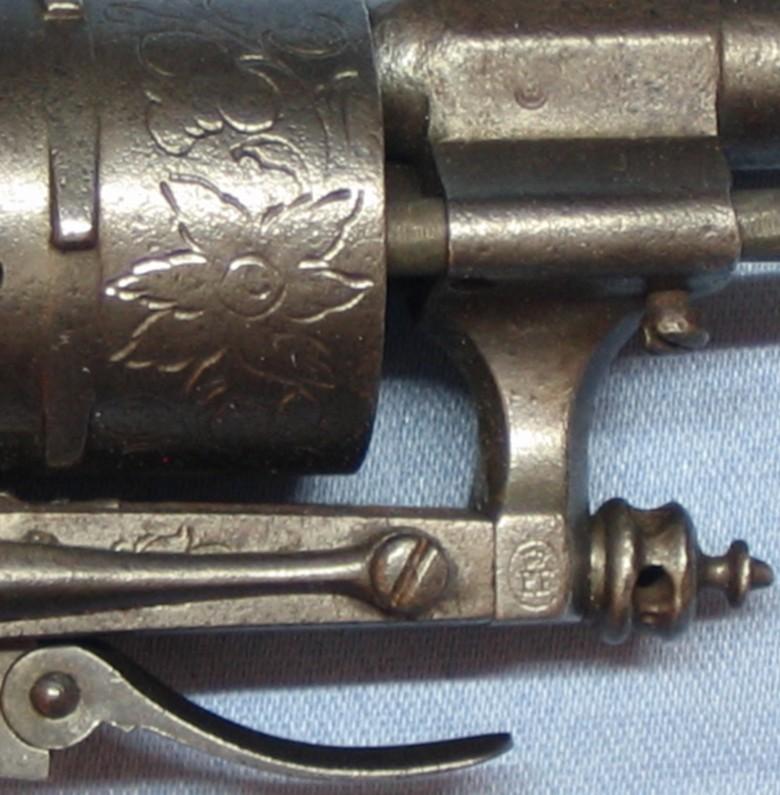
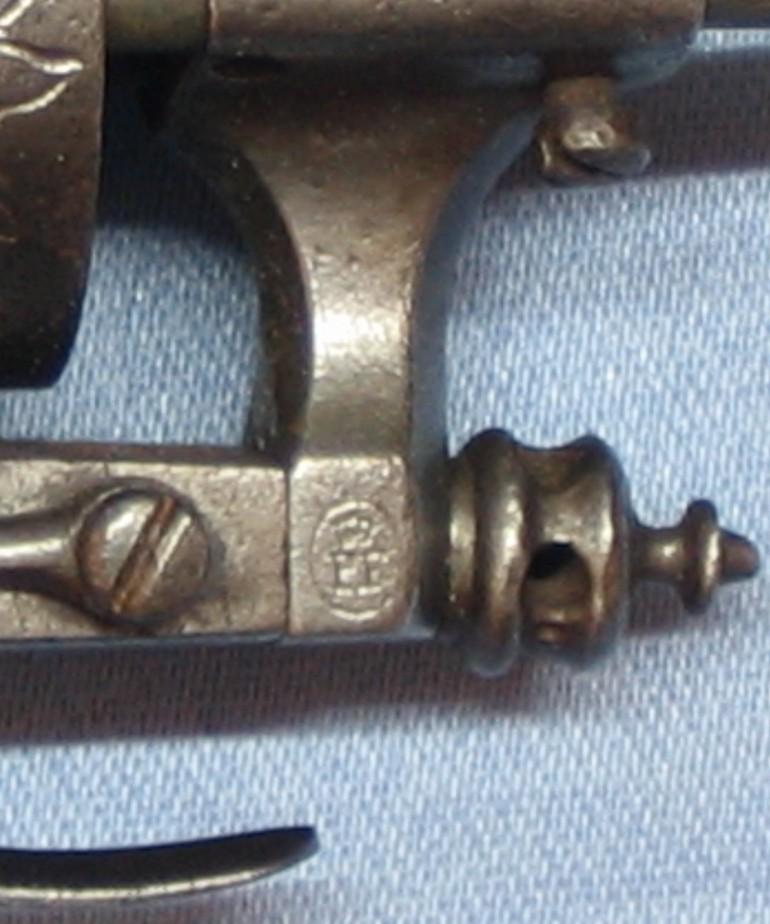
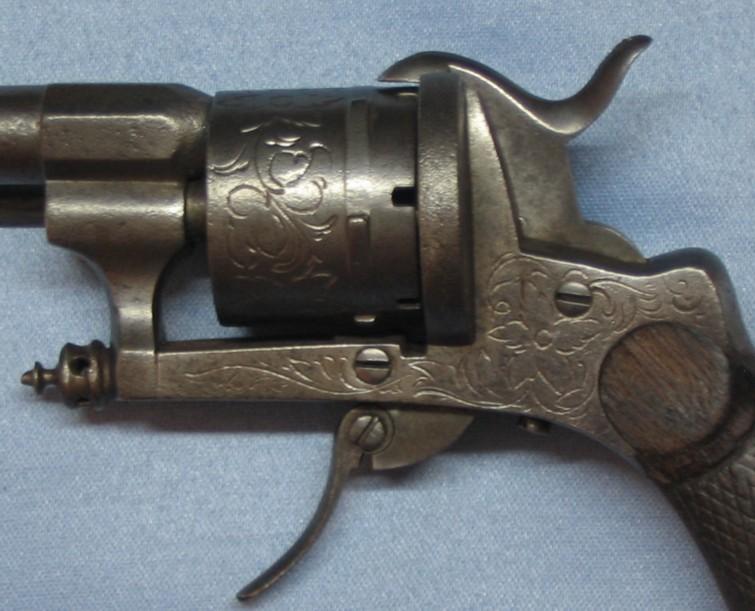
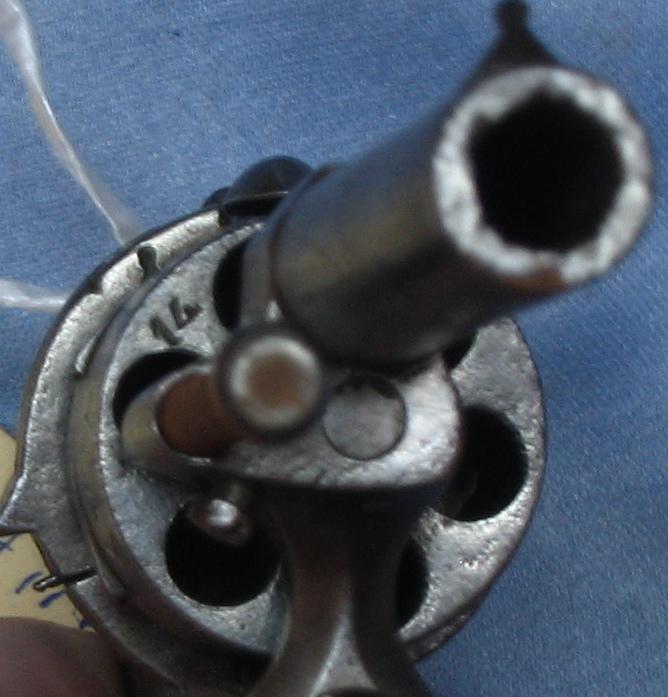
Another similar revolver.
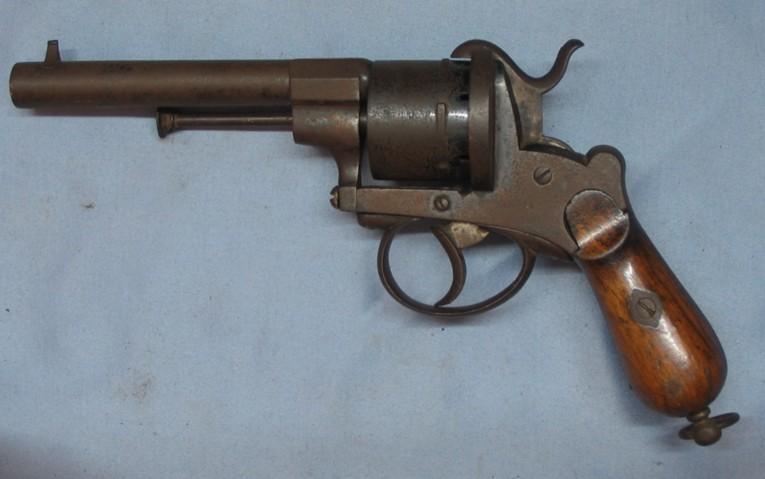
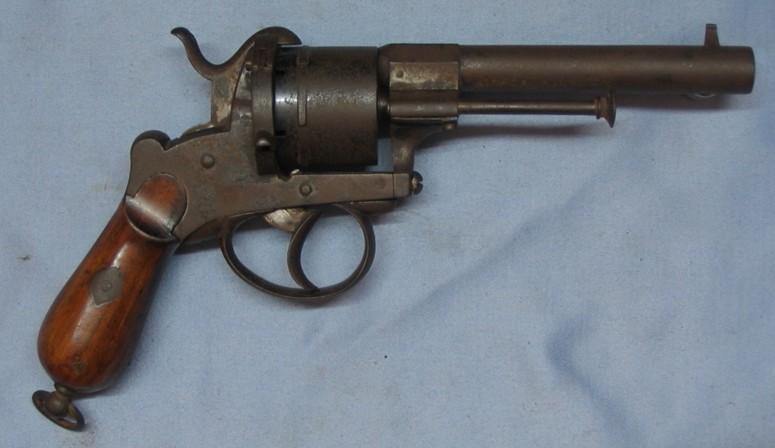
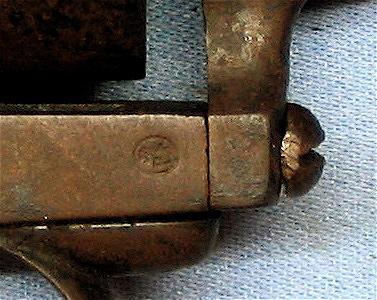


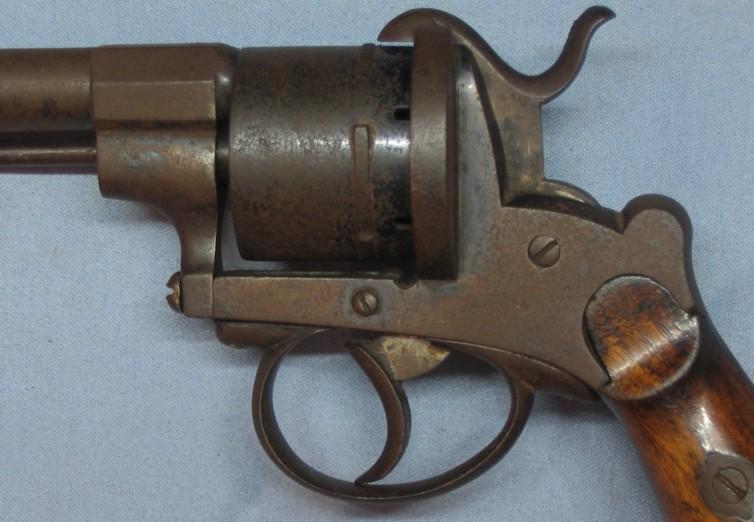
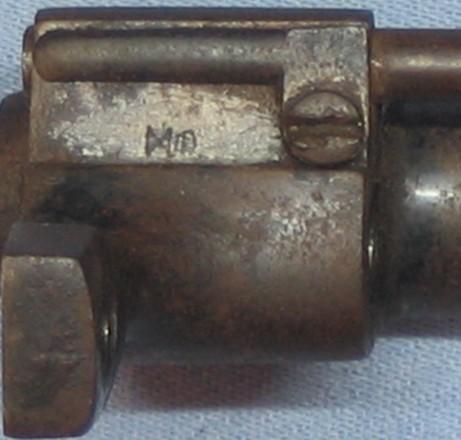
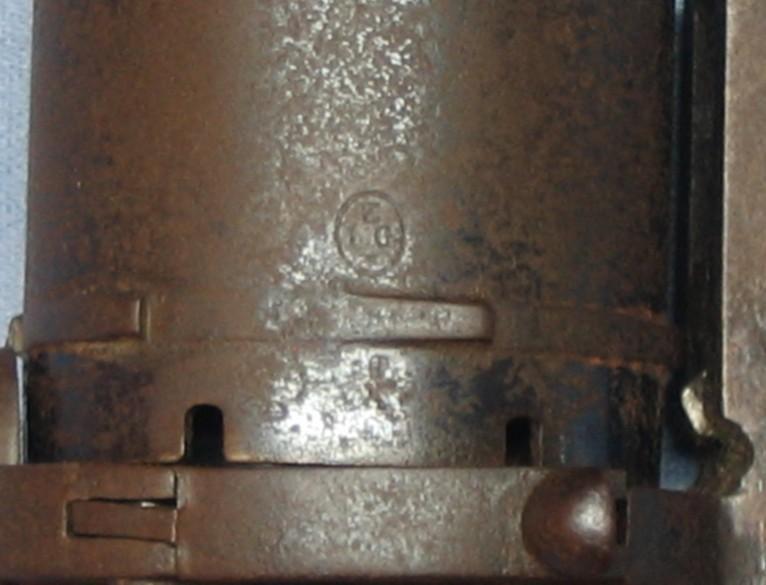
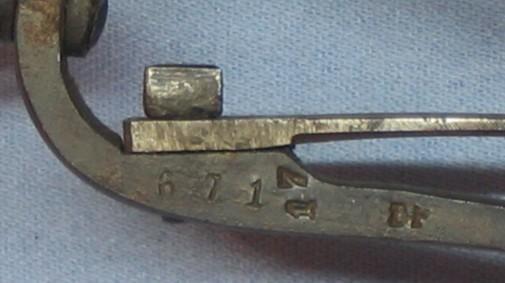
Pirlot Frères
Many thanks to "Zendy" for the photos.
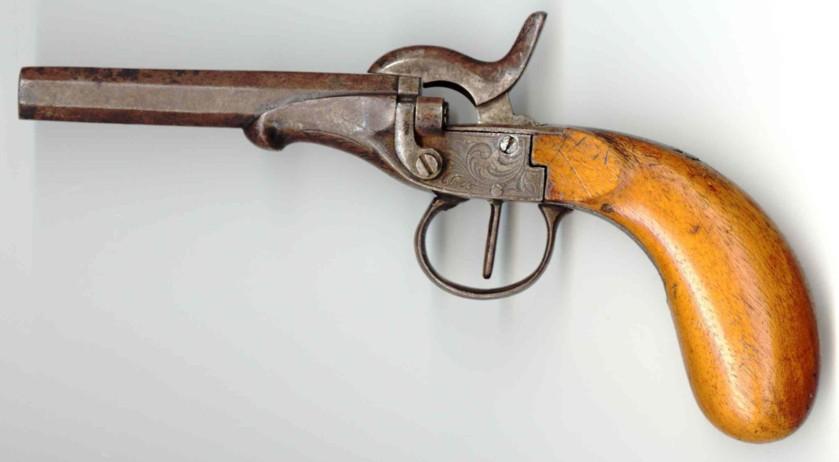
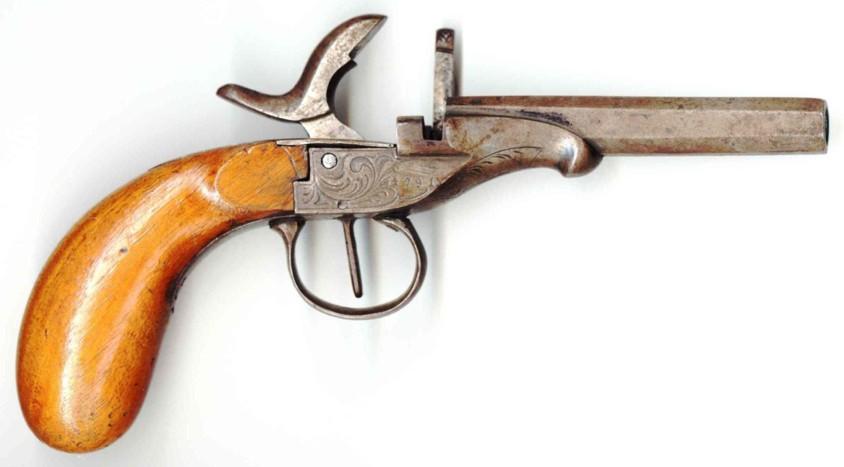
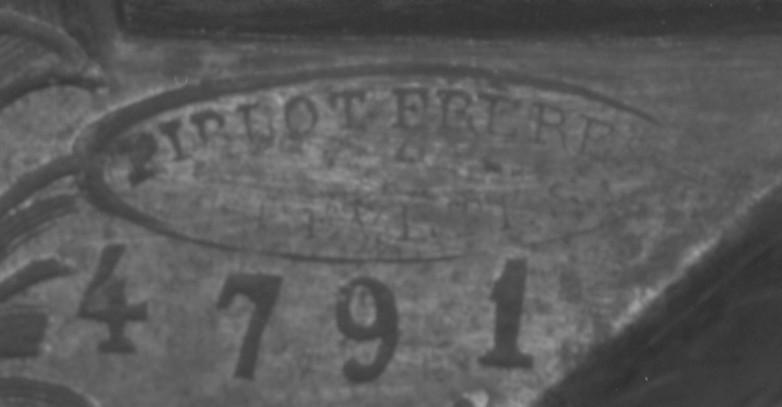
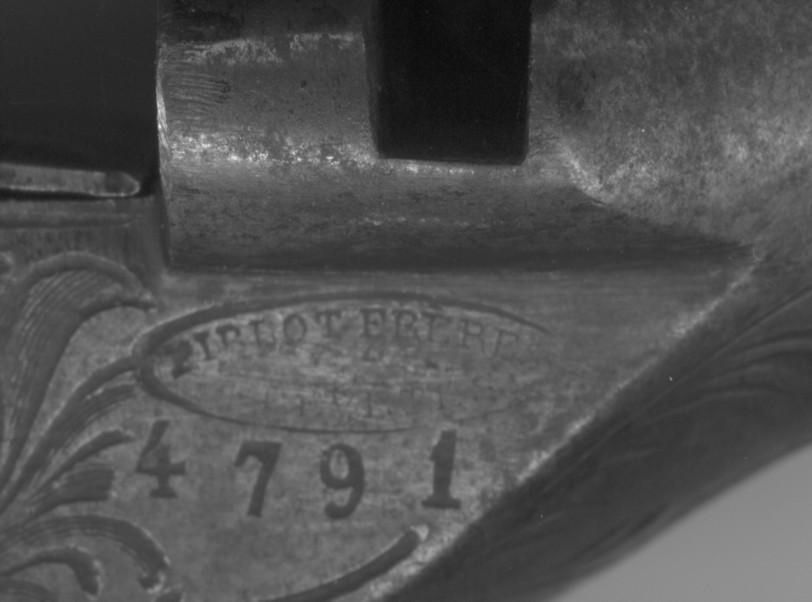
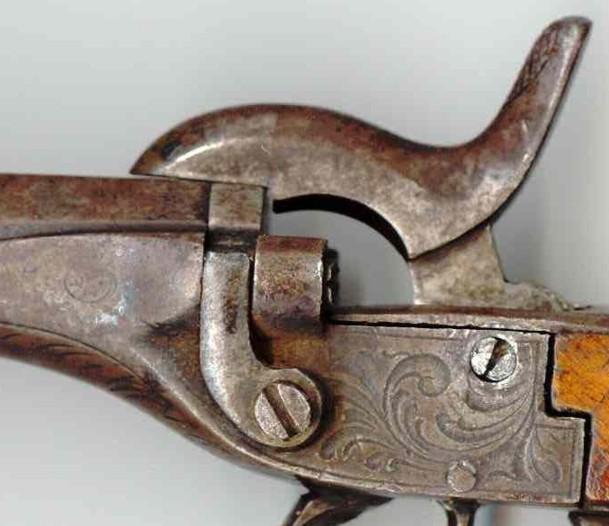
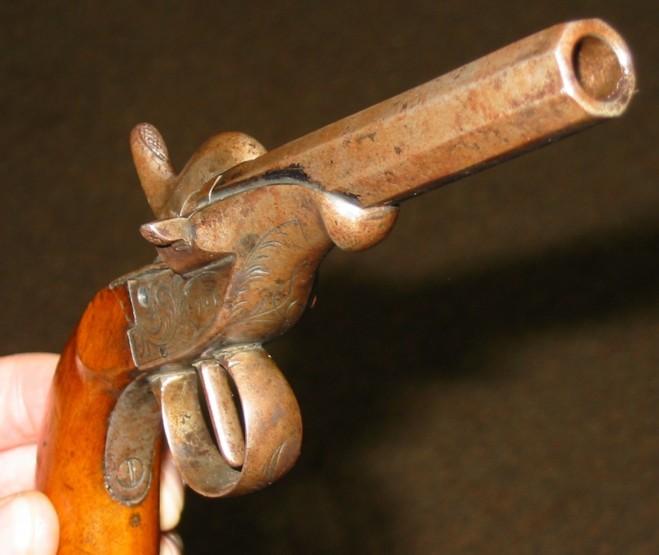
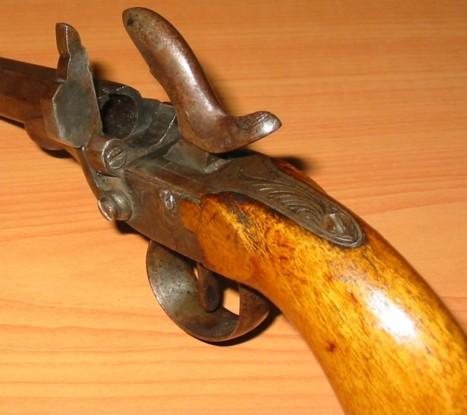
Pirlot Frères

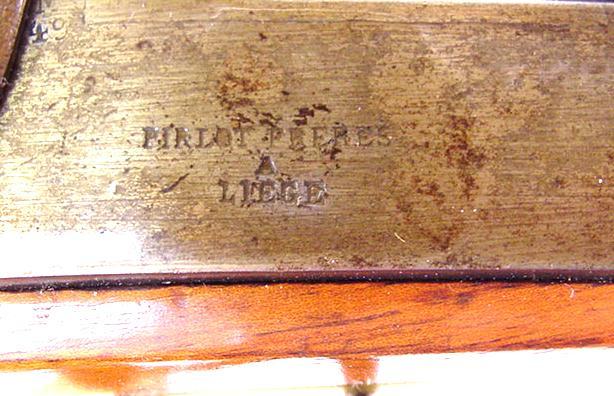
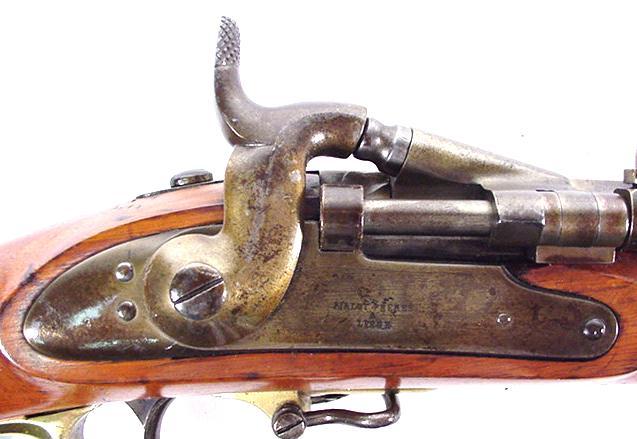
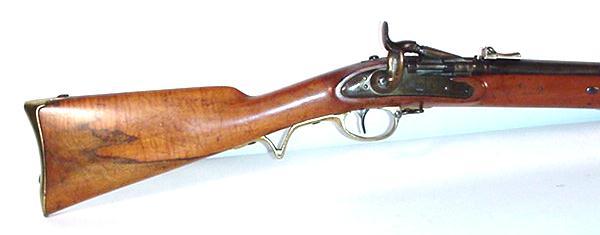
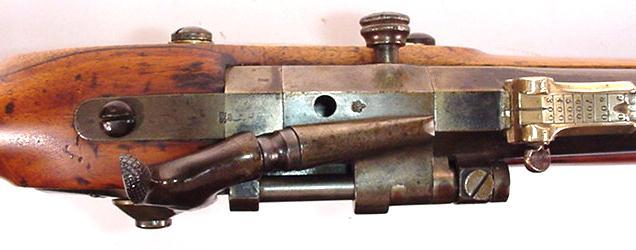
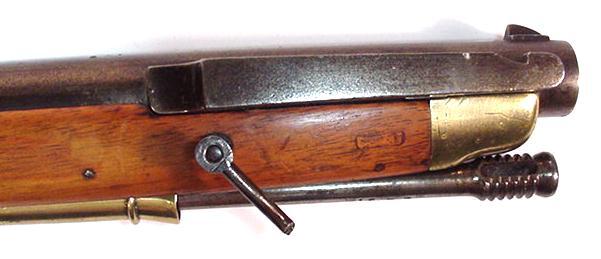

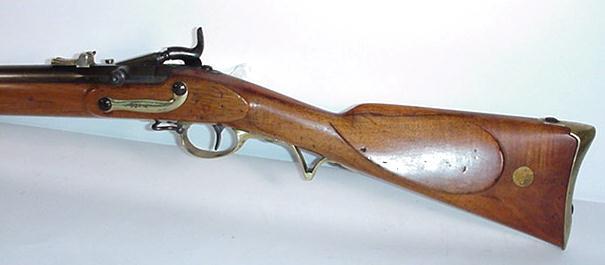
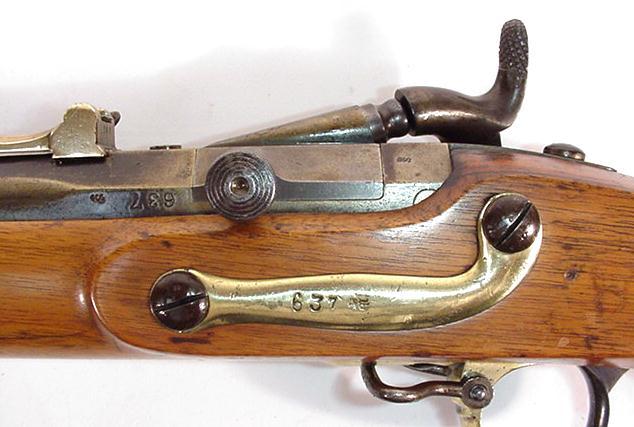
Pirlot Frères
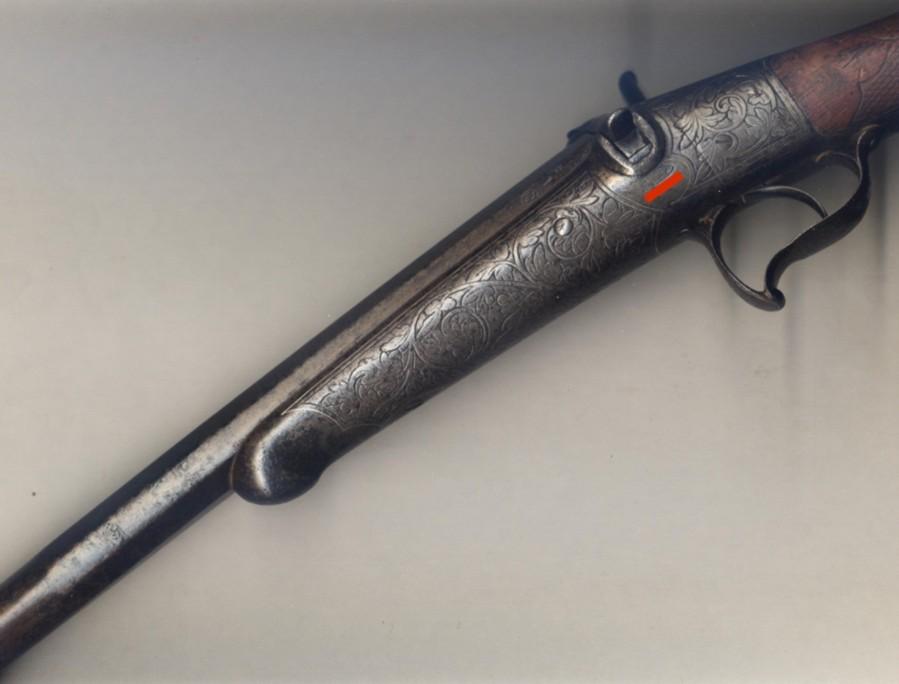
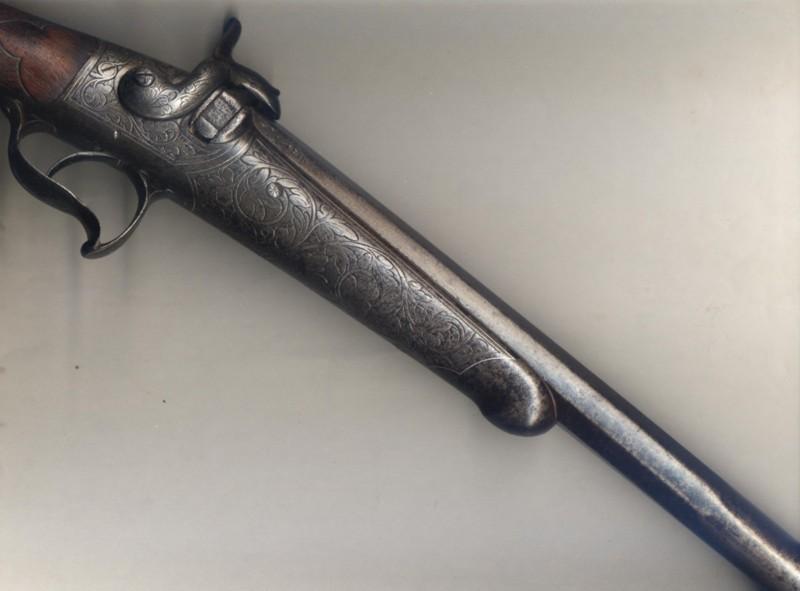
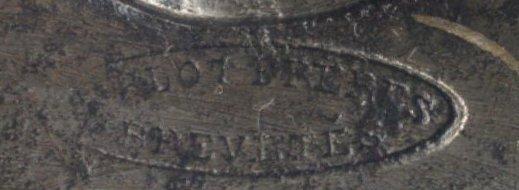

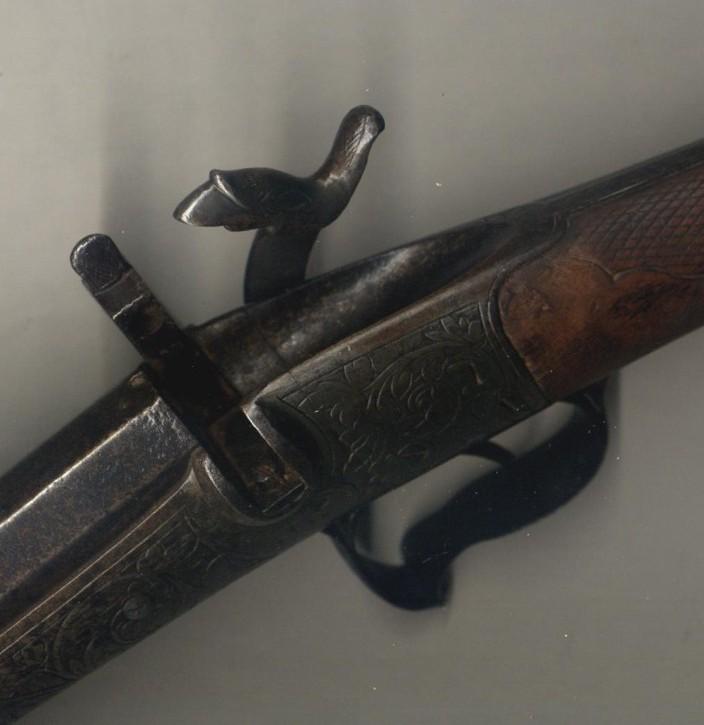
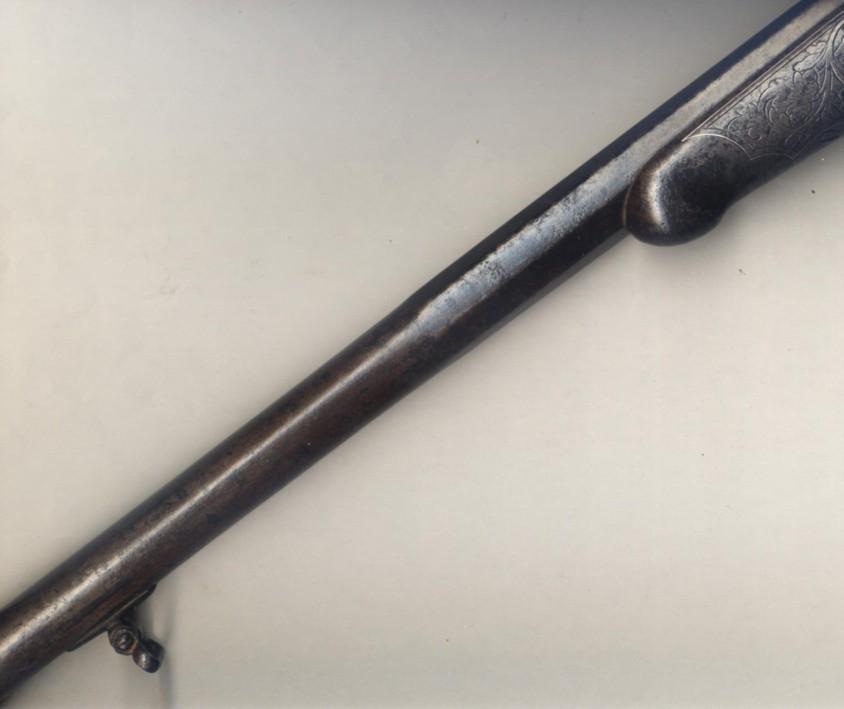
LIEGE PERCUSSION NAVAL RAIL (WALL) GUN
POSSIBLE CONFEDERATE PURCHASE, CIRCA 1860. 35 lbs. In weight and with 32" octagonal round barrel with 1 5/8" bore. Lock signed "Pirlot Freres a Liege". Iron mounted and stock appears to be of oak. Well weathered. Shows signs of having seen long service at sea.

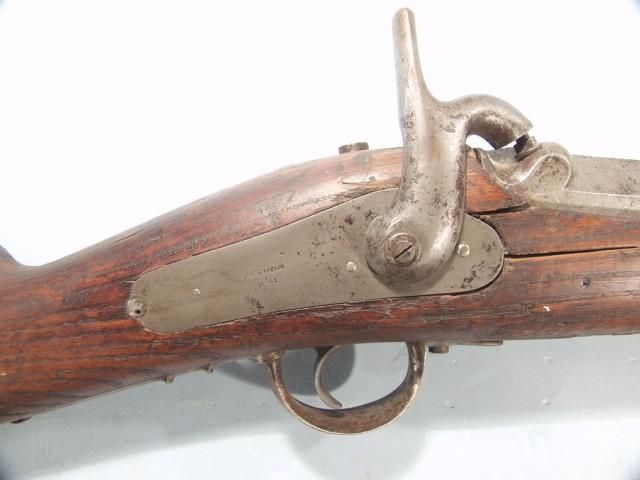



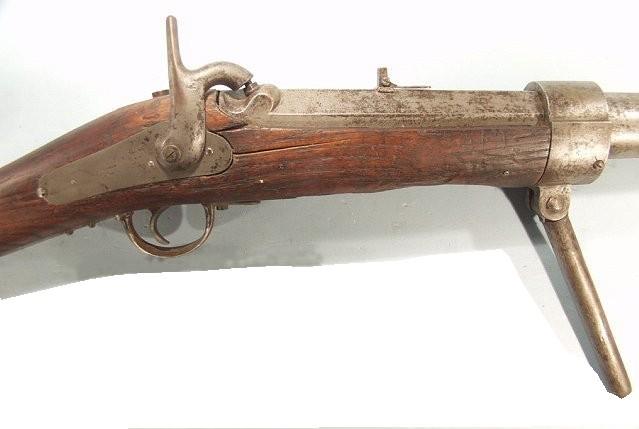
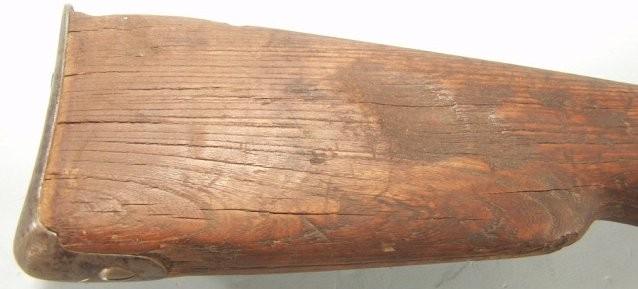
Pirlot Frères
model Abadie
Cal. 8mm
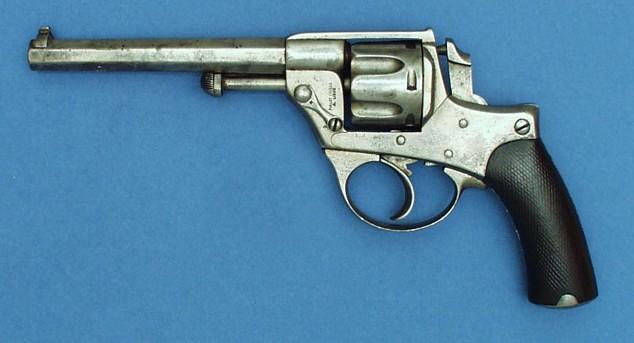
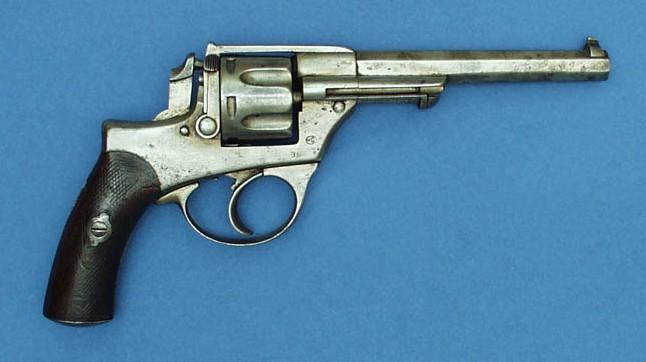

Pirlot Frères
Photos Littlegun
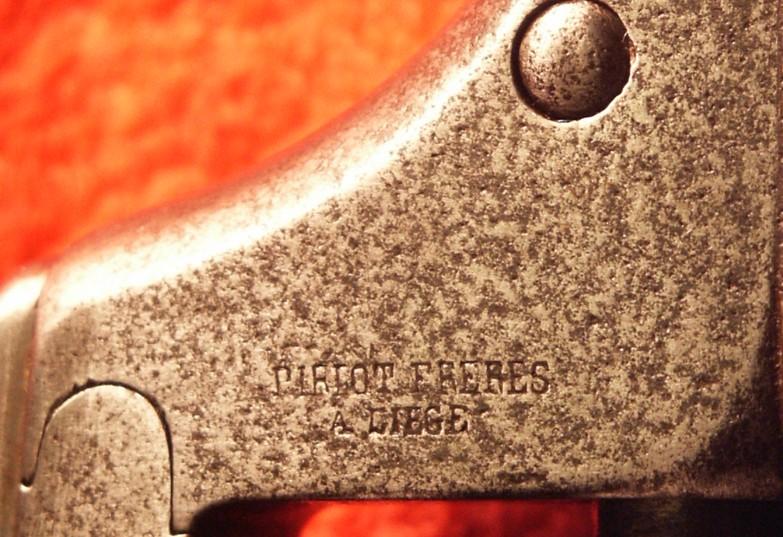
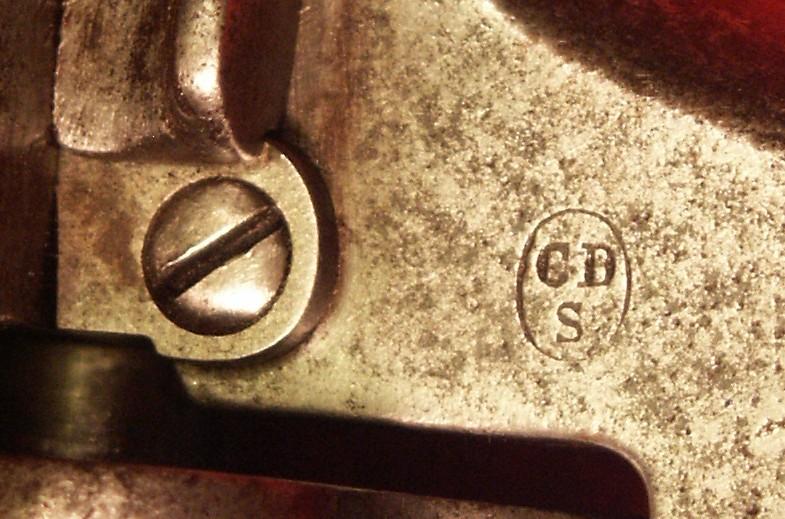
The same revolver
Photos Littlegun
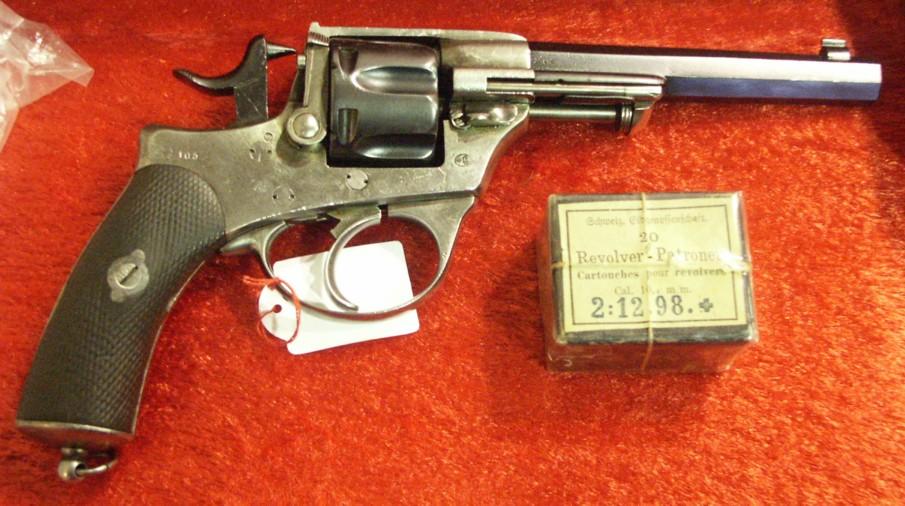
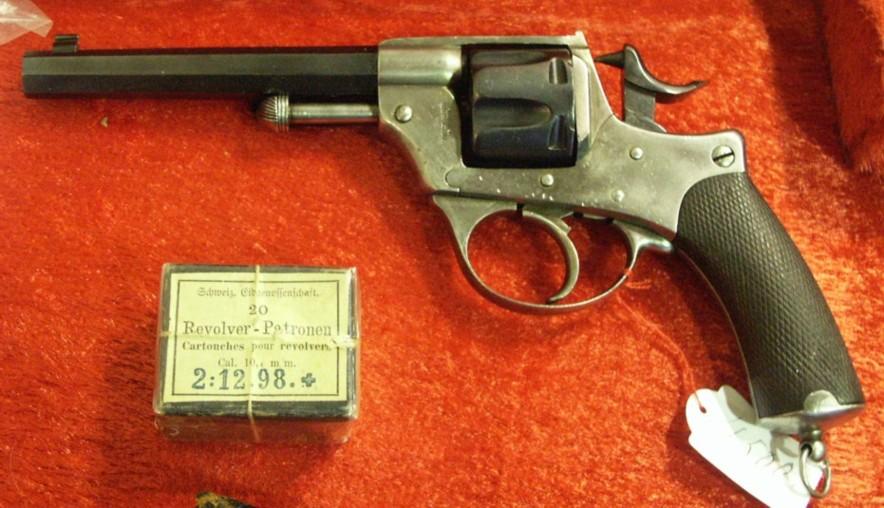

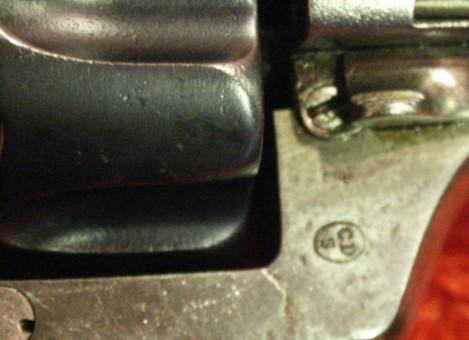
Pirlot Frères
Copied by "Glisenti"
Low on the page, Glisenti of the years 1874- 1880: it is the Model of ordinance manufactured under licence Chamelot Delvigne for the Royal cavalry, the alternative (very rare) with short gun, by Pirlot Frères, Liége.
Alberto Riccadonna
Little history
Gustave Henri Delvigne (ex-officer of the French Army), prolific inventor, meets in 1861 J Chamelot (arms manufacturer at Fusnot in Brussels - is it Belgian?), they create the revolvers baptized "left-handed" (door of loading on the left) for cartridges with pin.
These revolvers are manufactured by the establishments Pirlot Frères in Liege (here we are). May 25, 1871, they deposit a patent for a revolver with central percussion which always Pirlot Frères manufactures.
The Belgian army orders of them some specimens by way of test.
In 1872, the Swiss army adopts it like lawful in 10,4 mm.
The same year, the kingdom of Italy makes in the same way with the gauge of 10,35 mm (10,4 kif-kif-kif). In 1873, with the tower of France under names Mle 1873 (troop) or Mle 1874 (officer) with the gauge 11 mm (makes some 11,4) (famous the 11 mm of our friend in Spirlet: to see file identification) or for the Royal one (Navy) in 1877 pennies the name Mle 1873 M in 12 mm.
And finally in an anecdotic way in 1884, Swedish navy.
Prestige flashes back on the Pirlot firm which will market also its weapons for the civil market and the officers and under reserve officers which traditionally buy their weapon. But they do not manage to satisfy all the requests and other firms inhabitants of Liège (Lepage Frères...) propose their own models (450 and 380).
Short "or" light "Mle presented one 1874" (shortening of the gun of Mle 1872), is Chamelot-Delvigne manufactured by Pirlot Frères.
Mle 1889 (first revolver to carry Glisenti name) – arms posterior which remains of Chamelot-Delvigne design, always with the gauge 10,35 mm (10,4) are thus a copy (improved and economic) of the weapons manufactured by PIRLOT Frères.
It was manufactured until in the years 1920 and was always in equipment in certain units into 40-45!!!
In short: not to confuse Mles Italian with Mles Swiss and French (octagonal guns and/or rounds - reinforcement of the hammer among Italian from which the form is different (it would be broader).
HPH
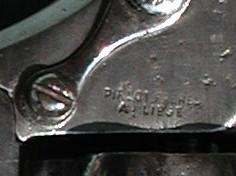
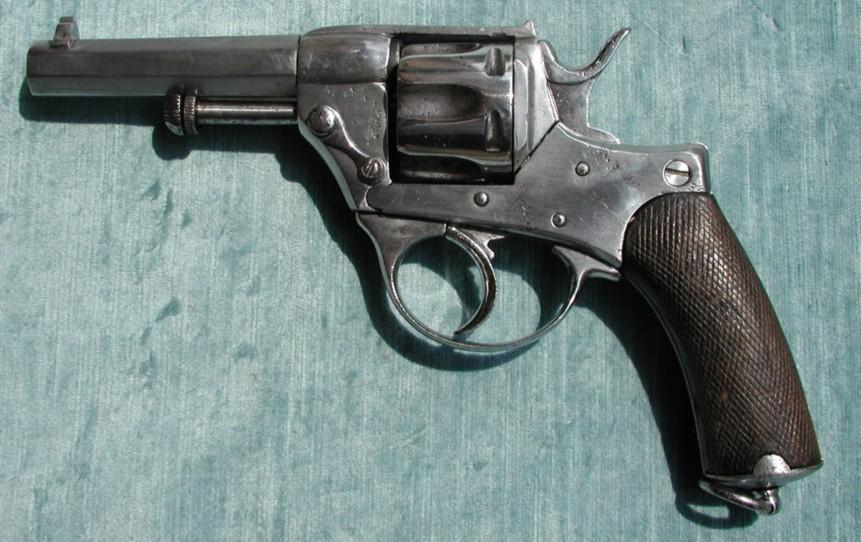
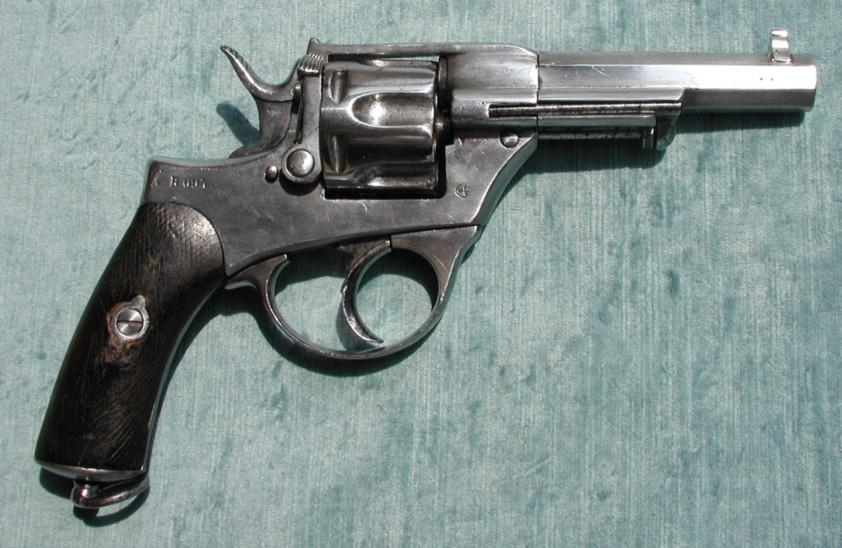
Comparison to Glisenti 1874 and Pirlot
| Pirlot | Glisenti |
|
|
|
Technicals details Glisenti (same to Pirlot)
